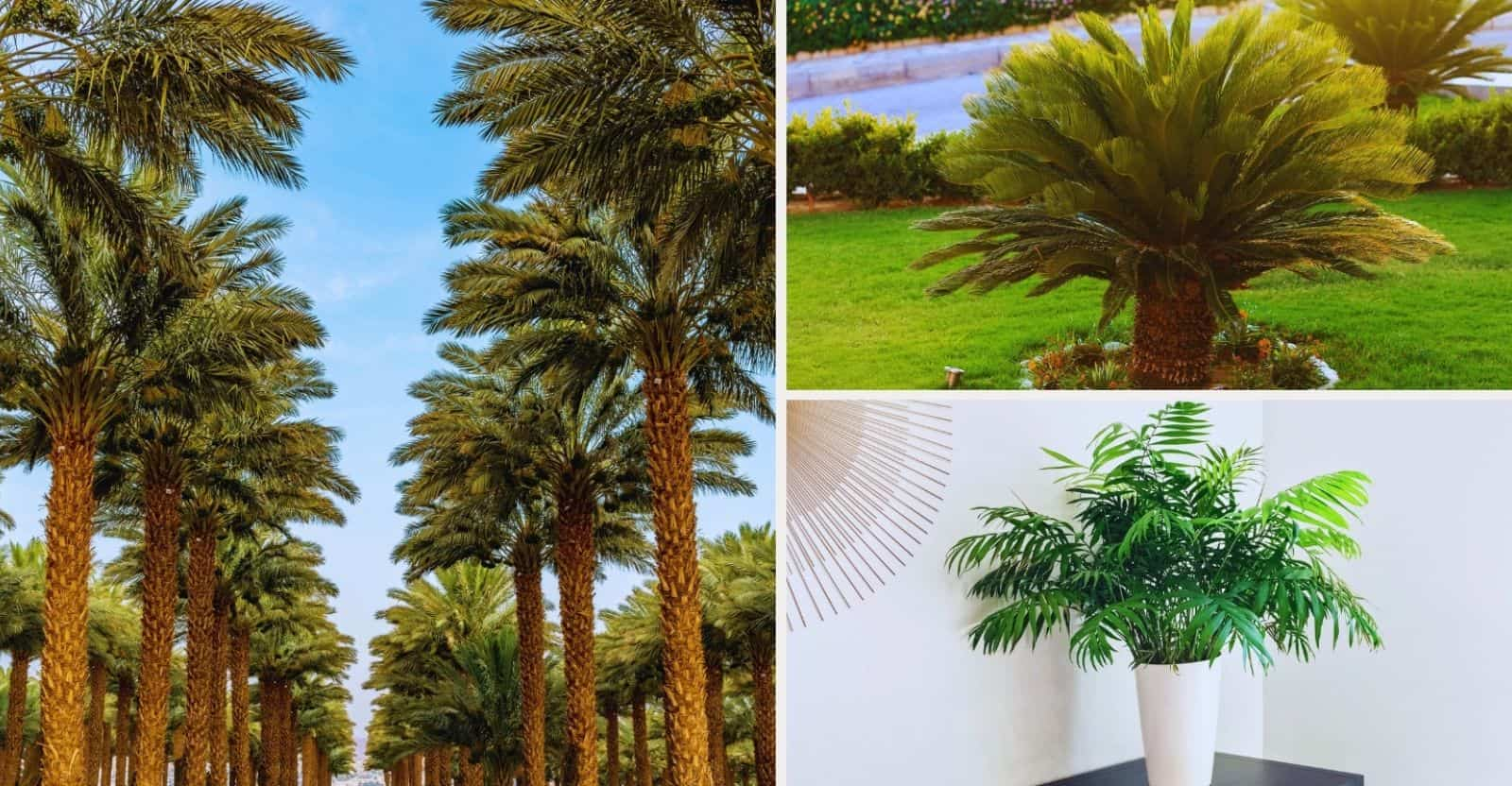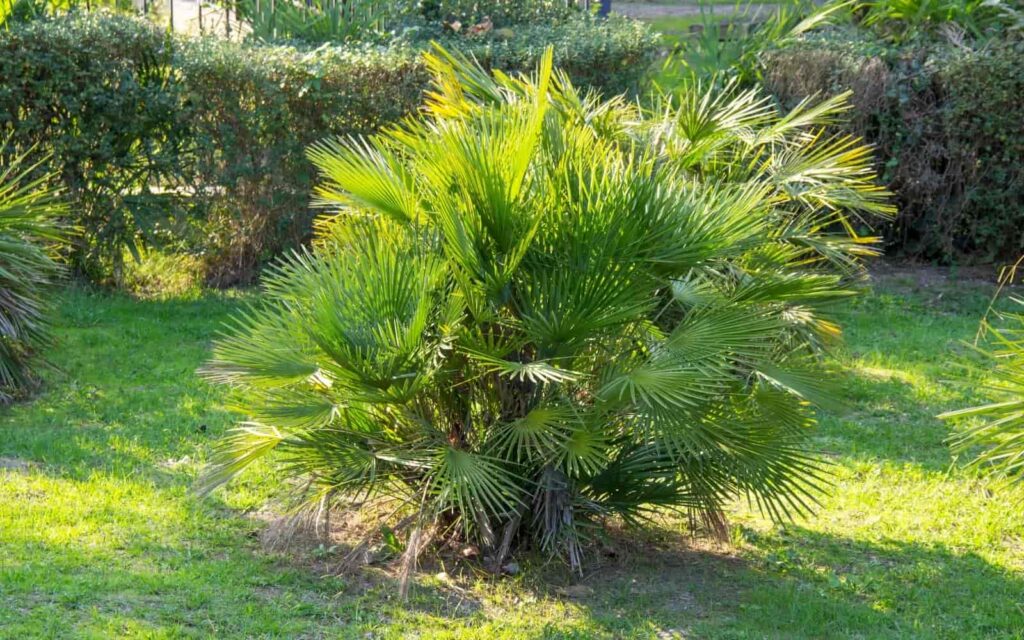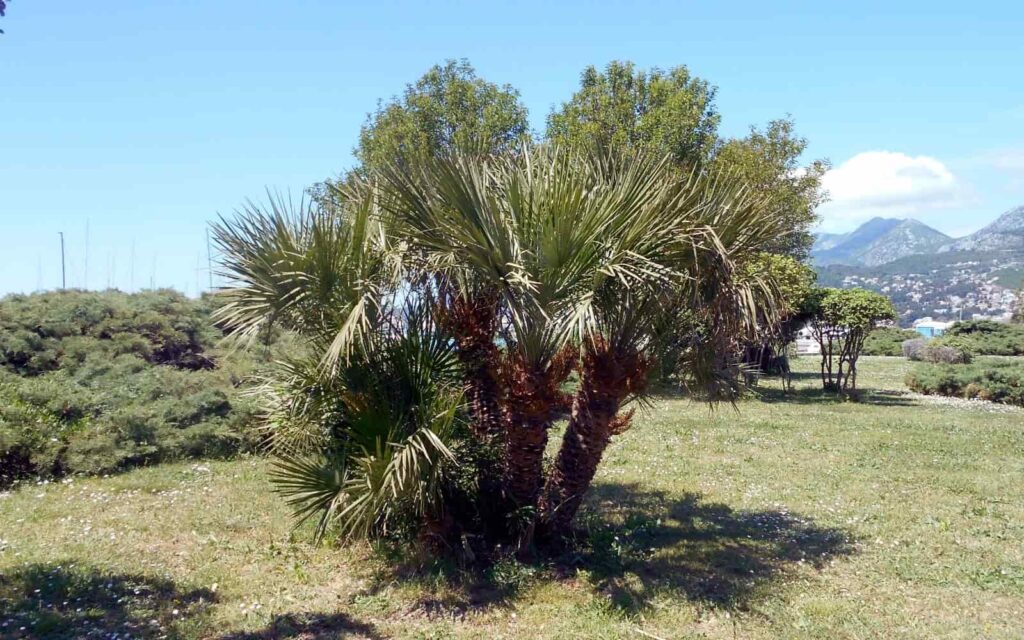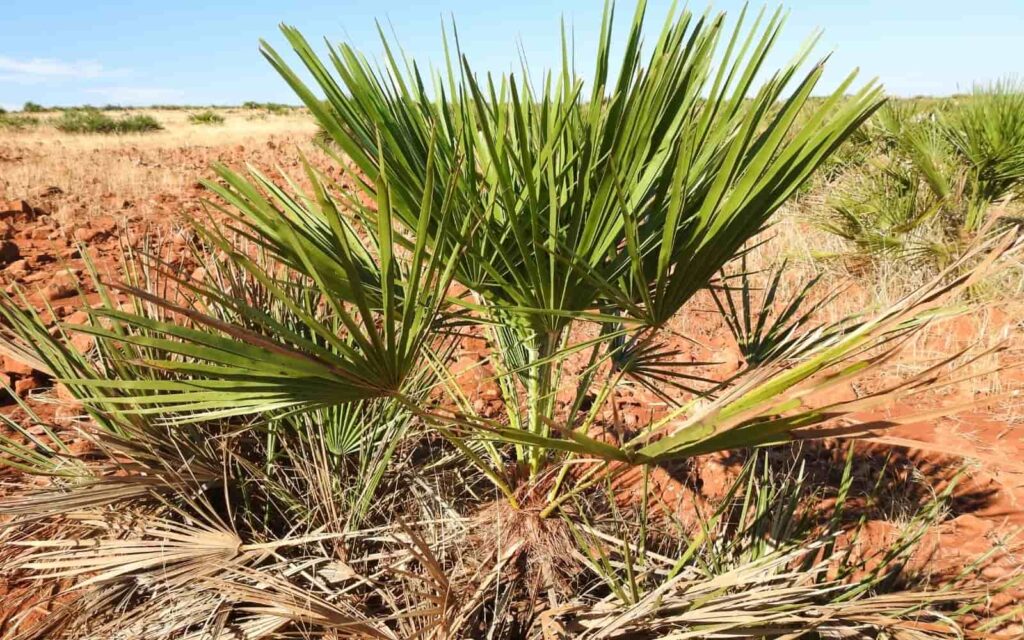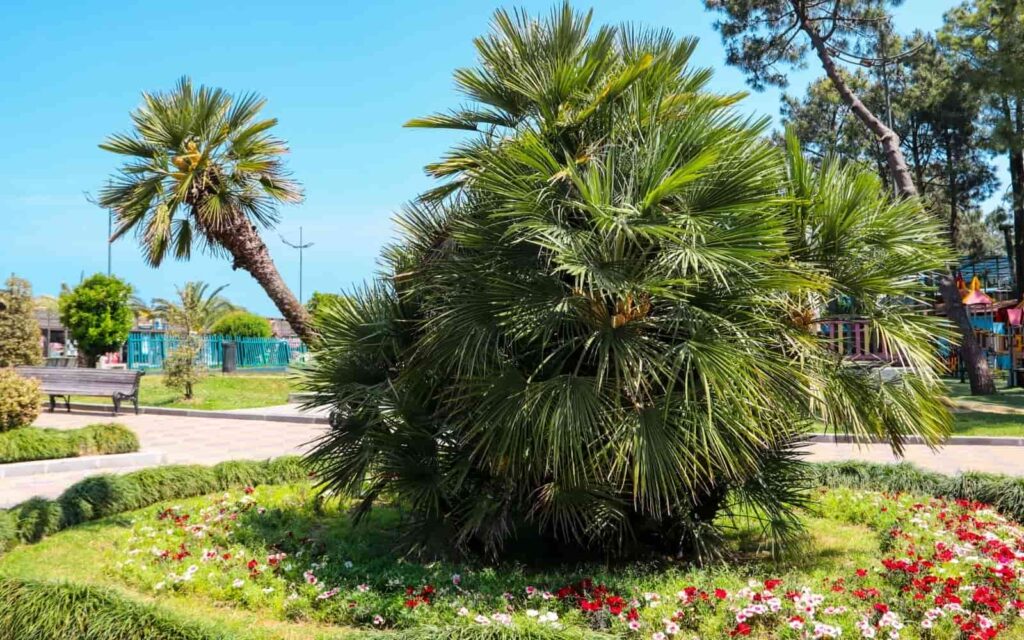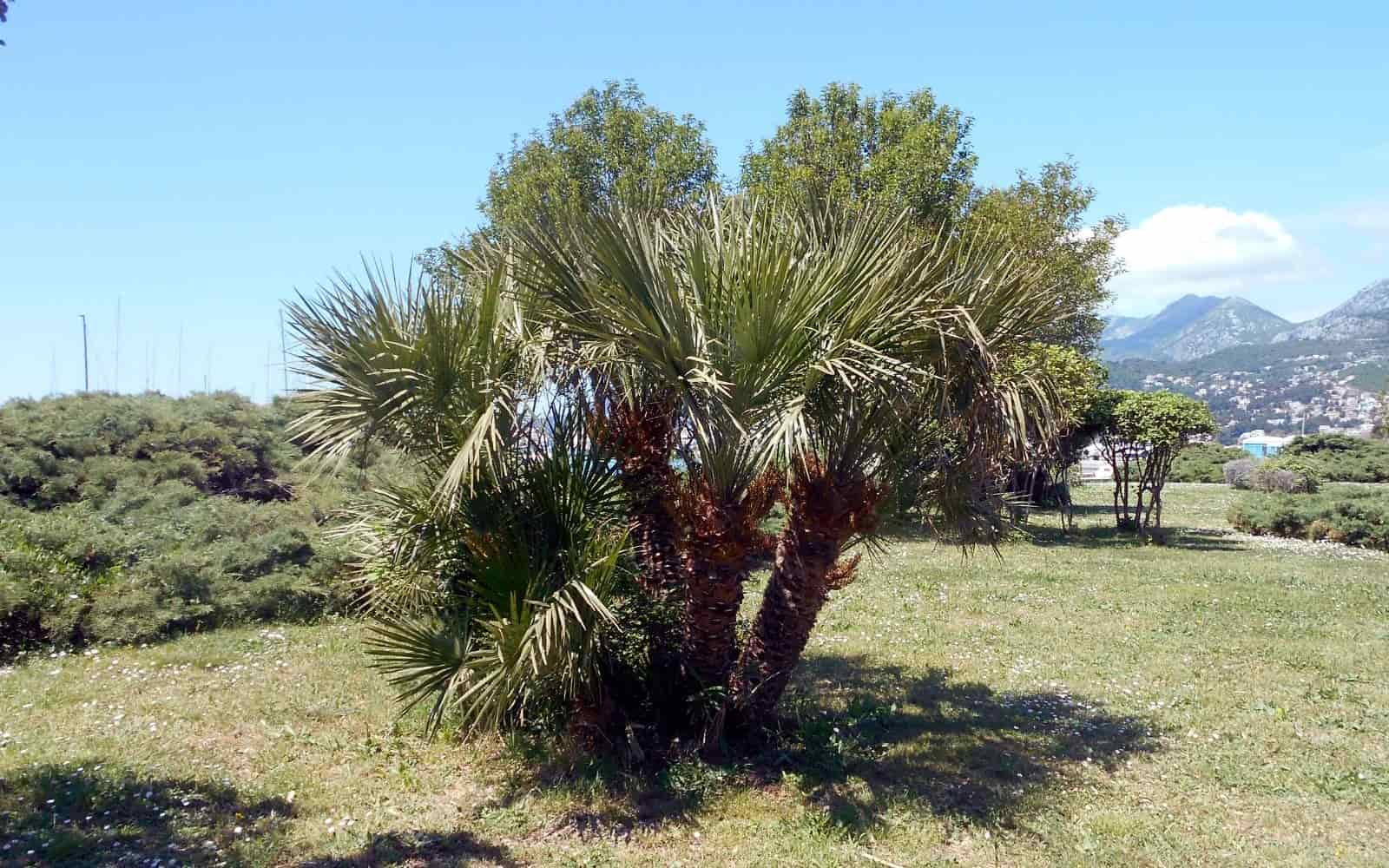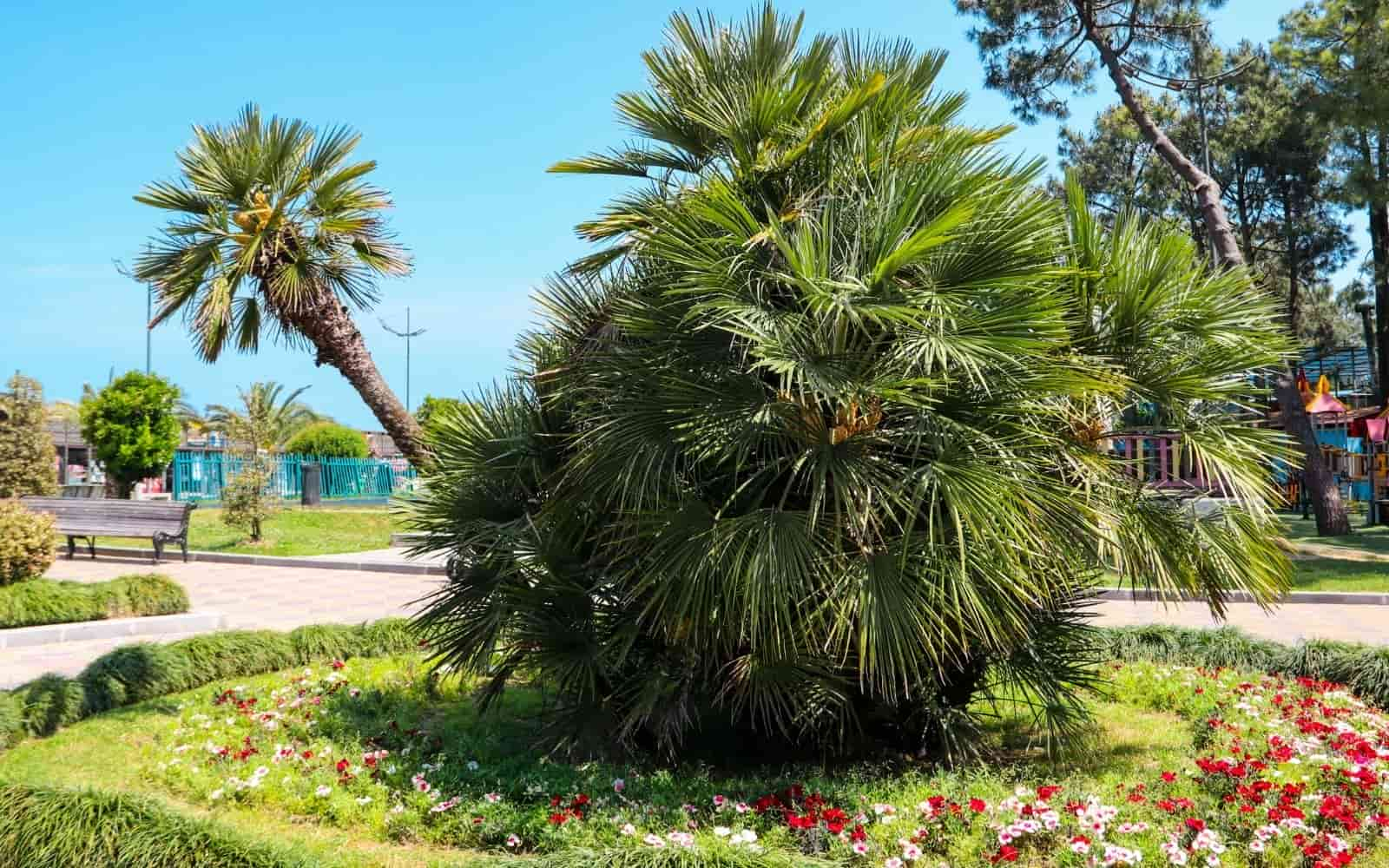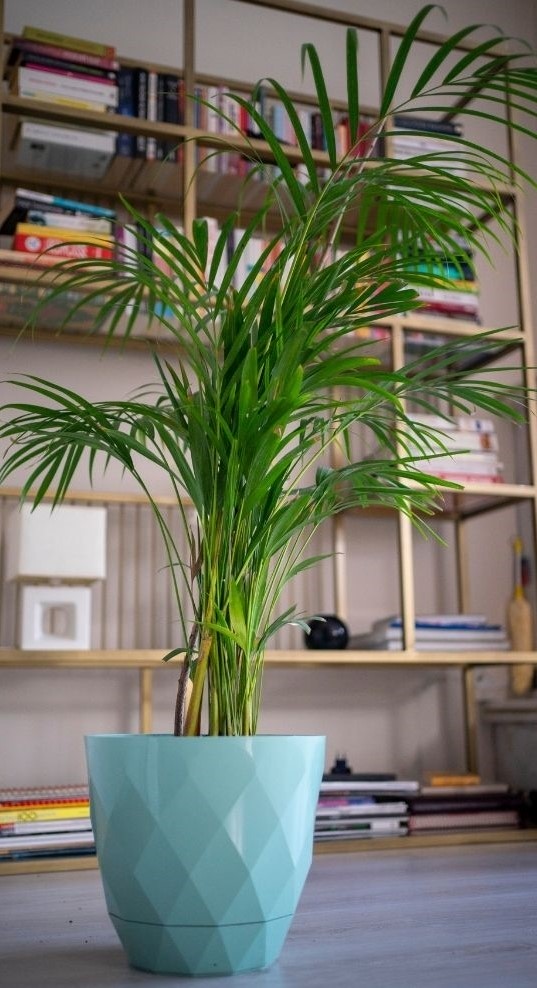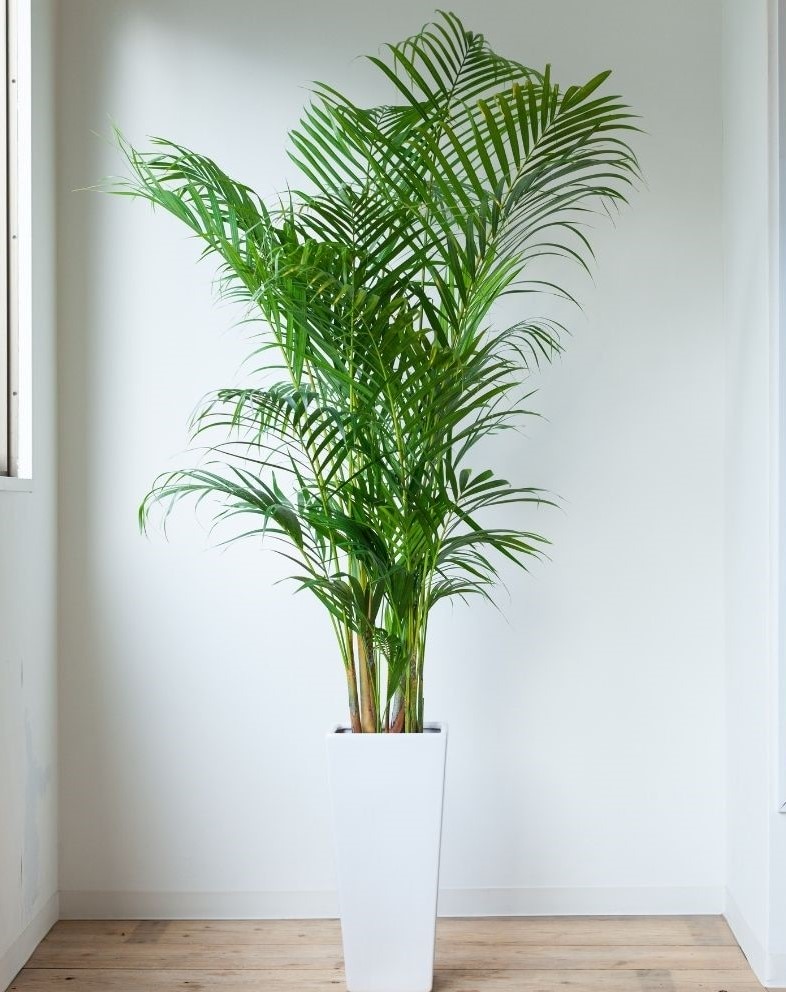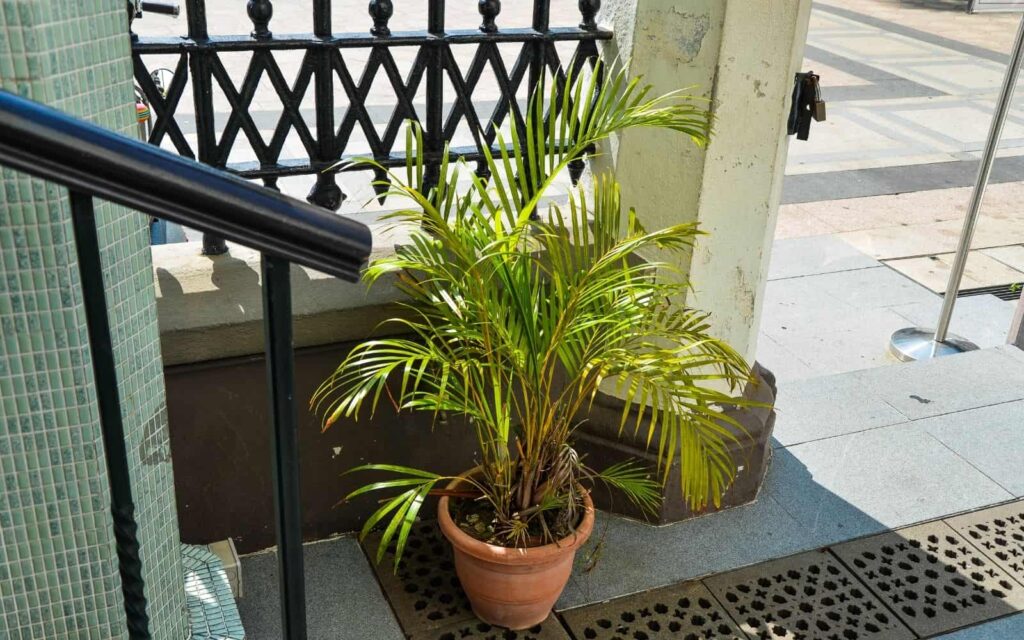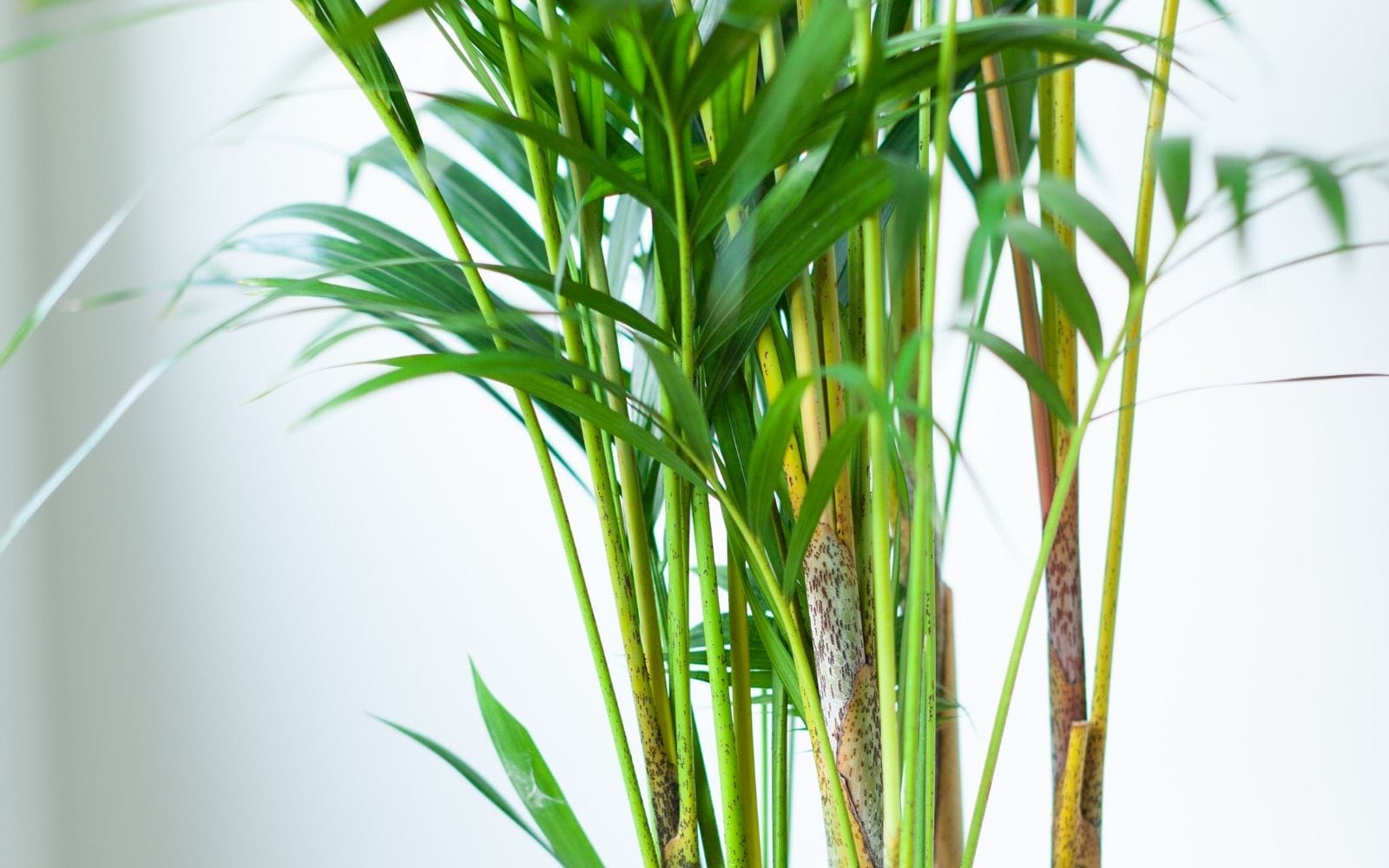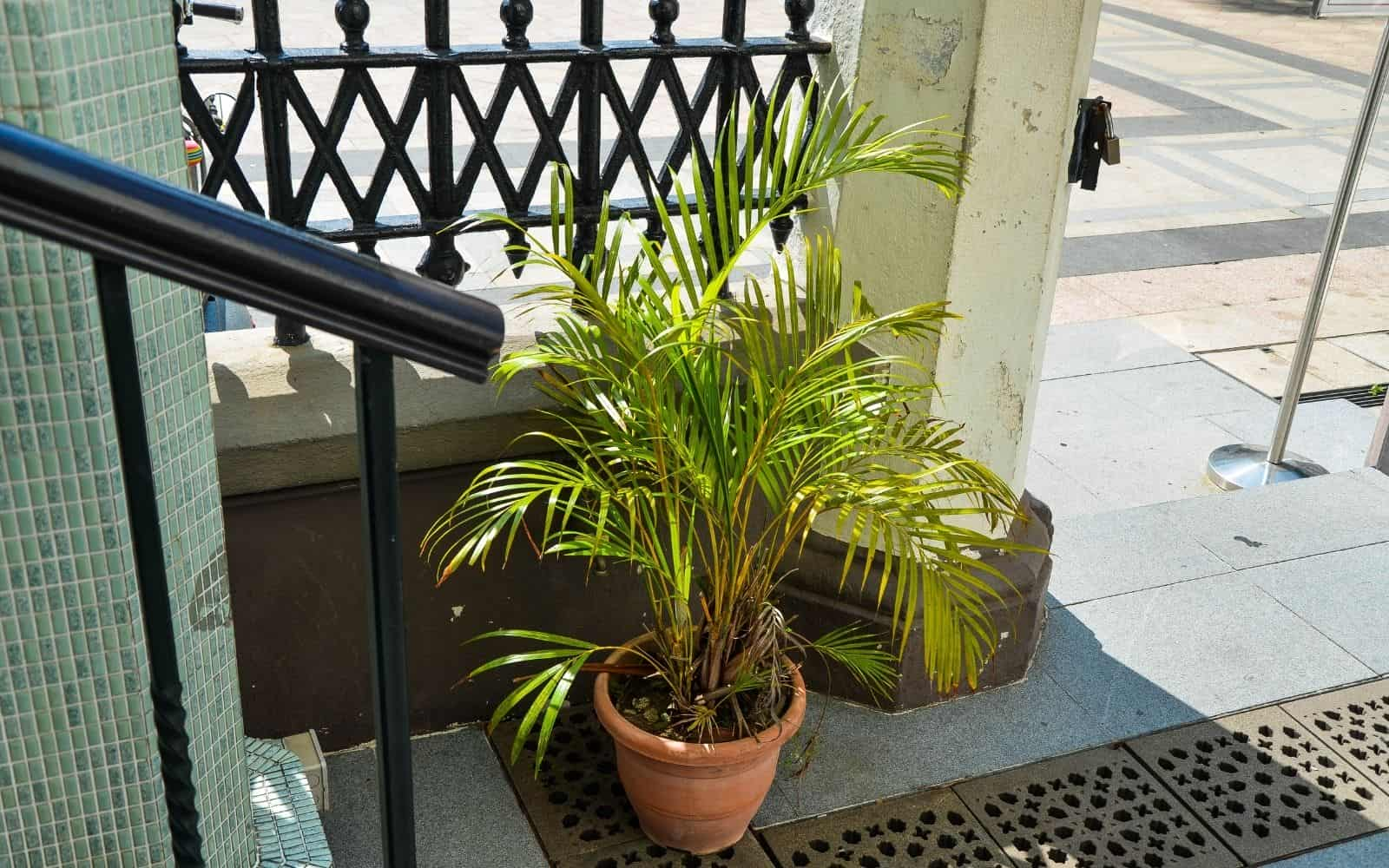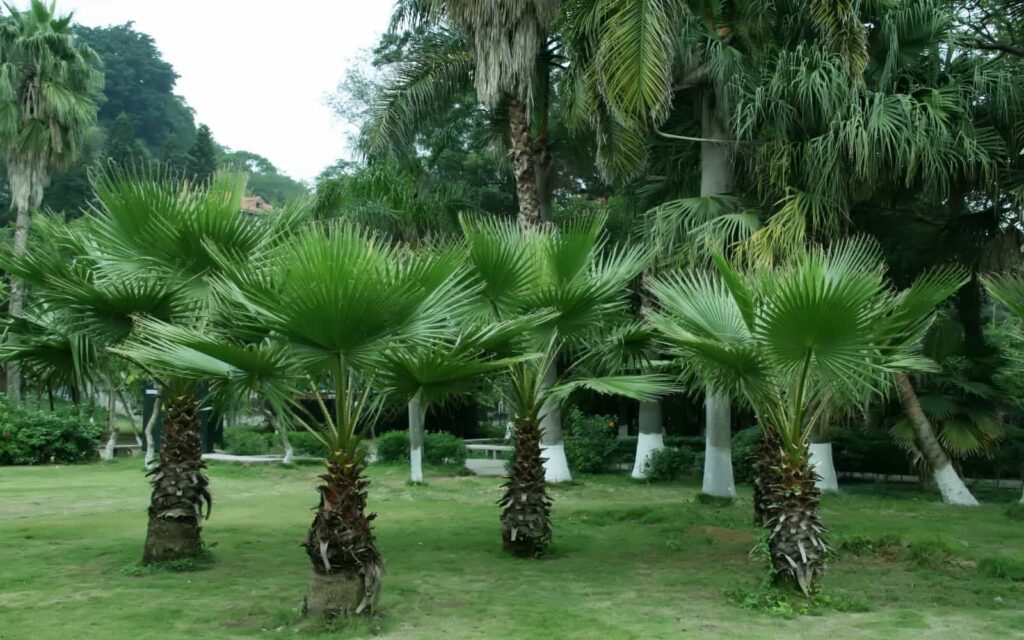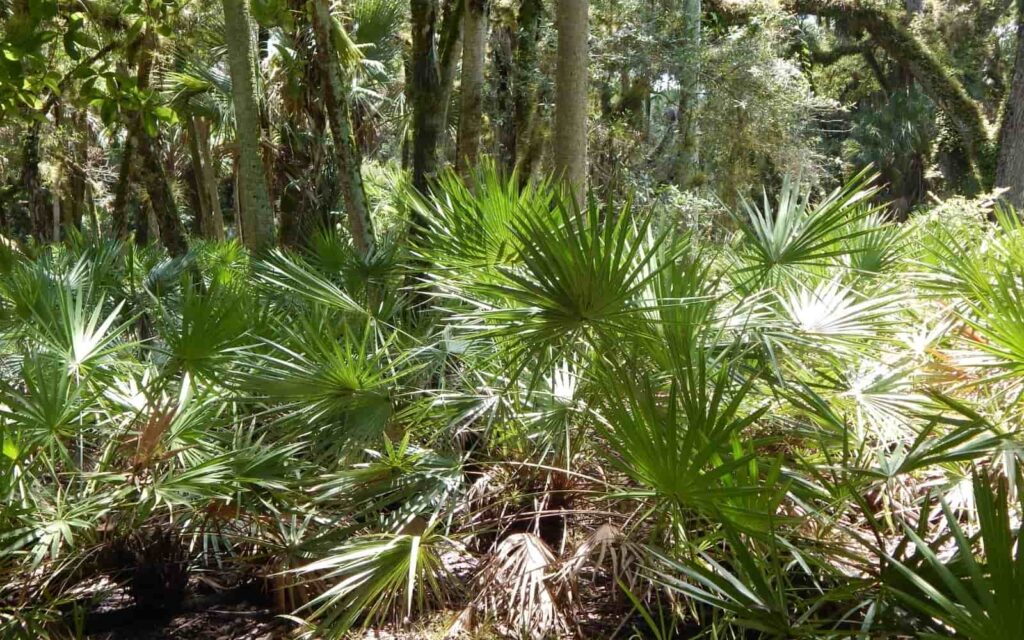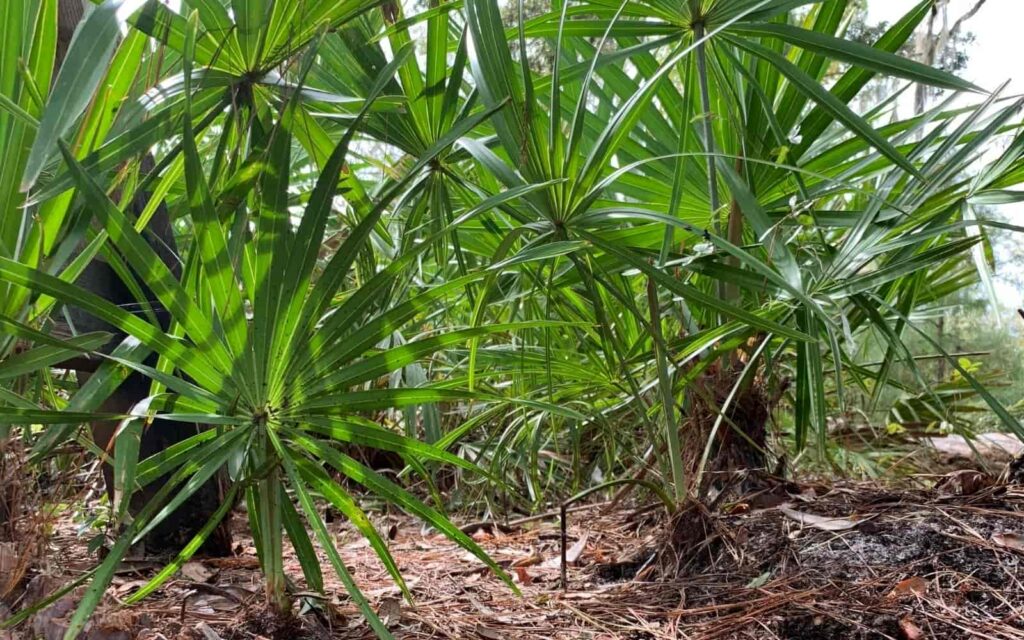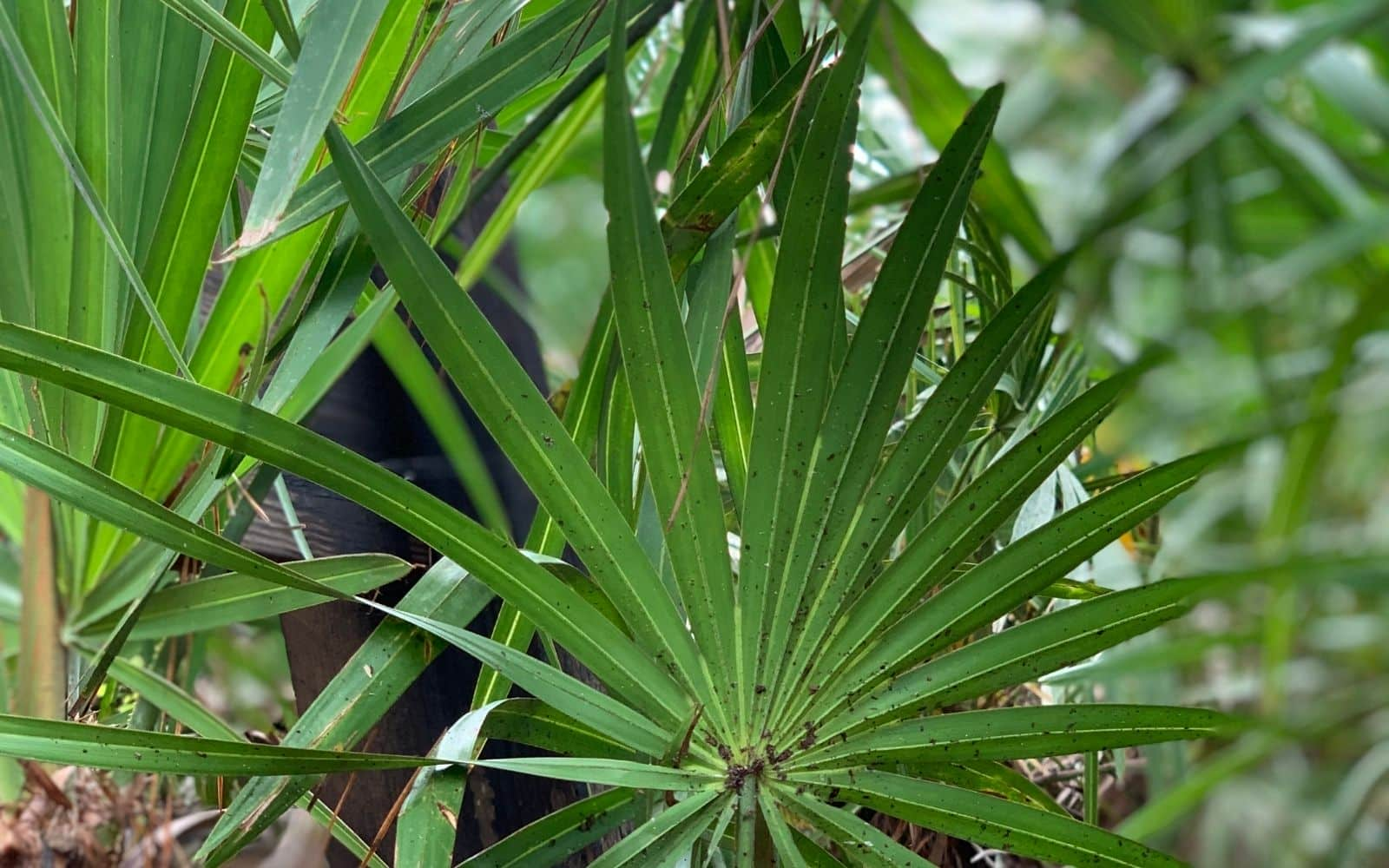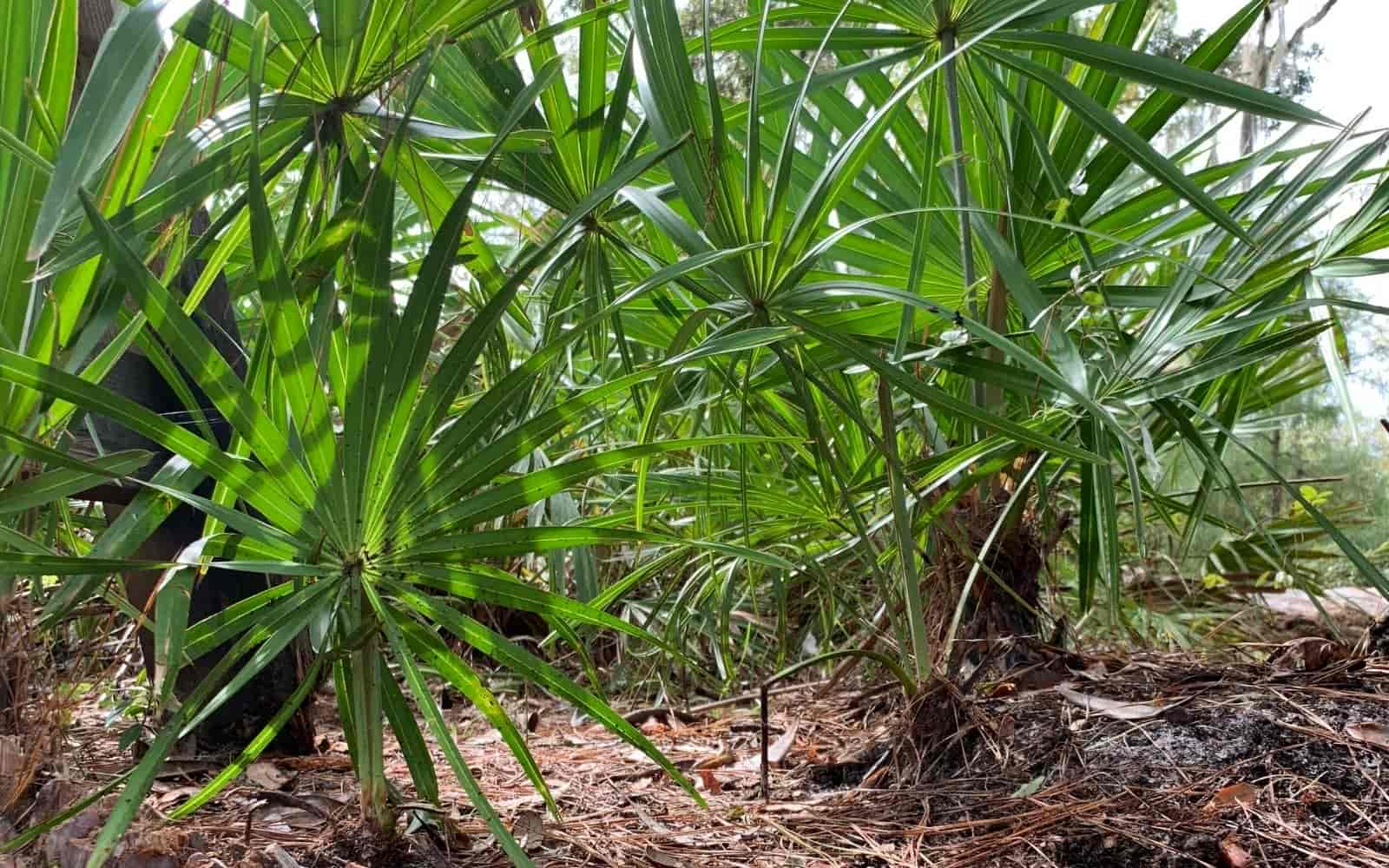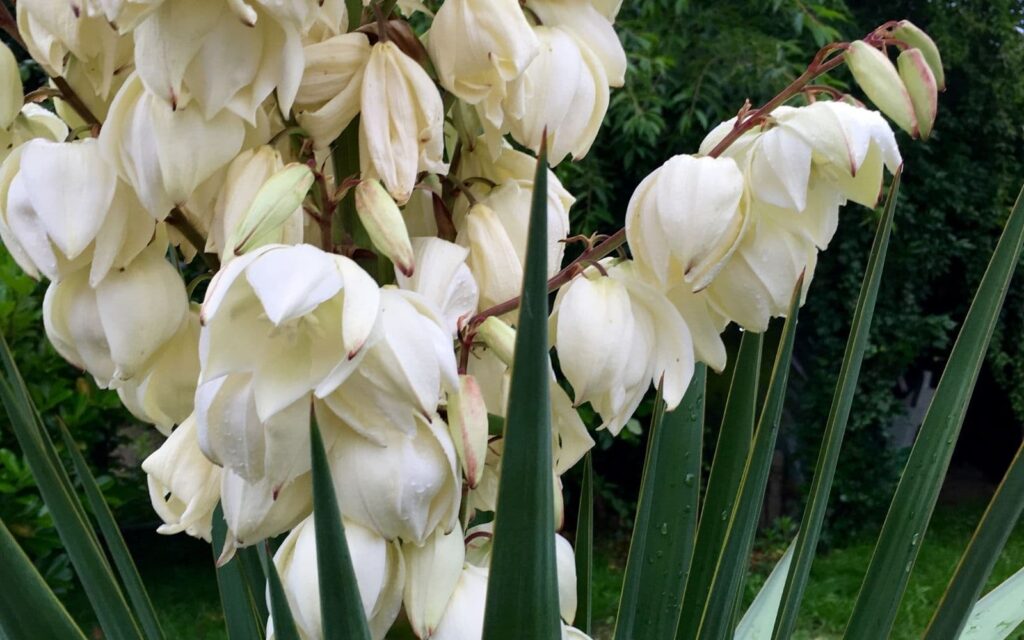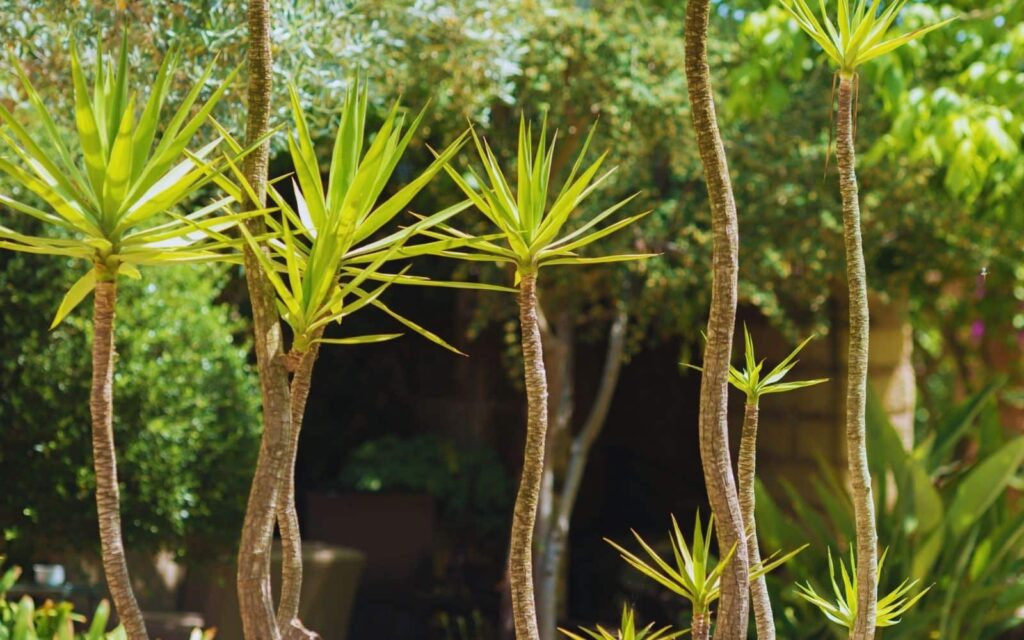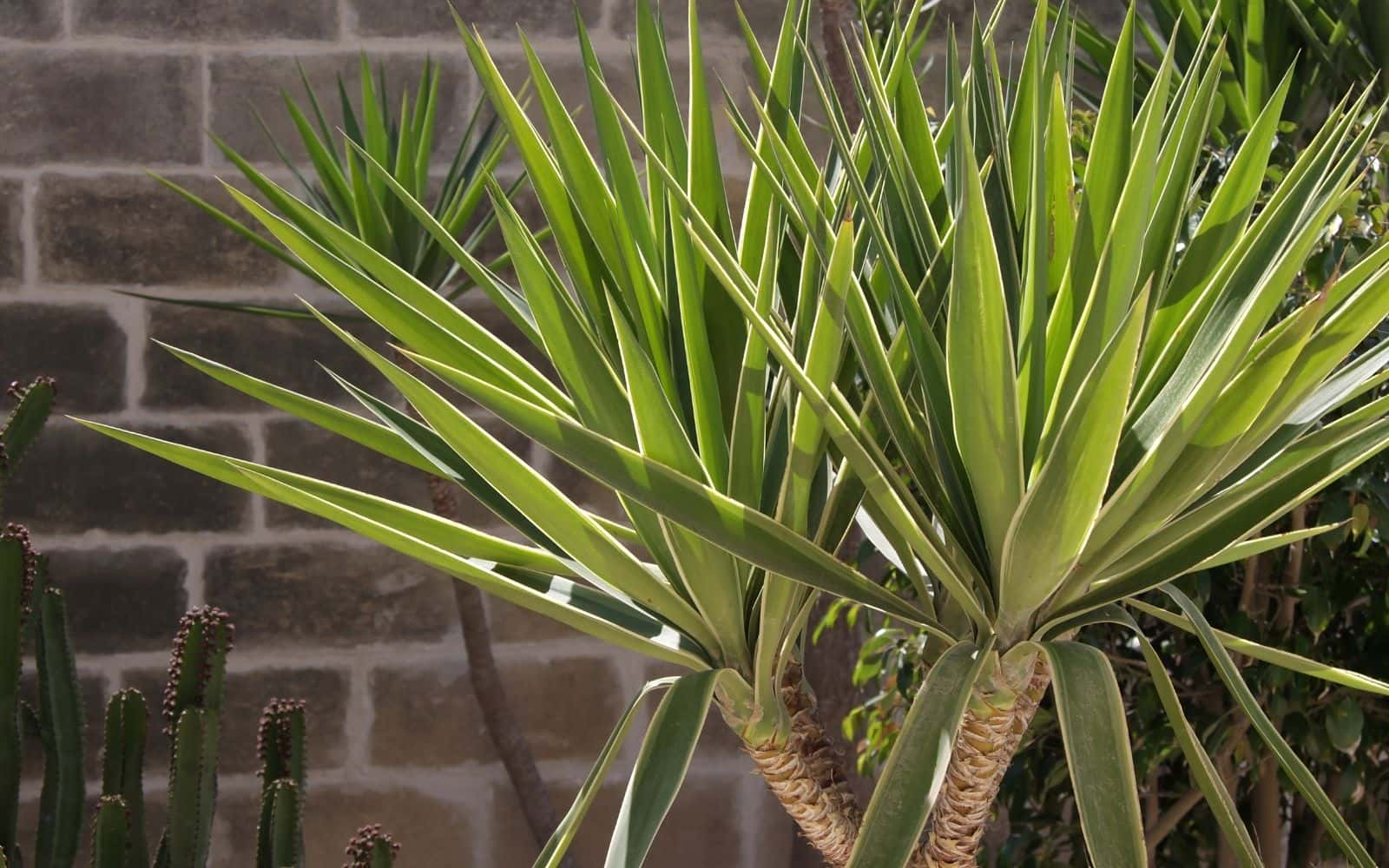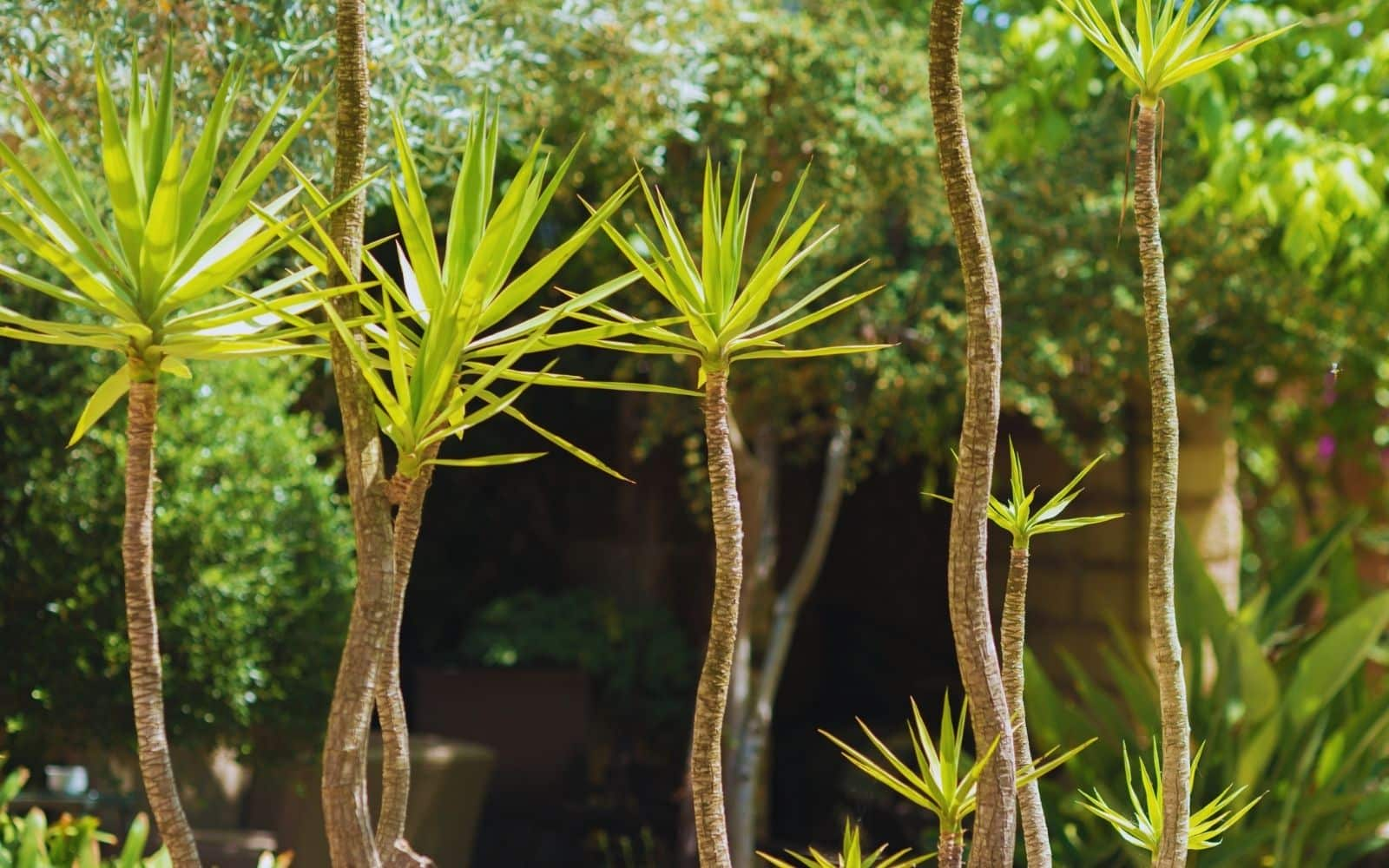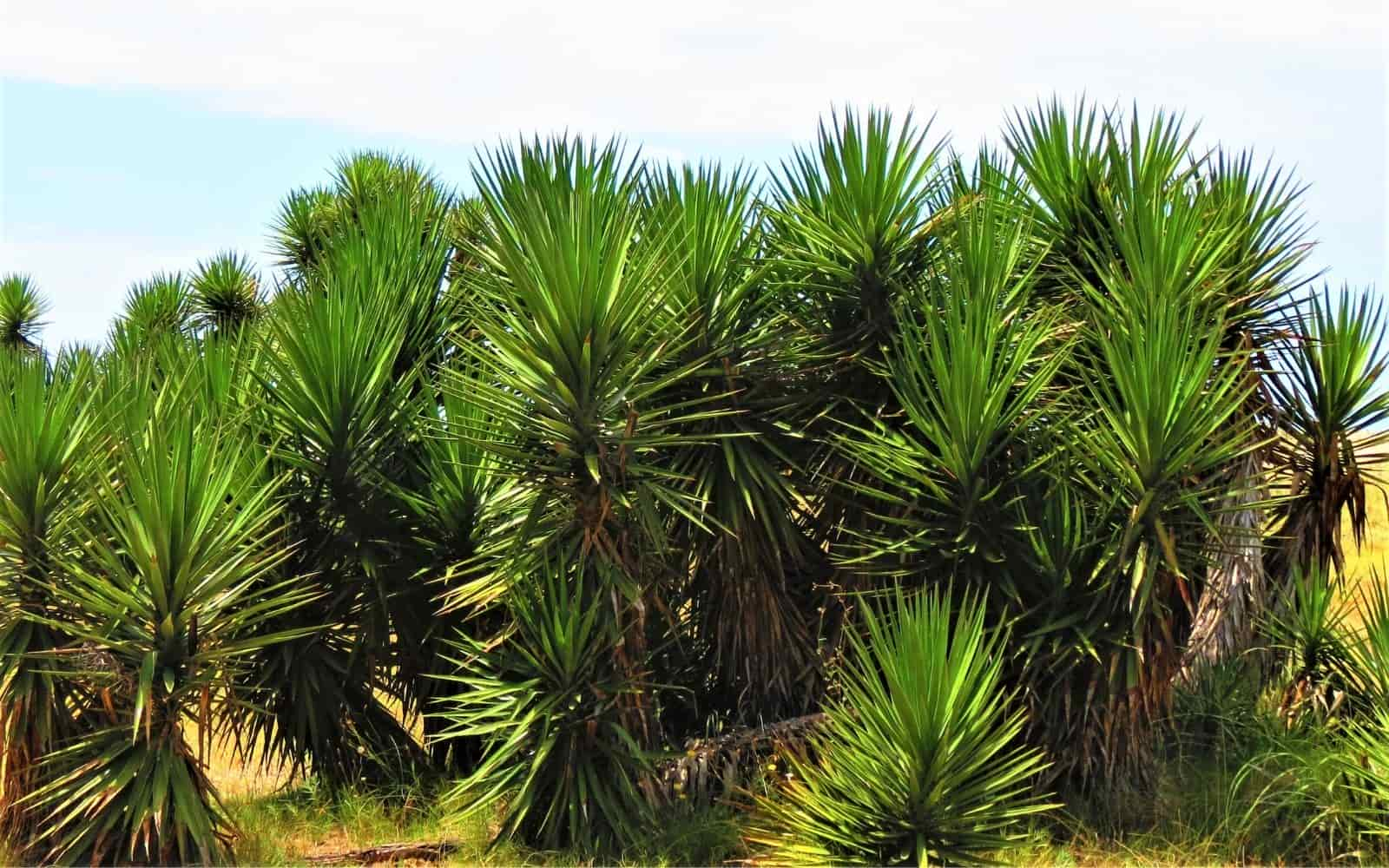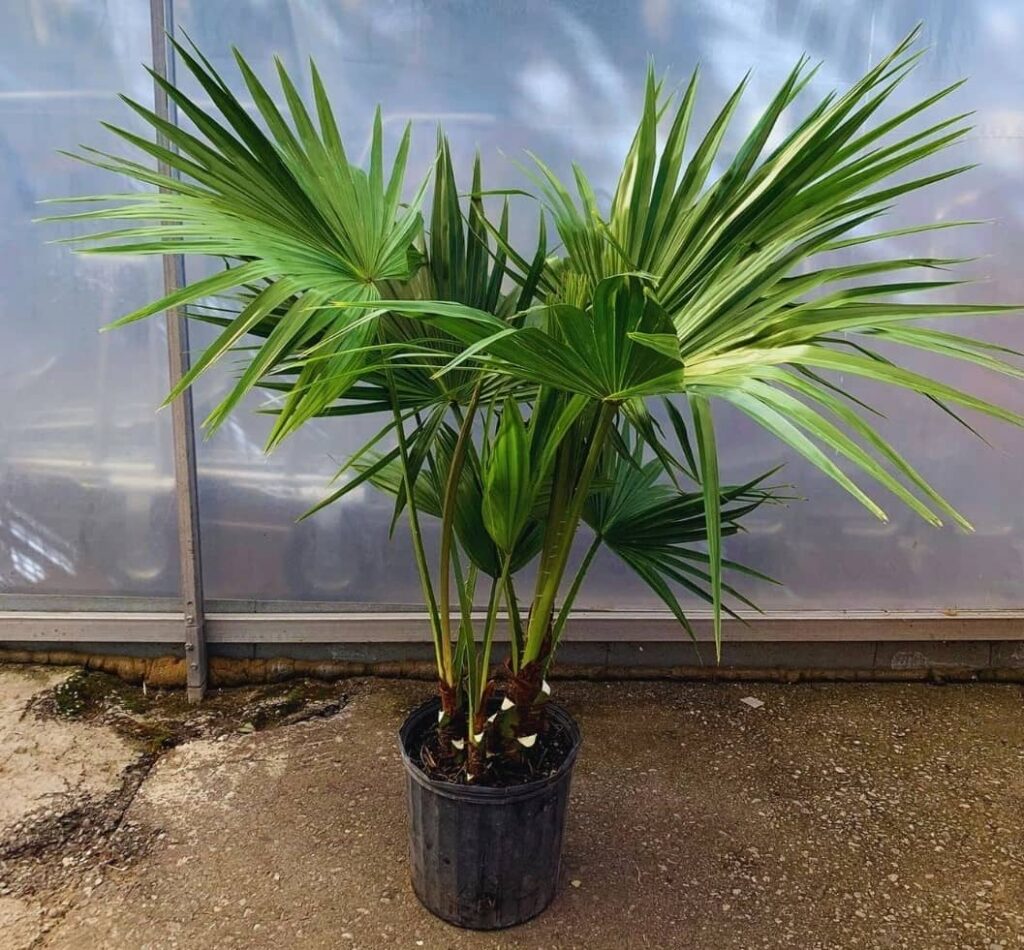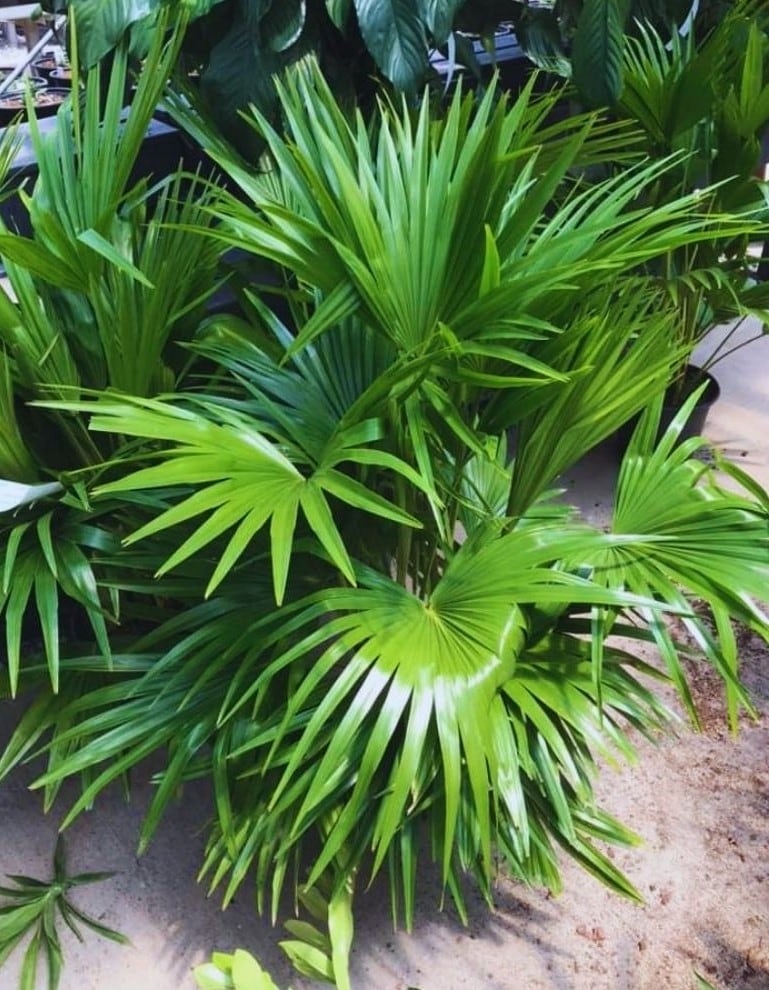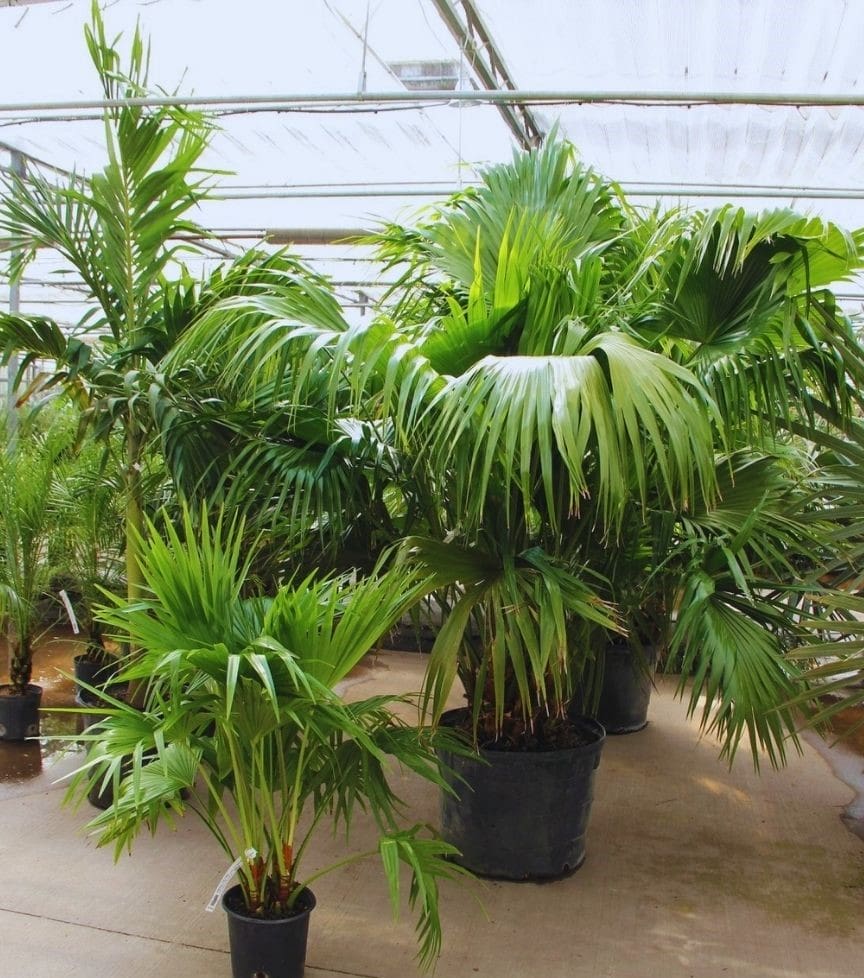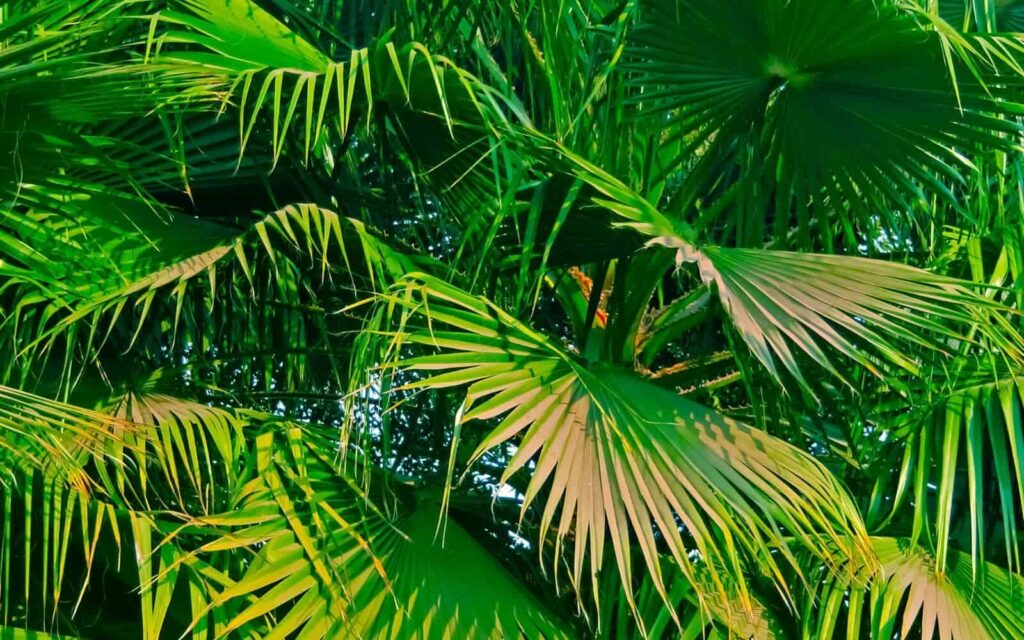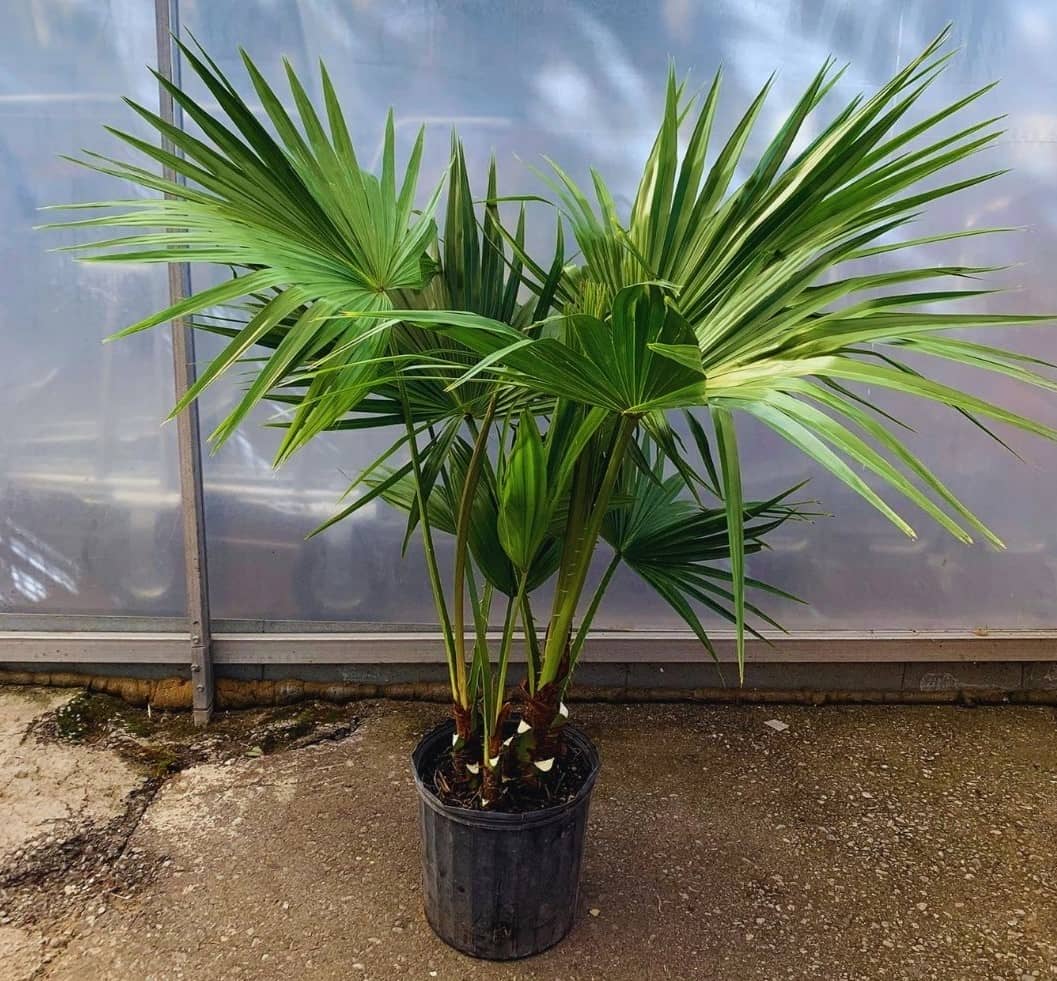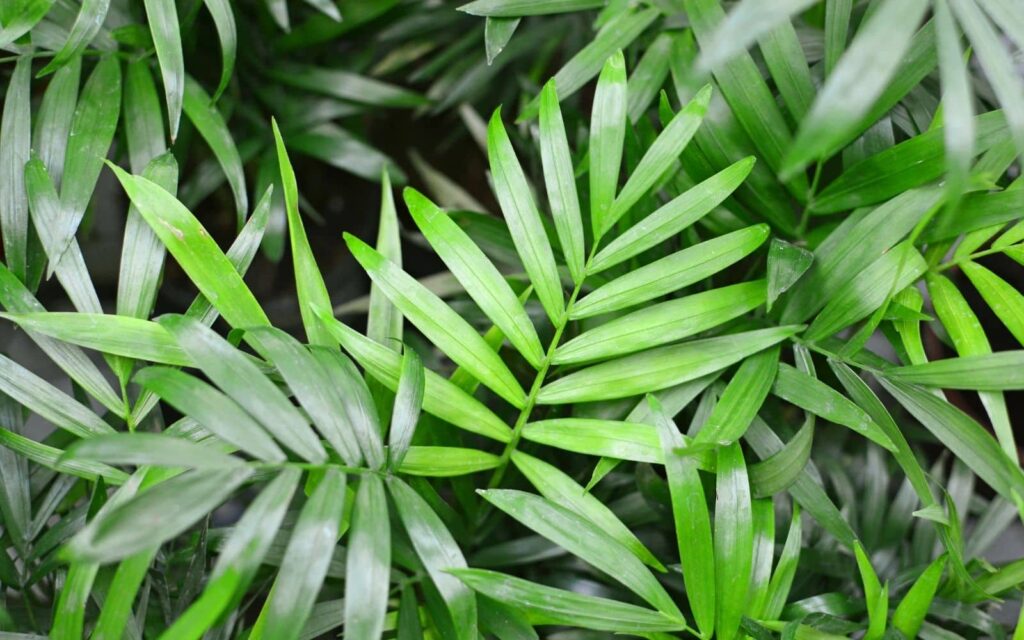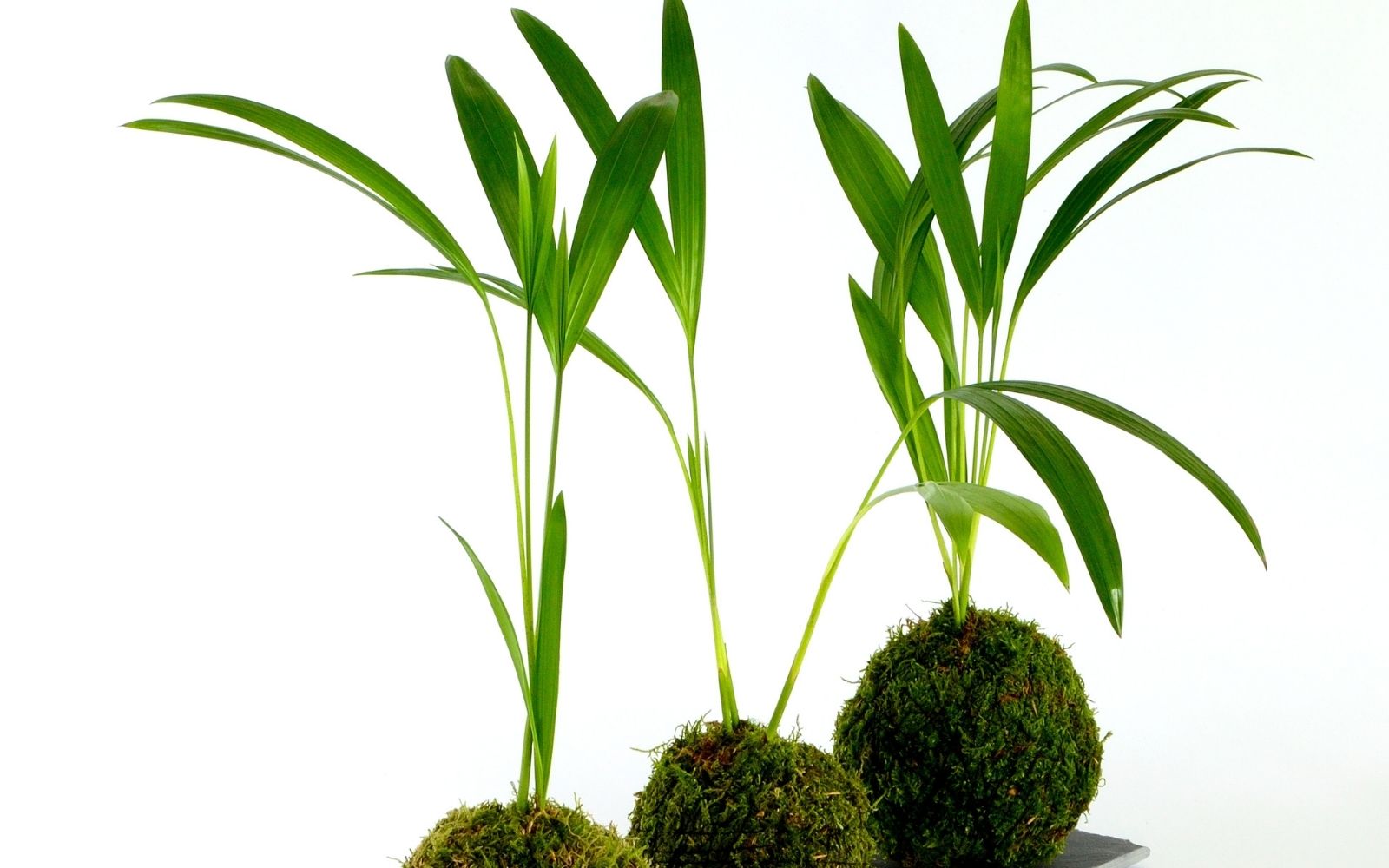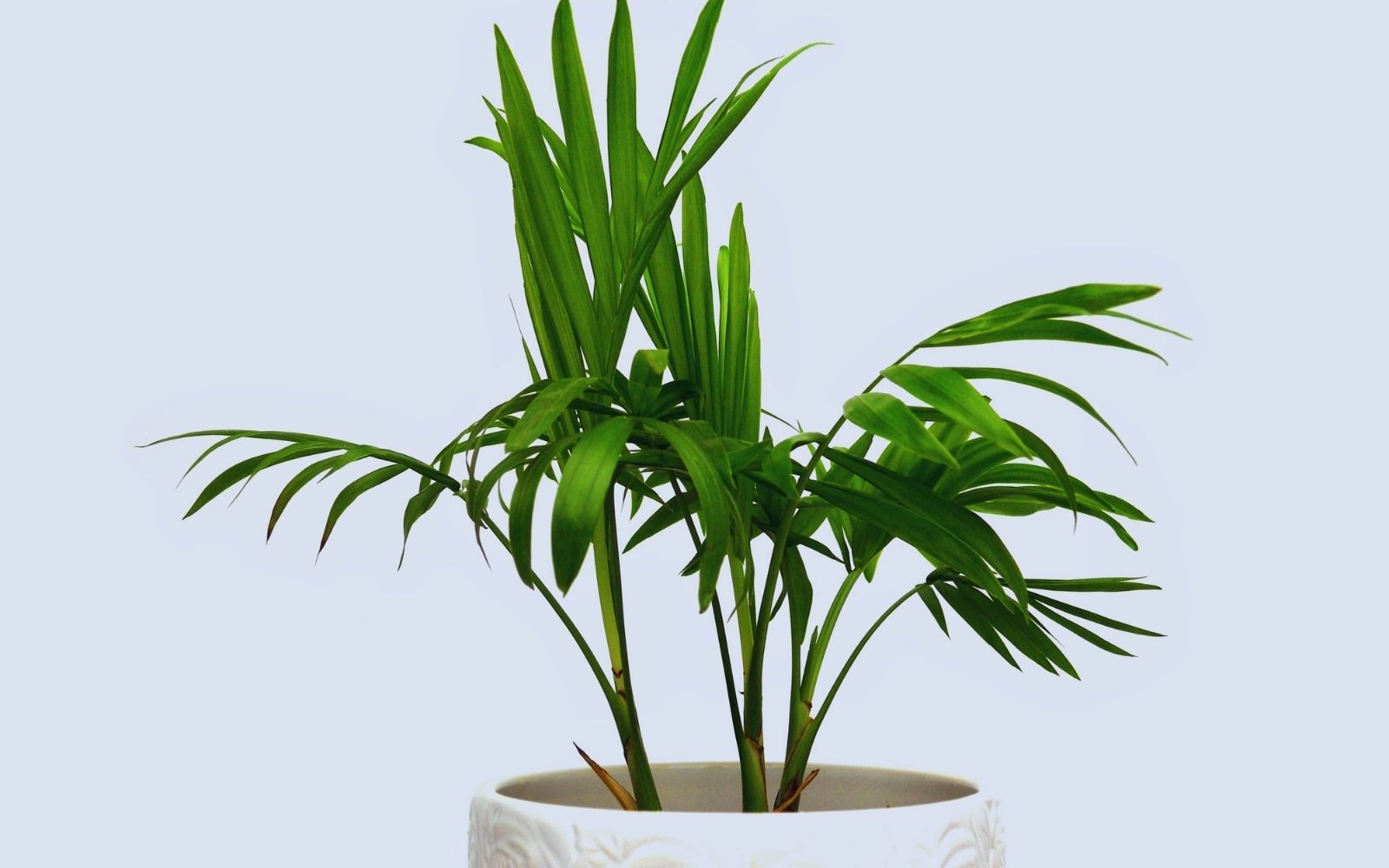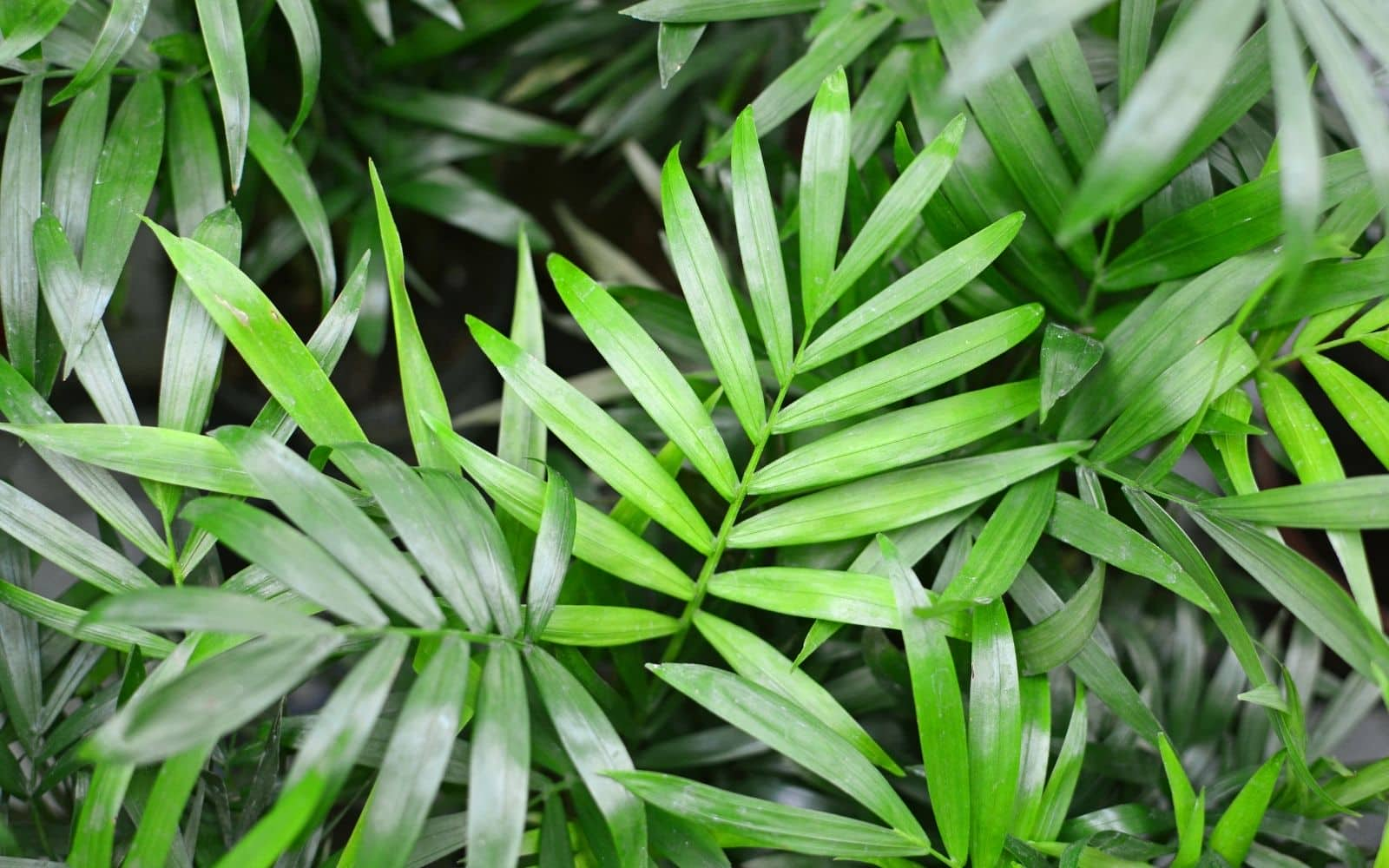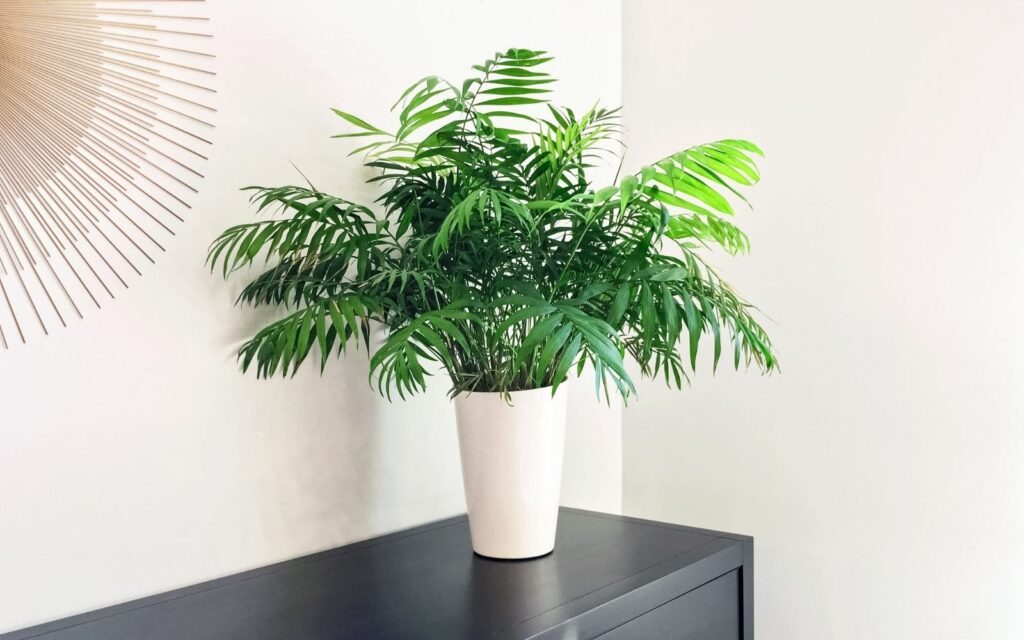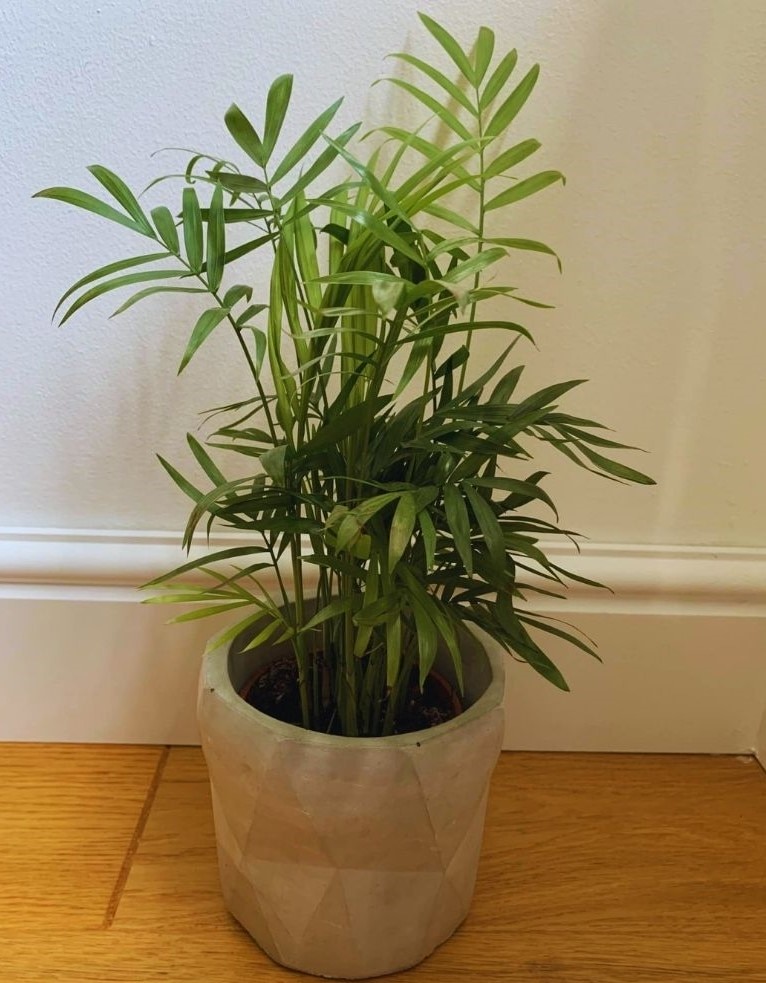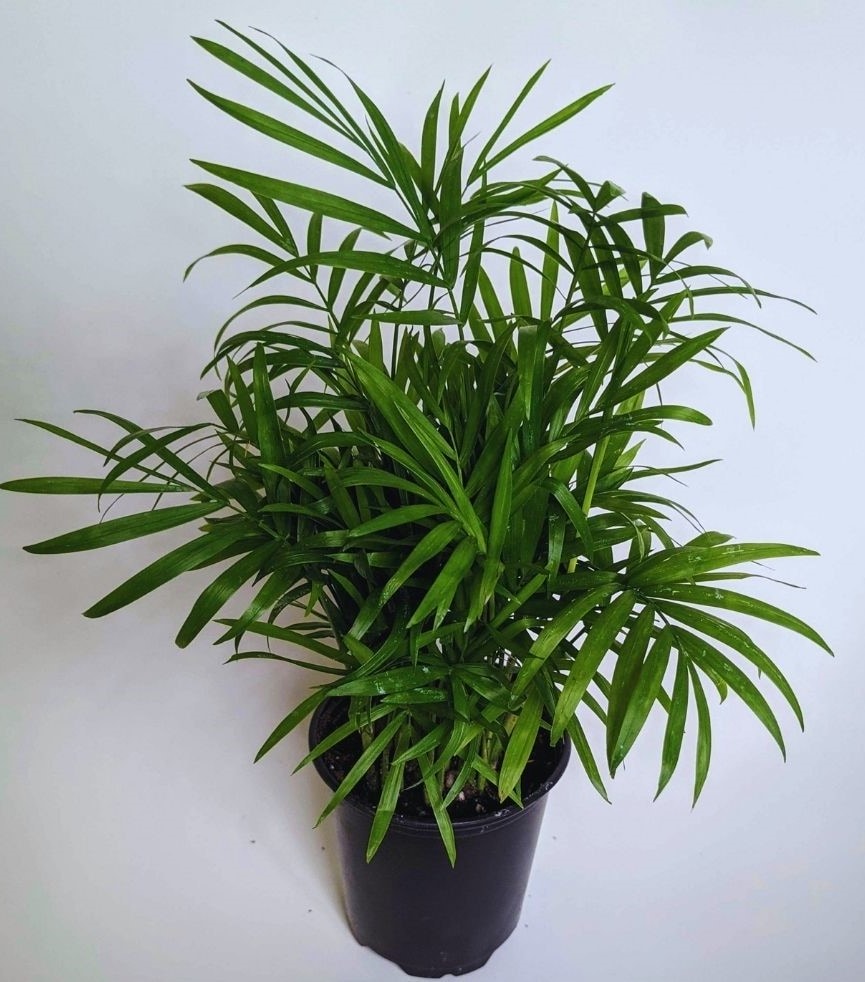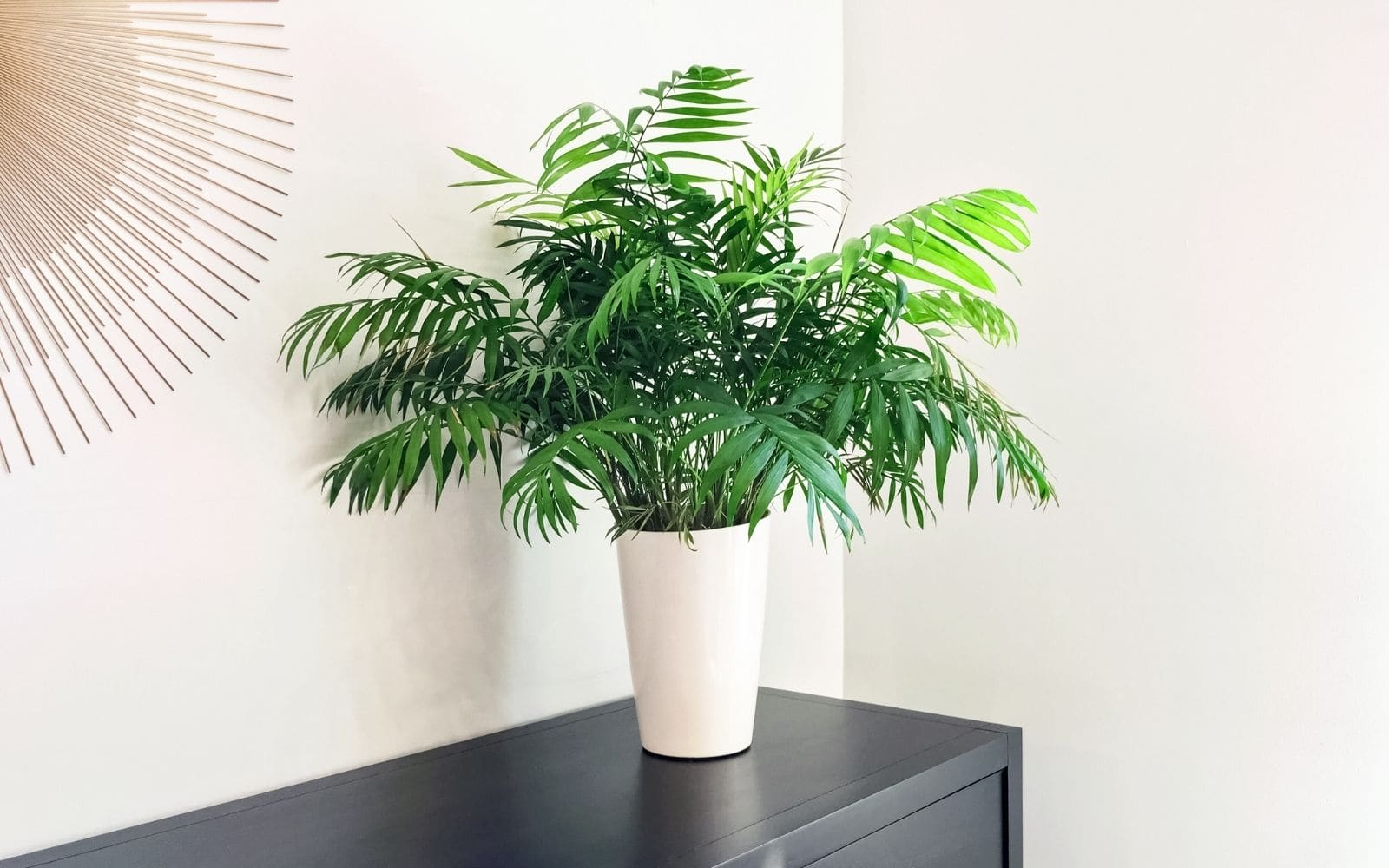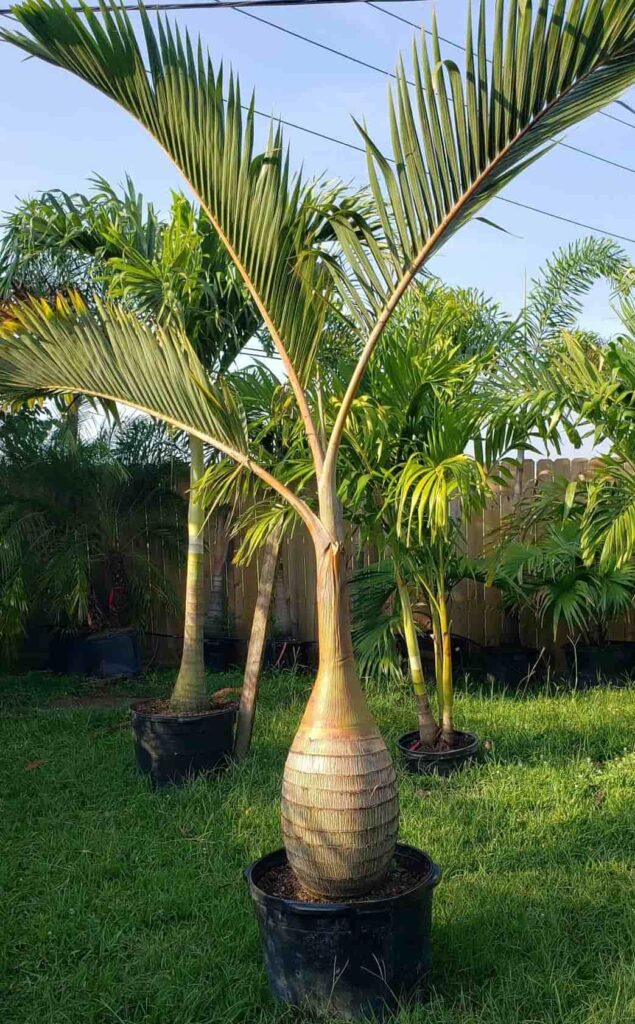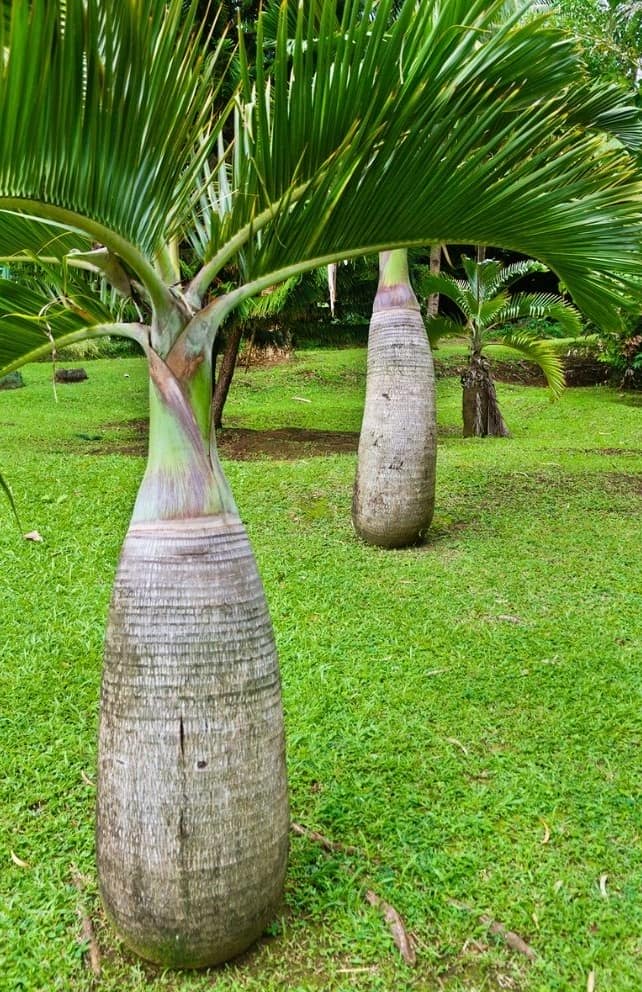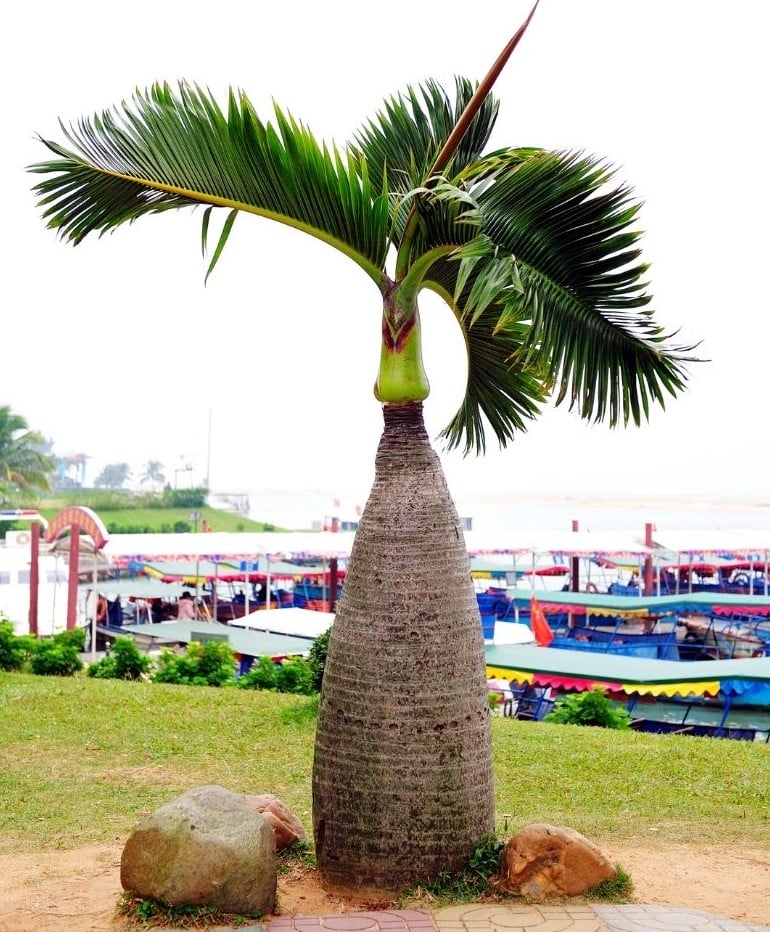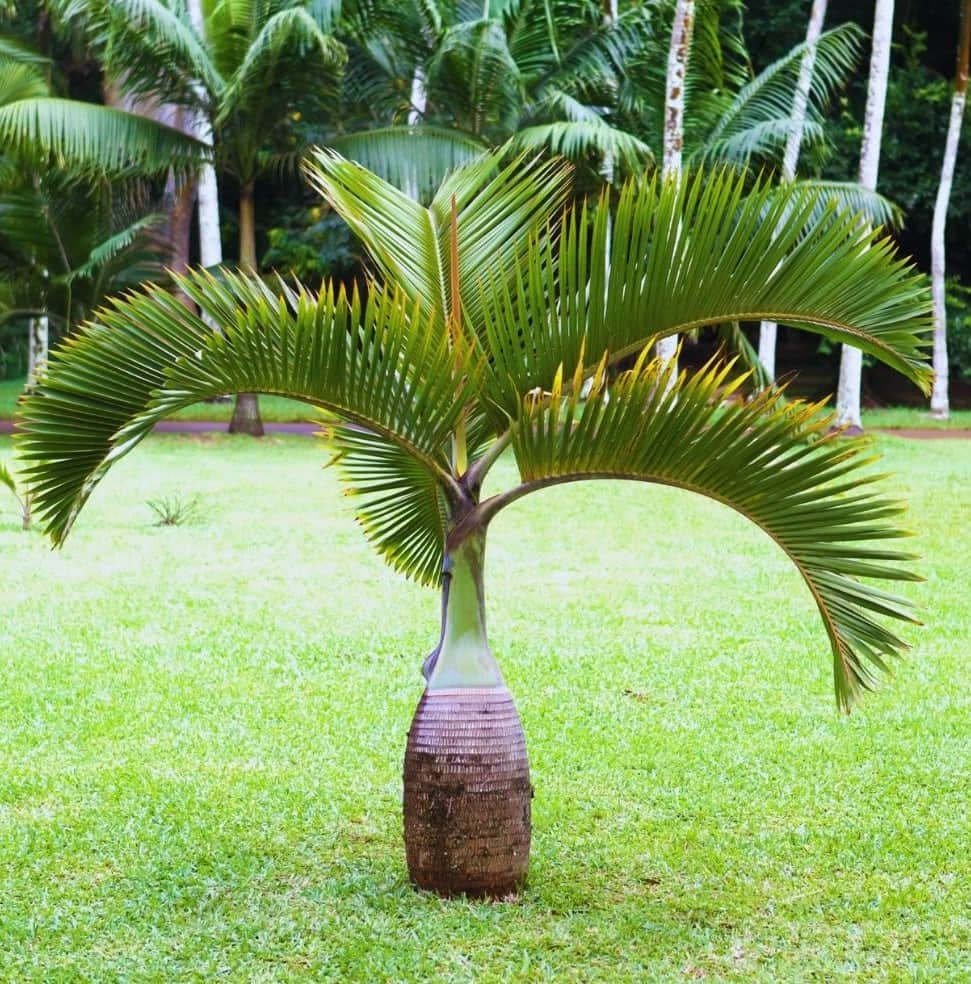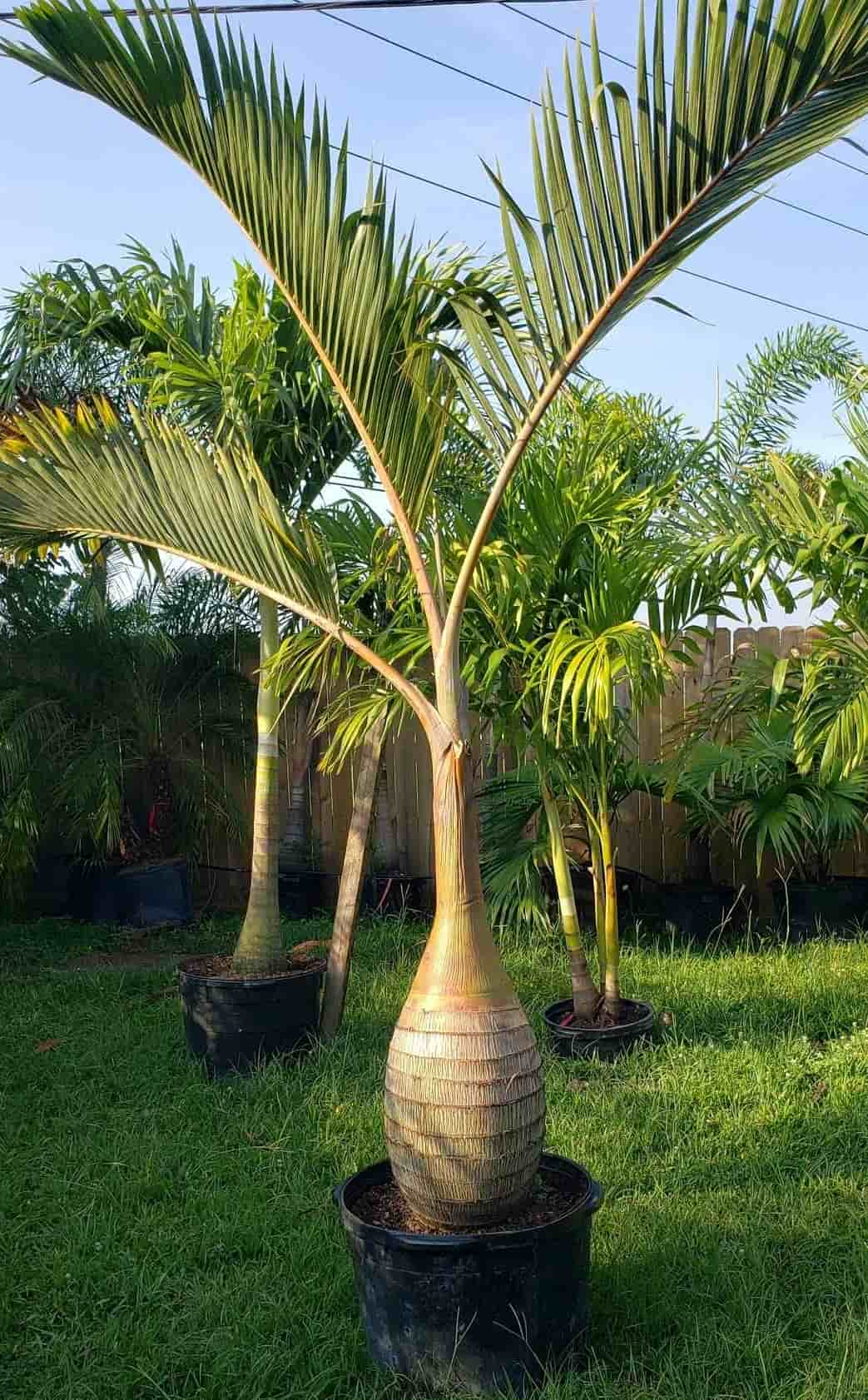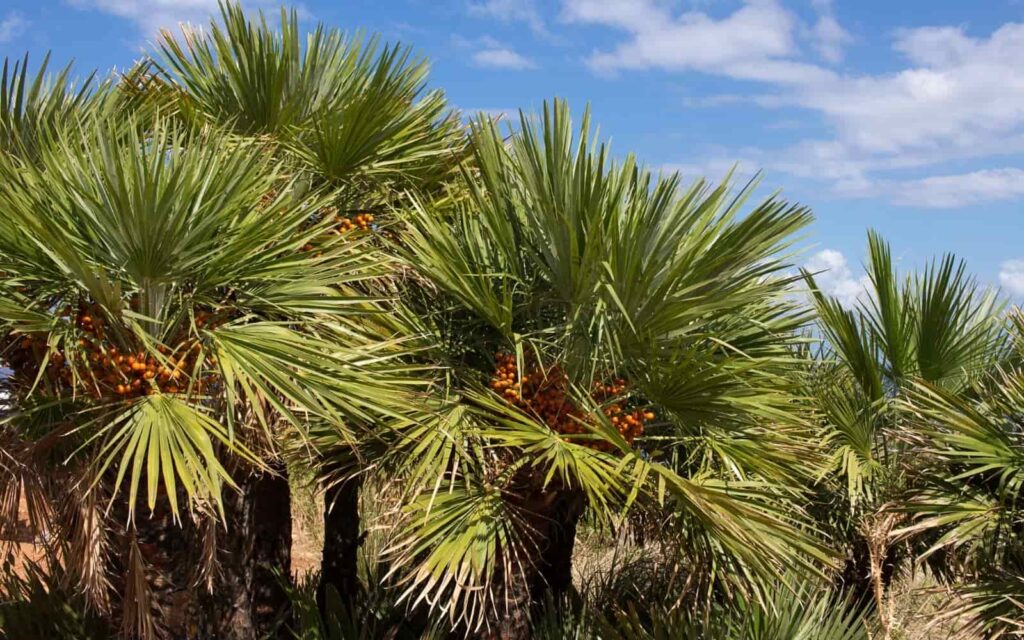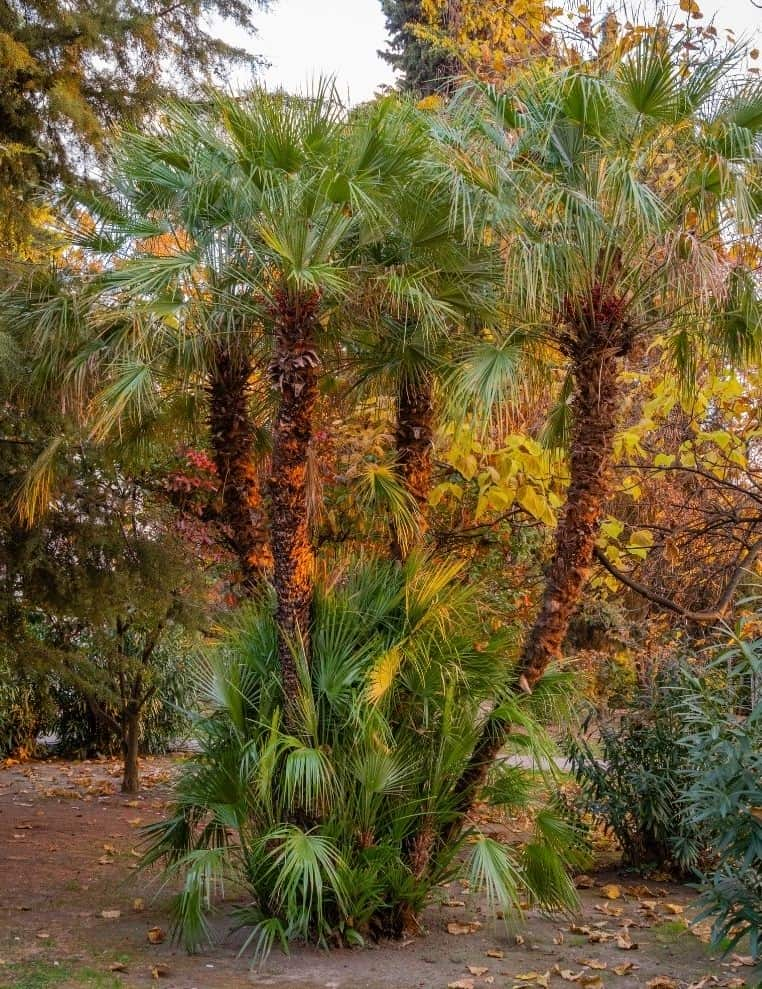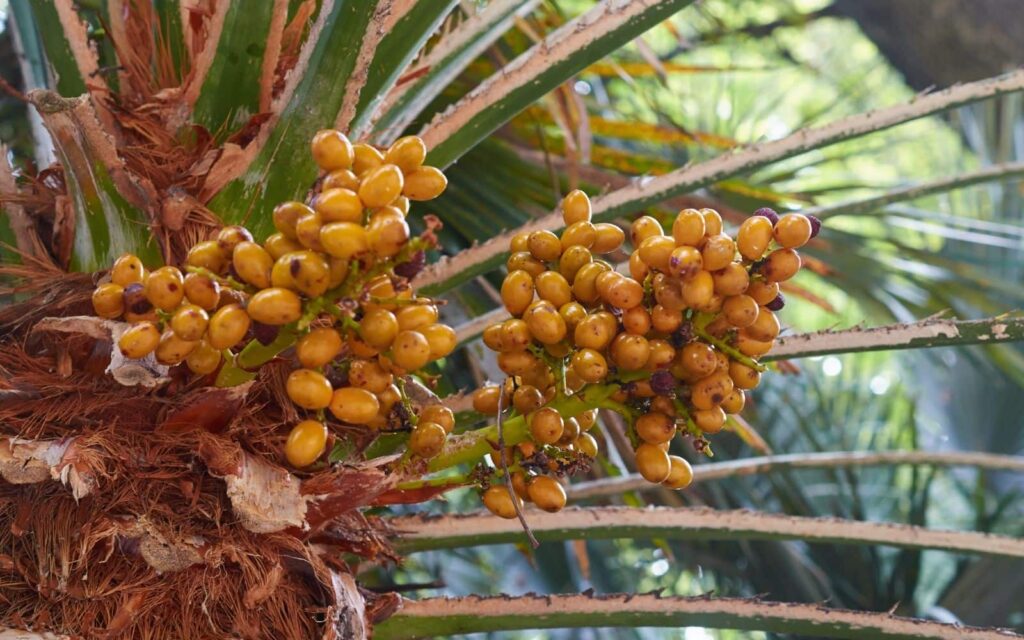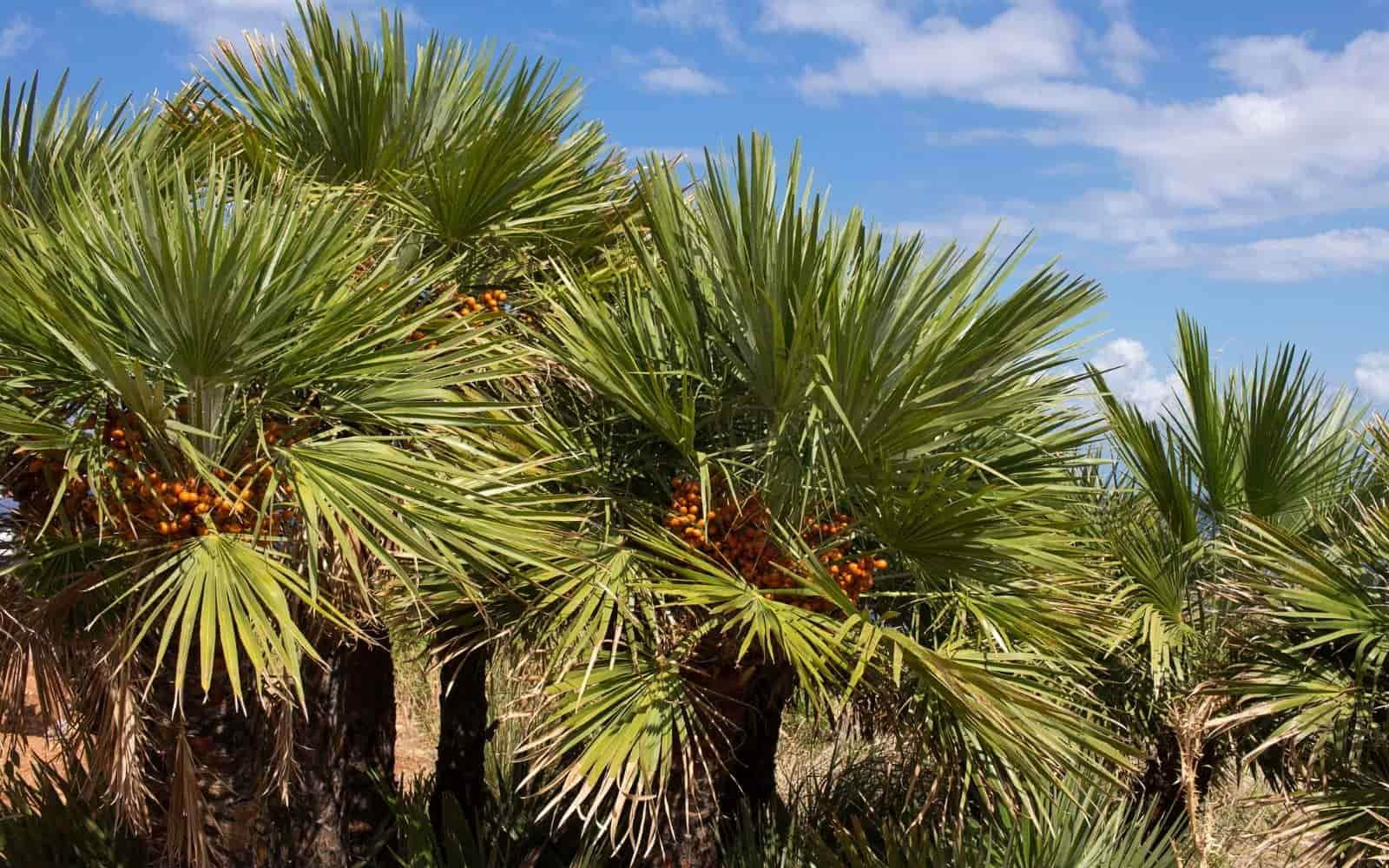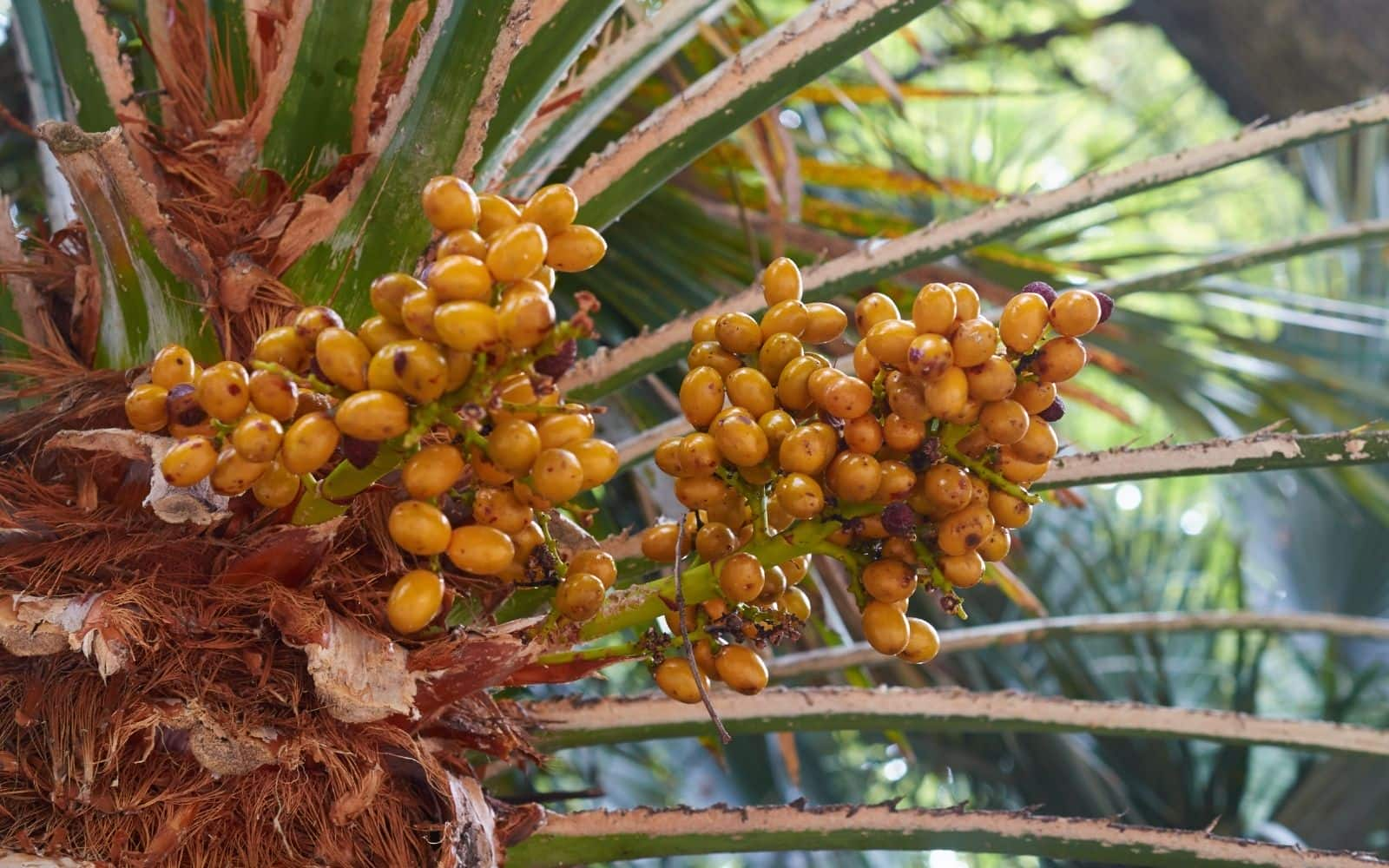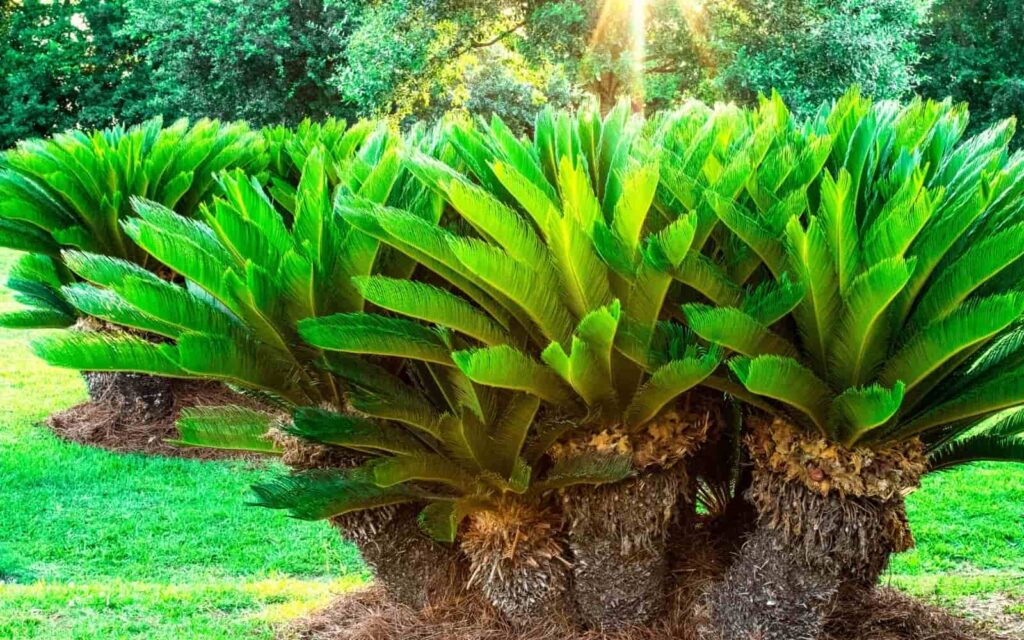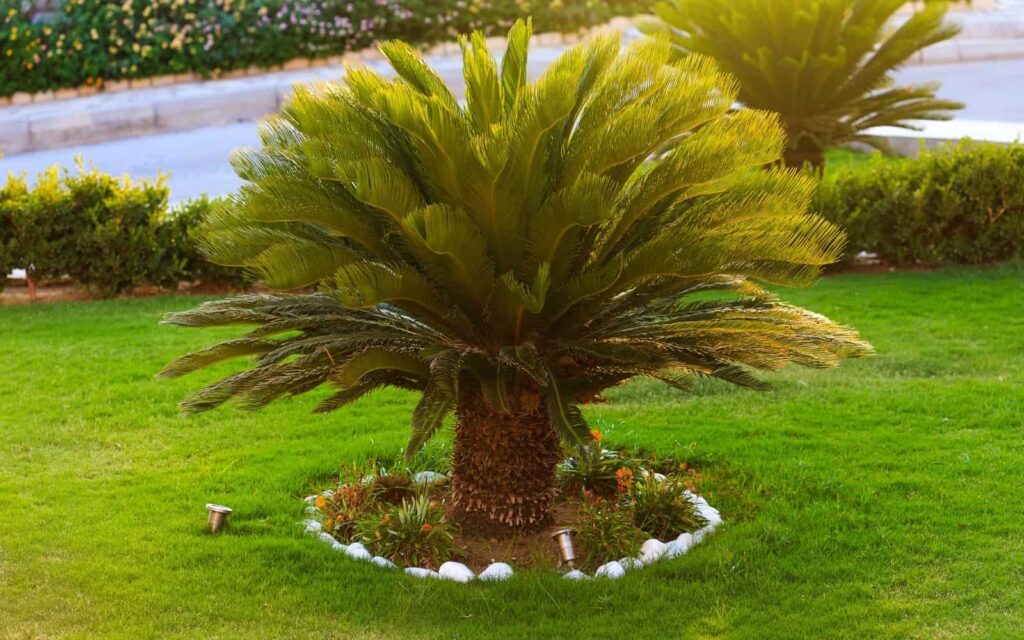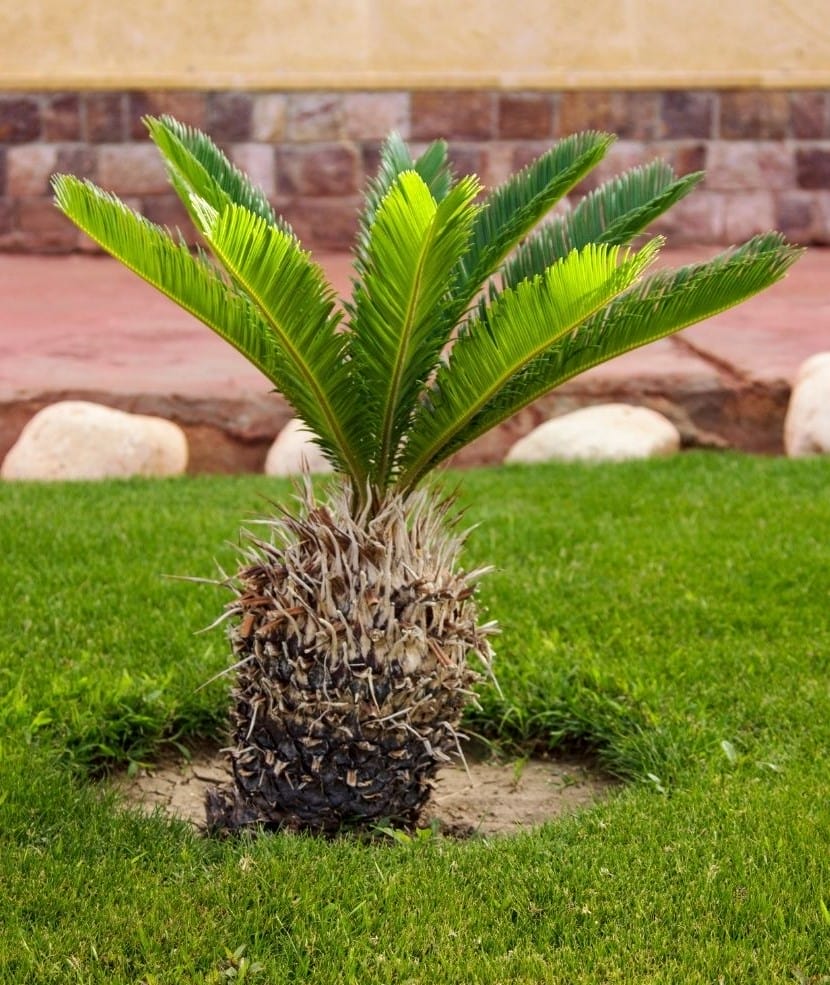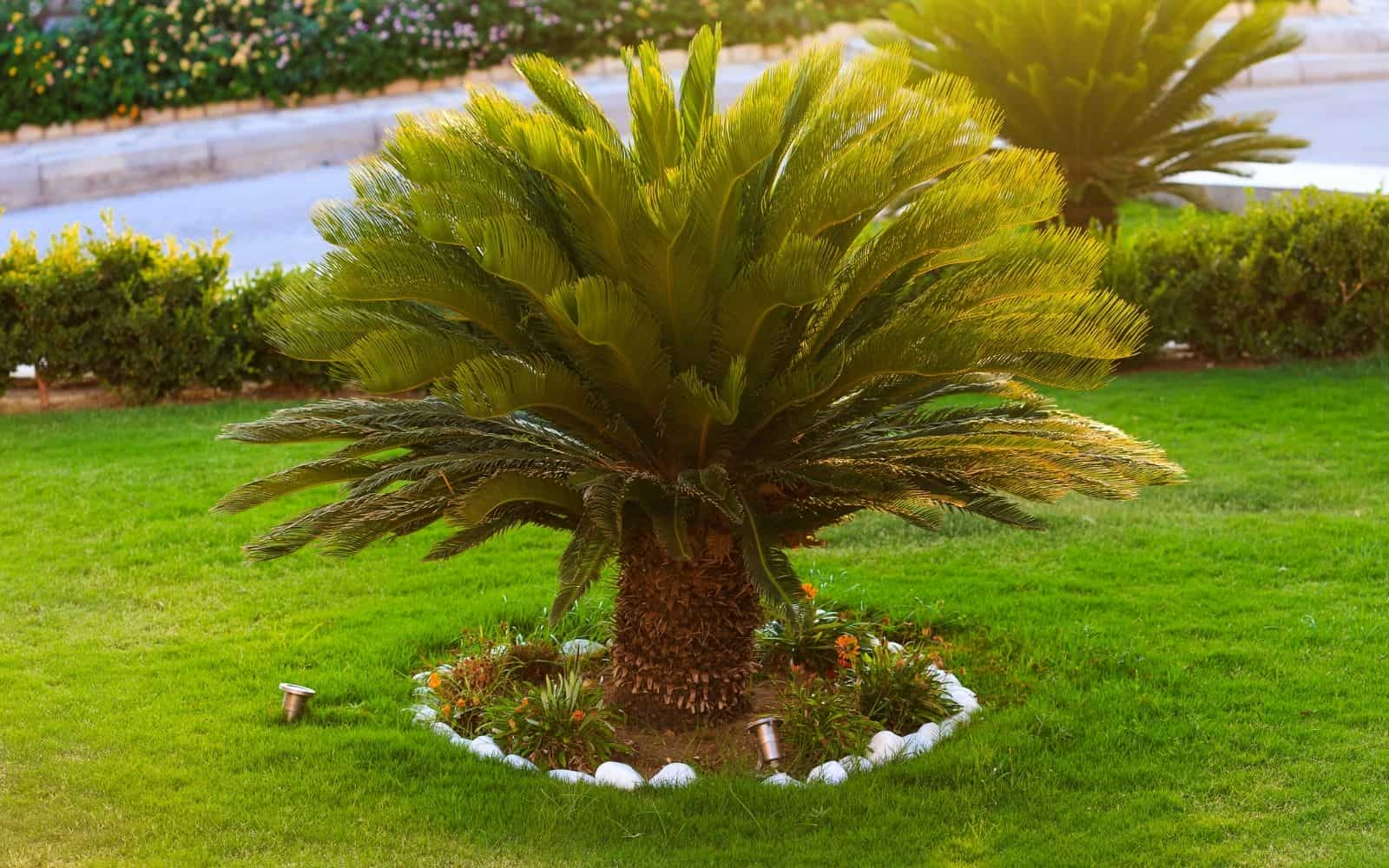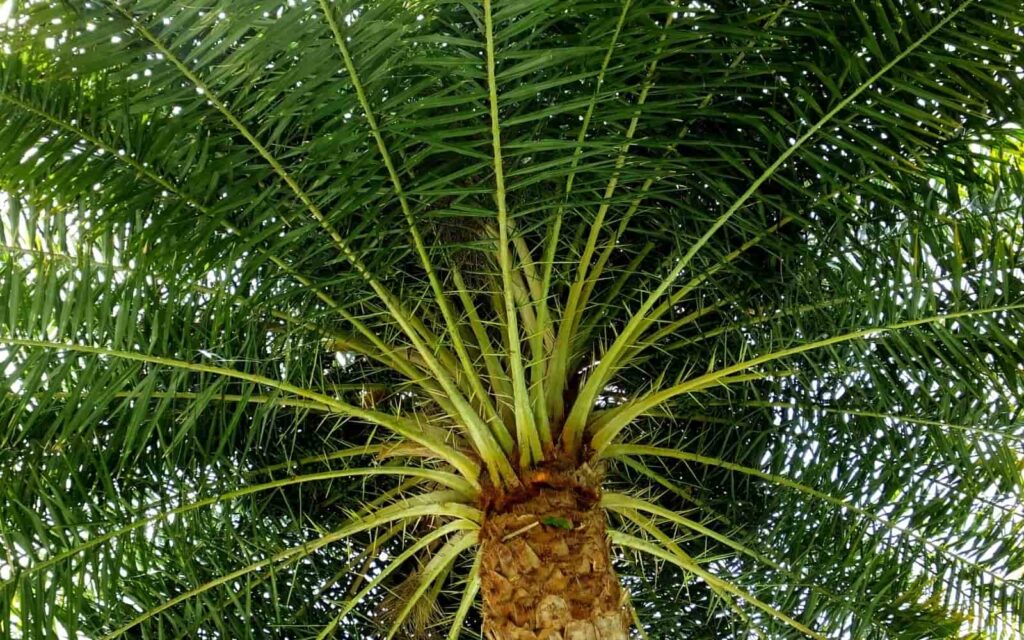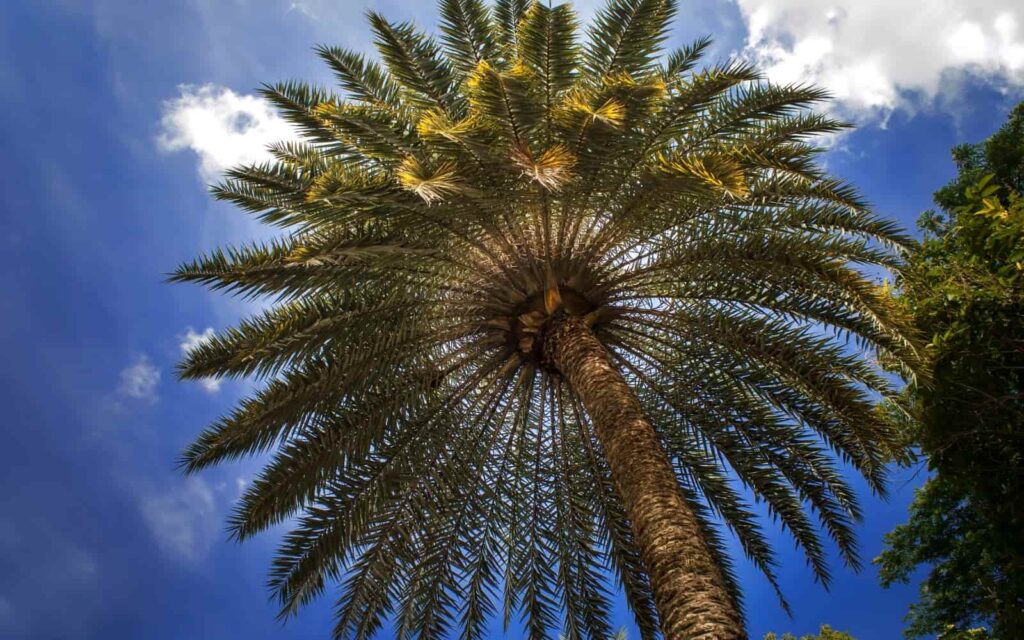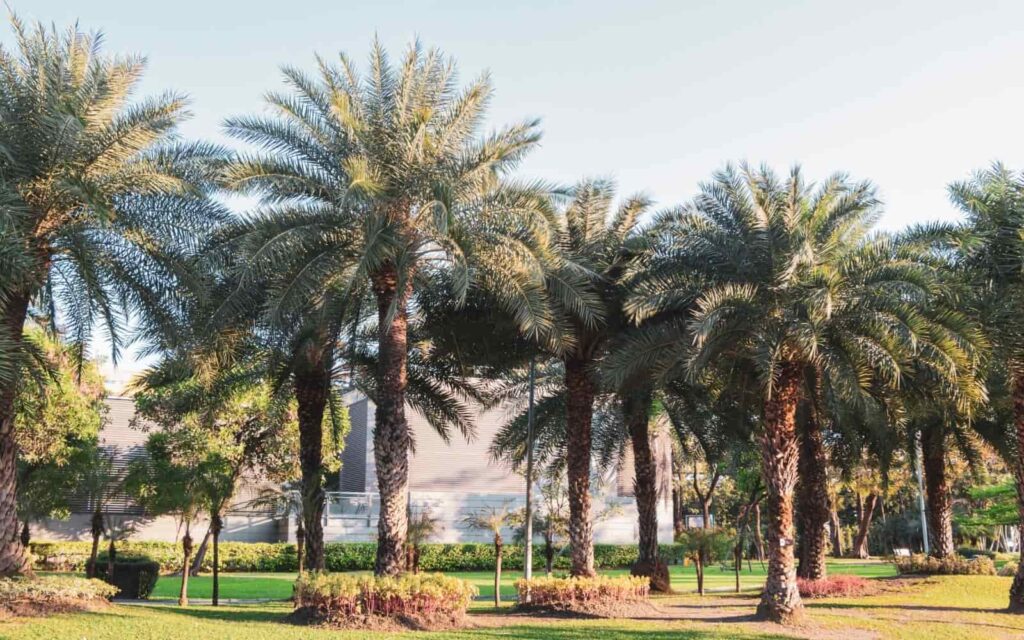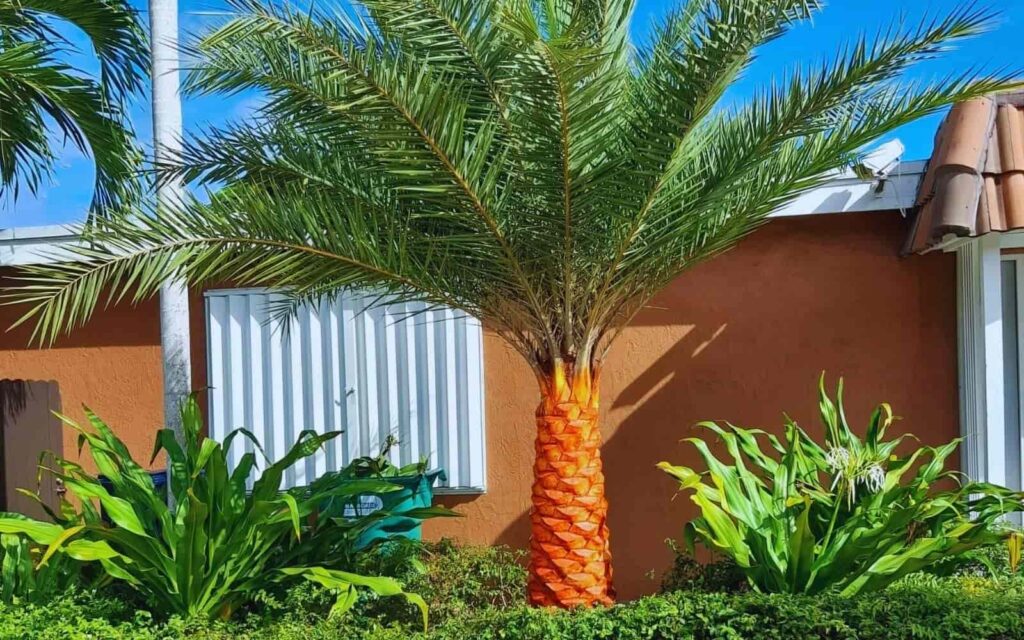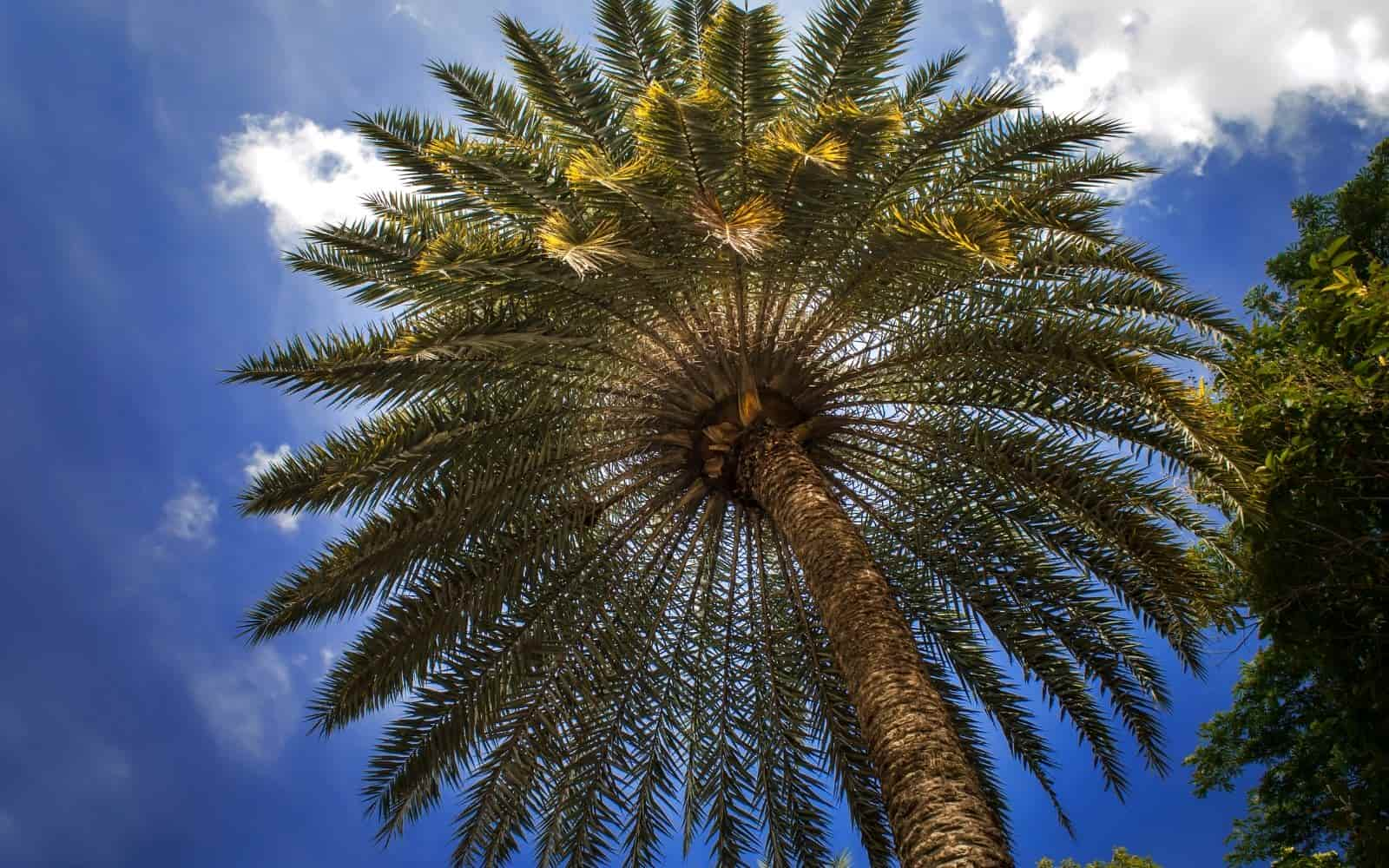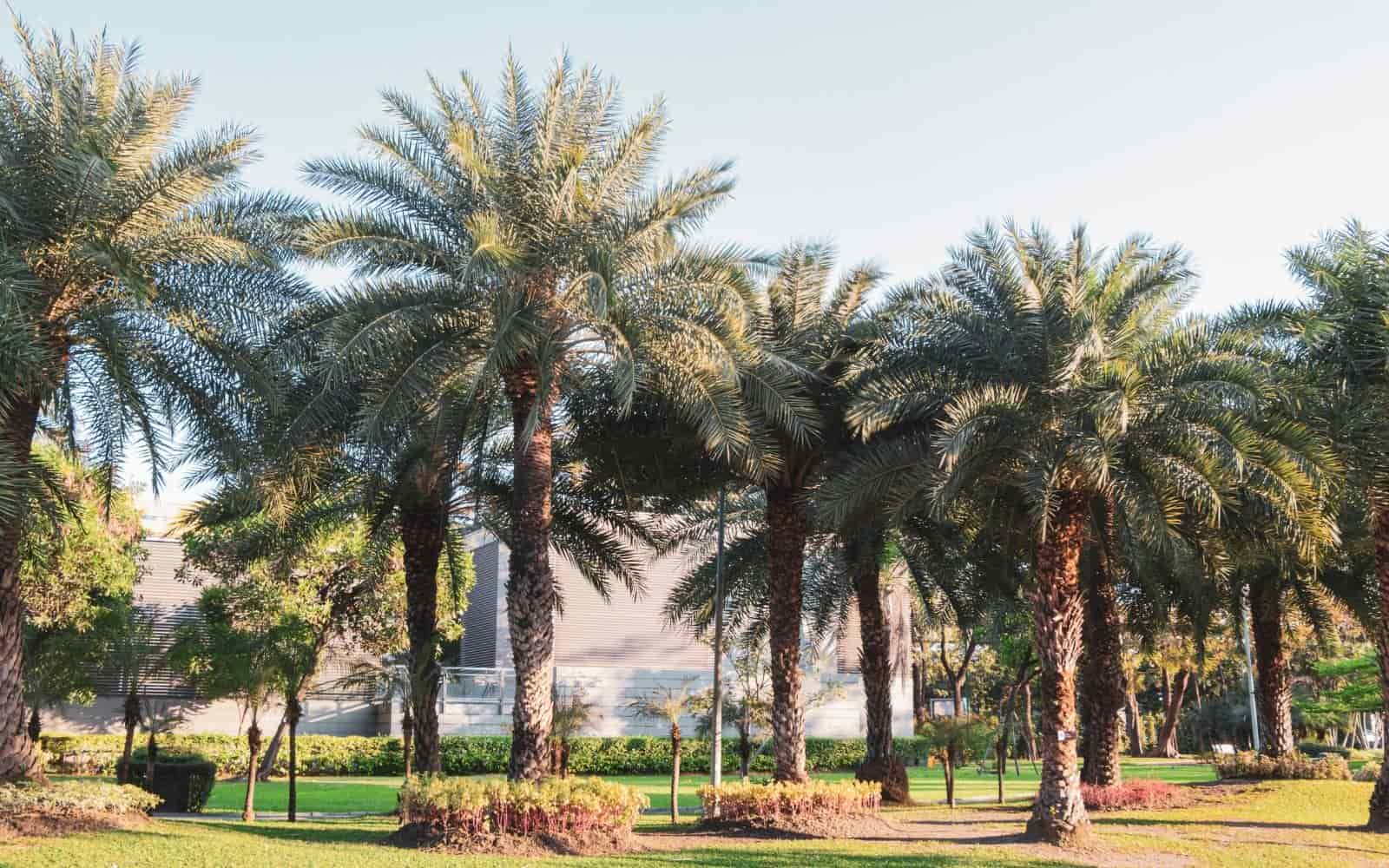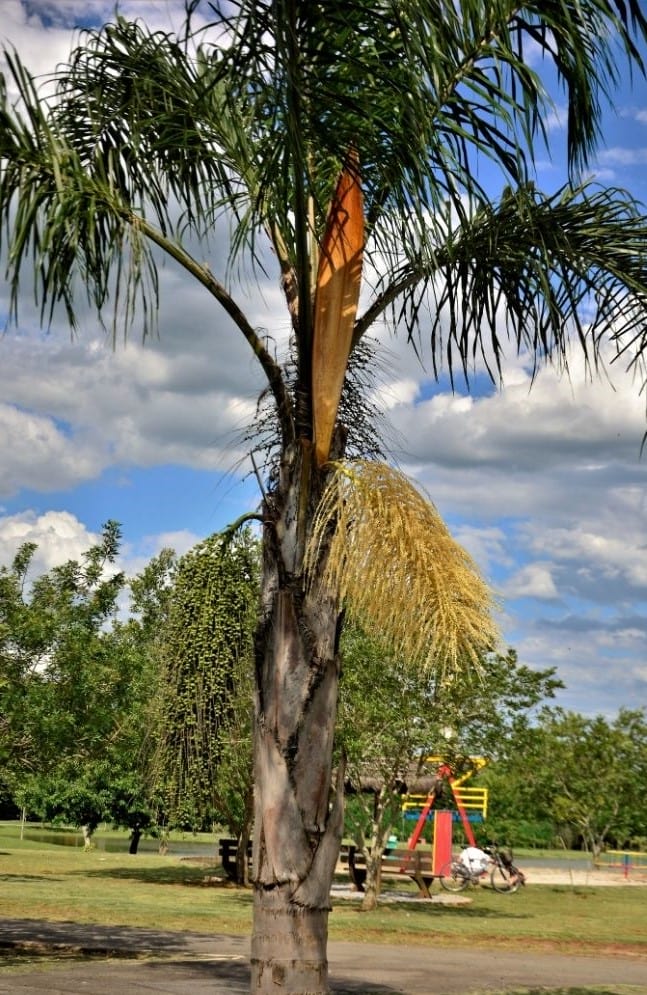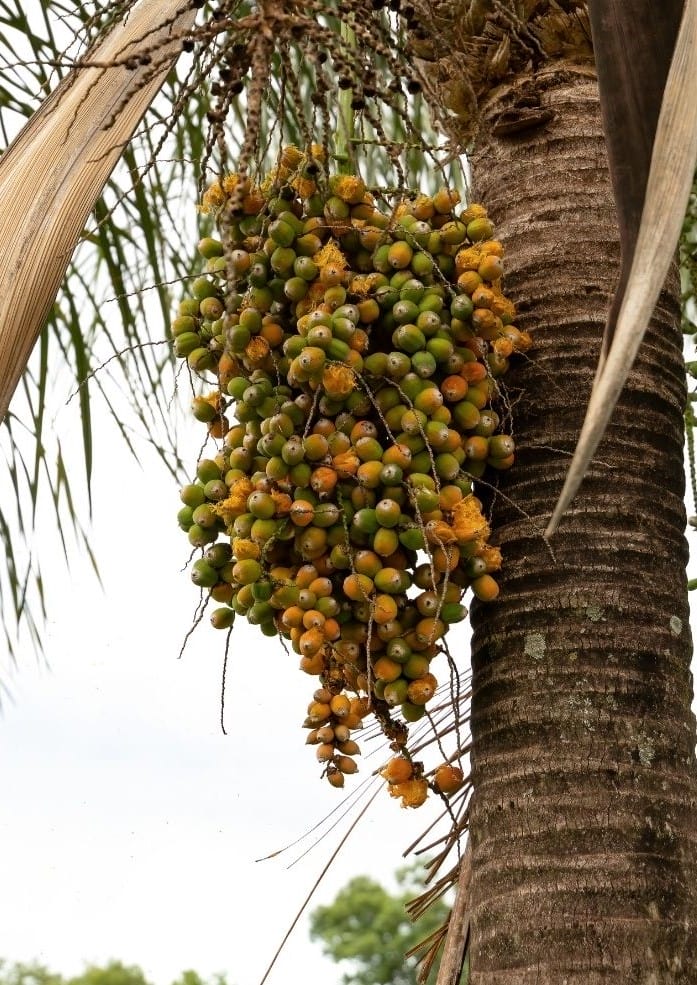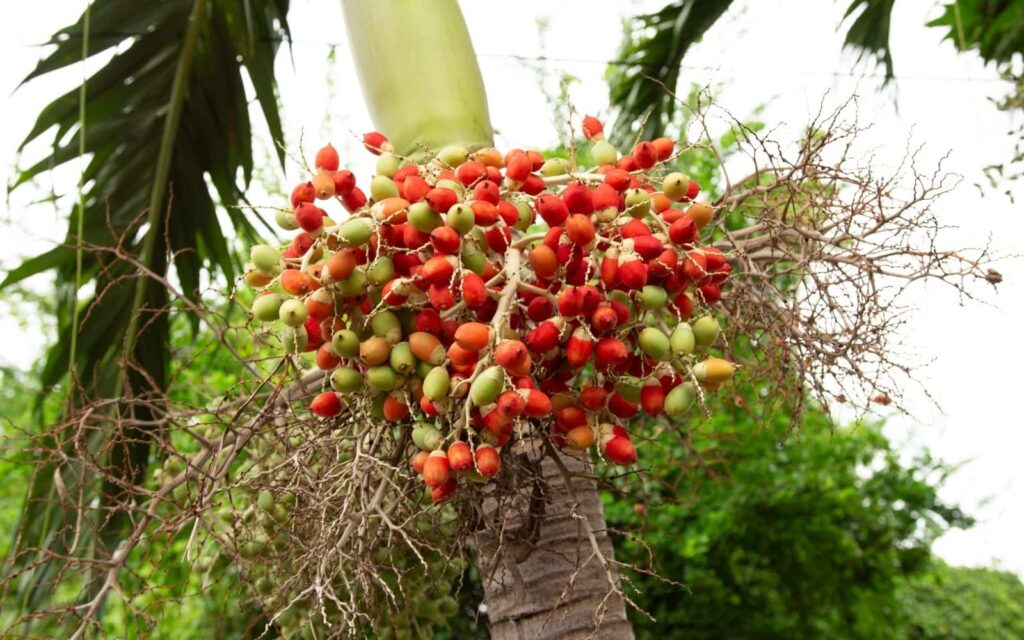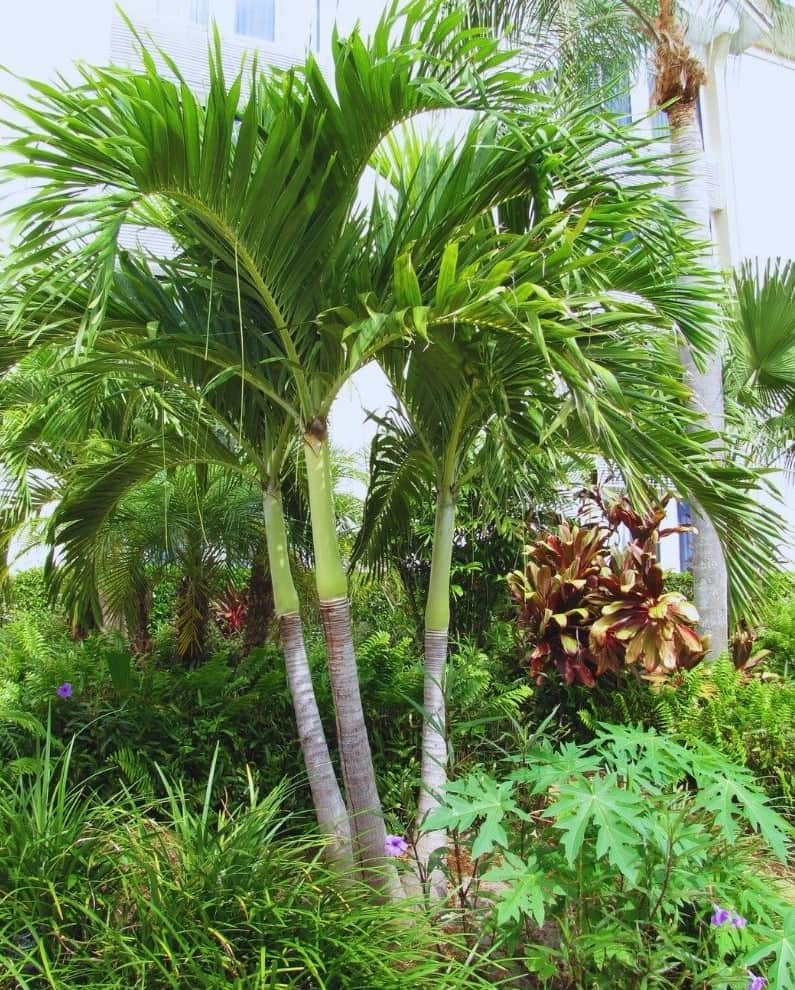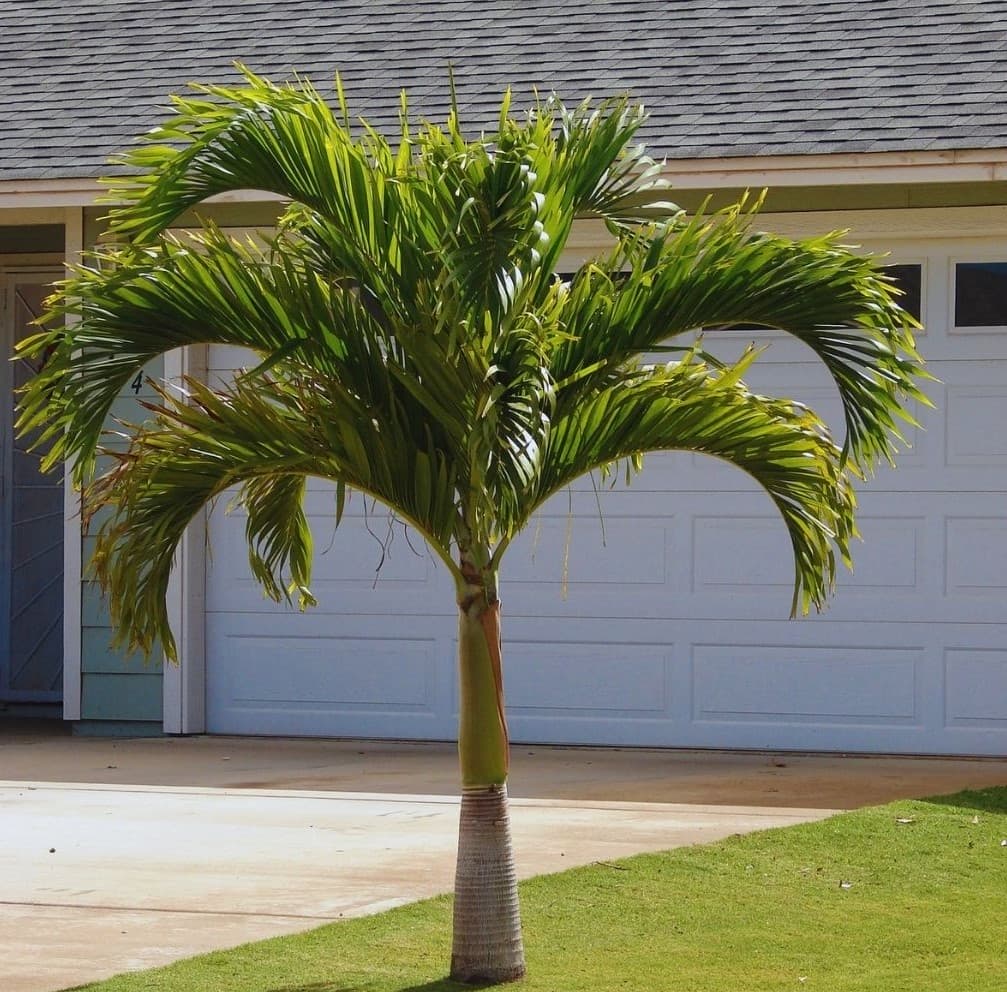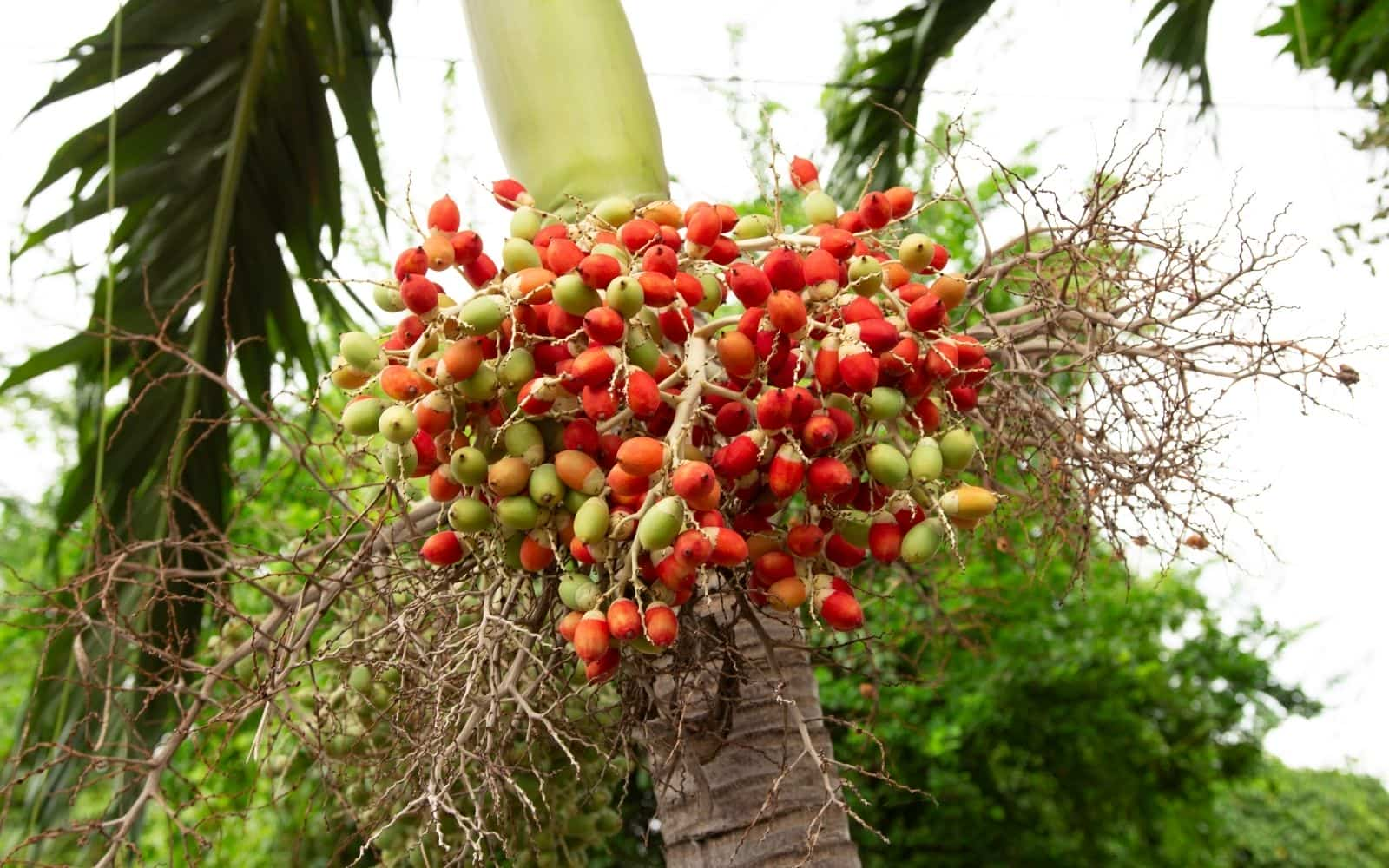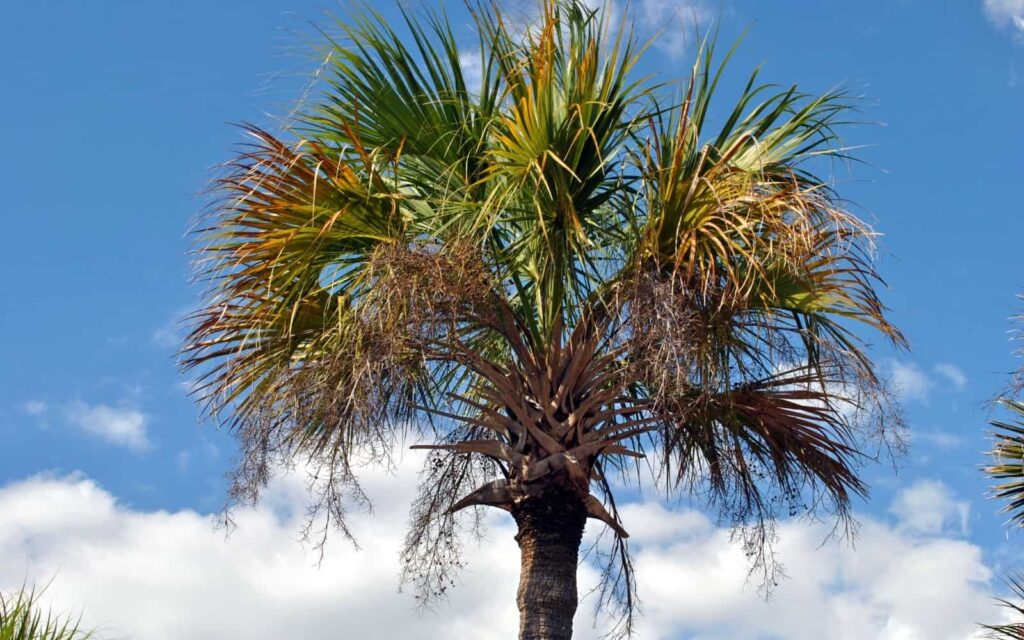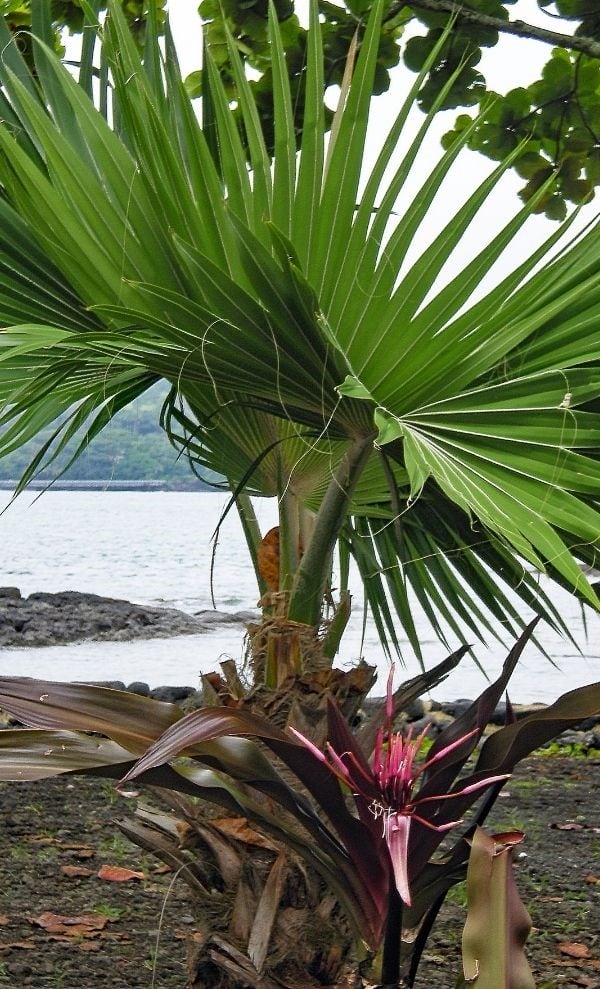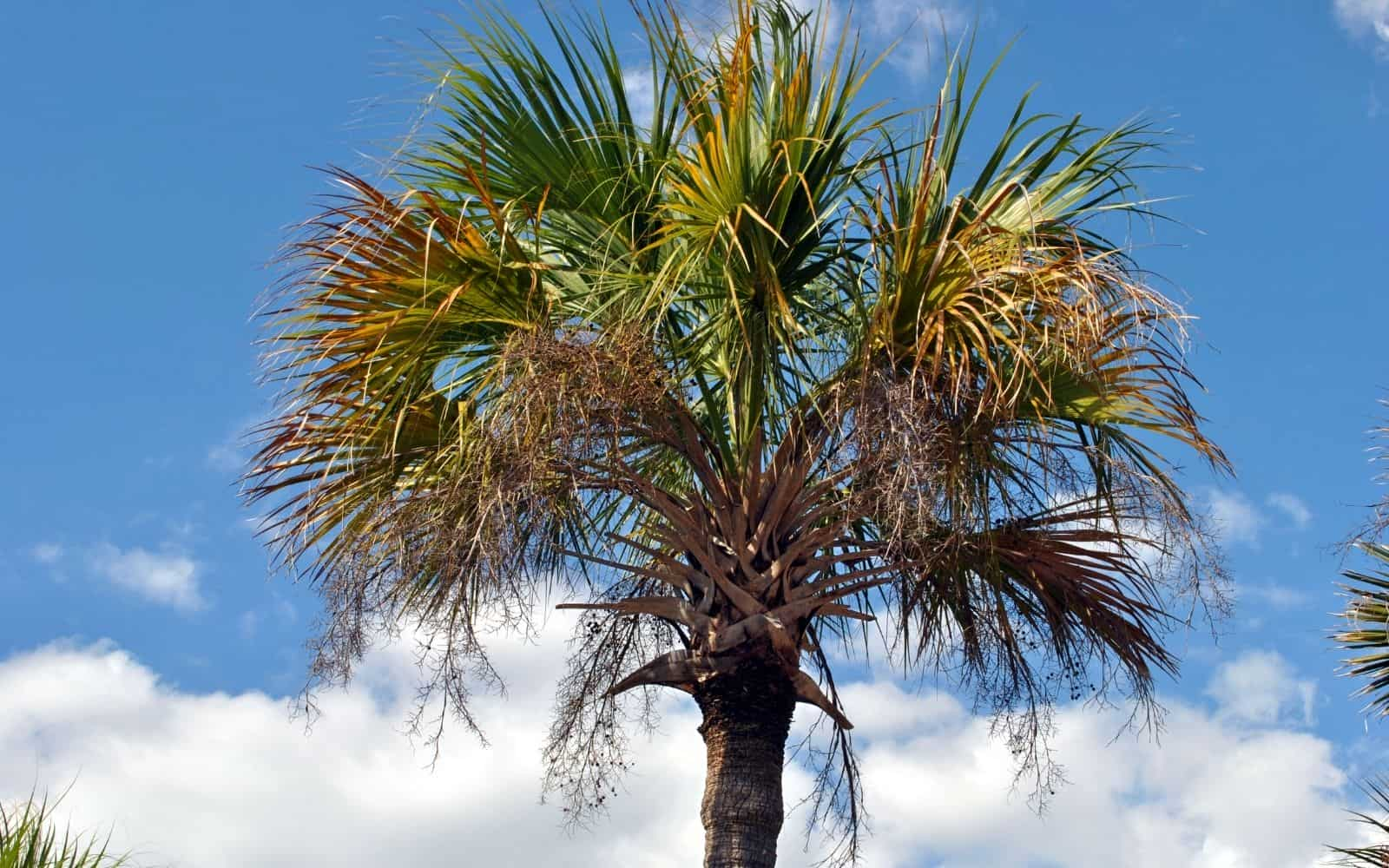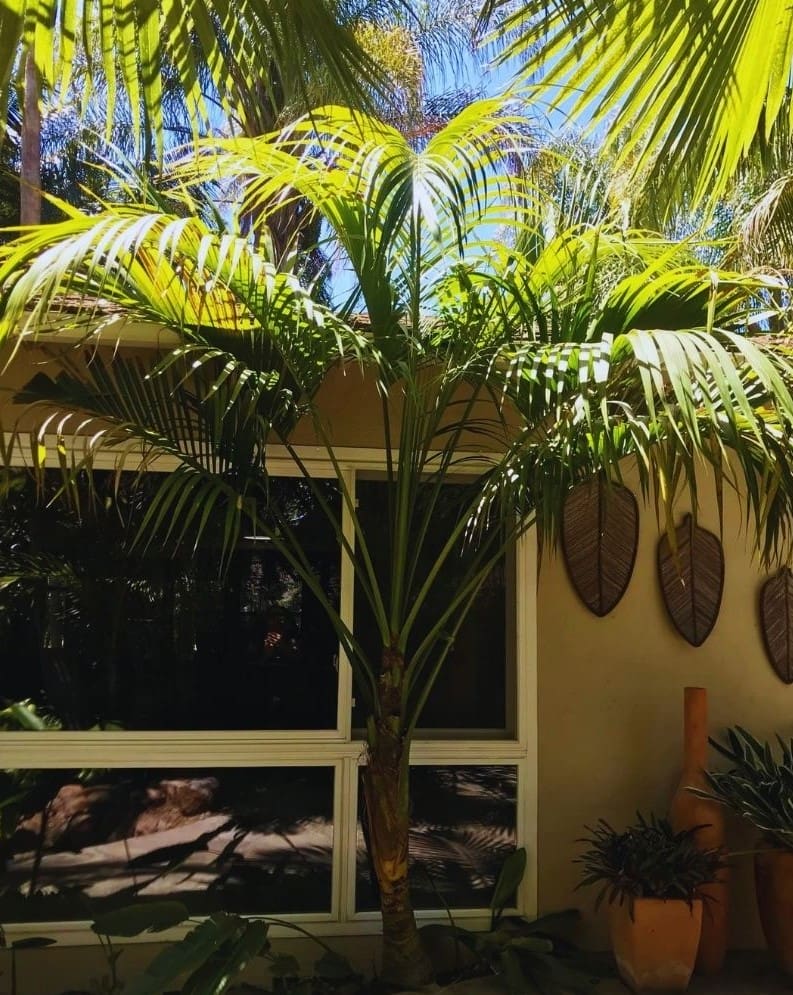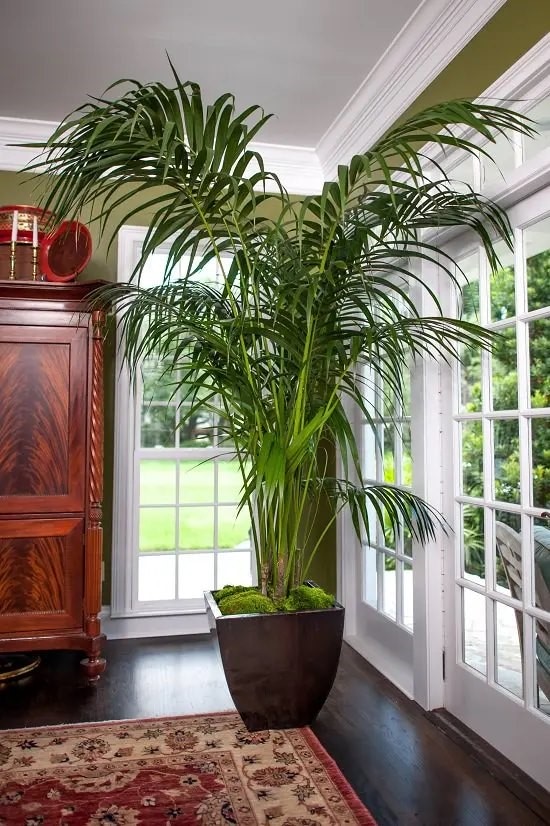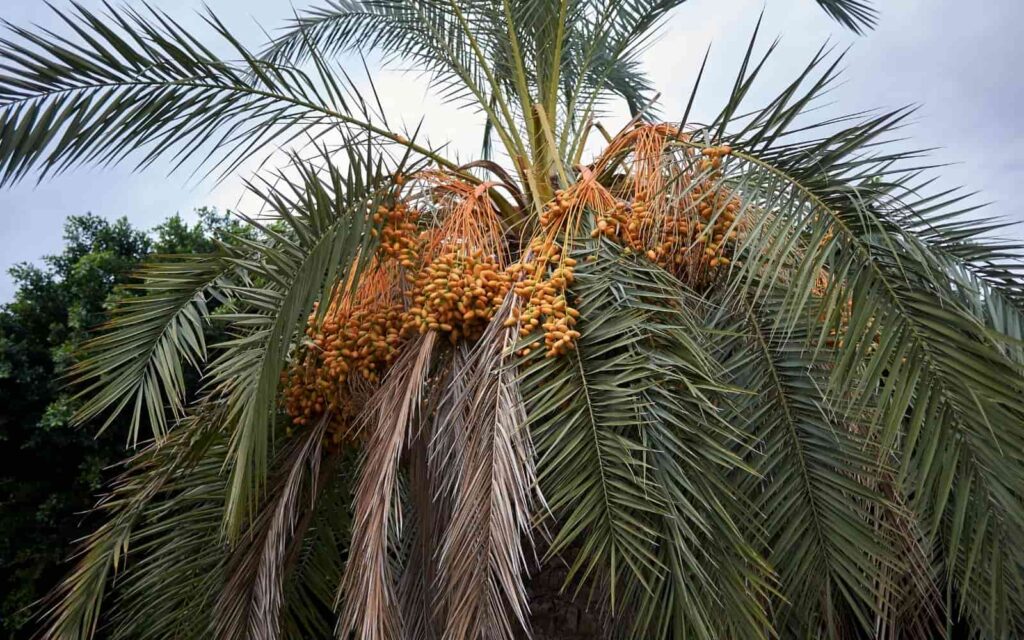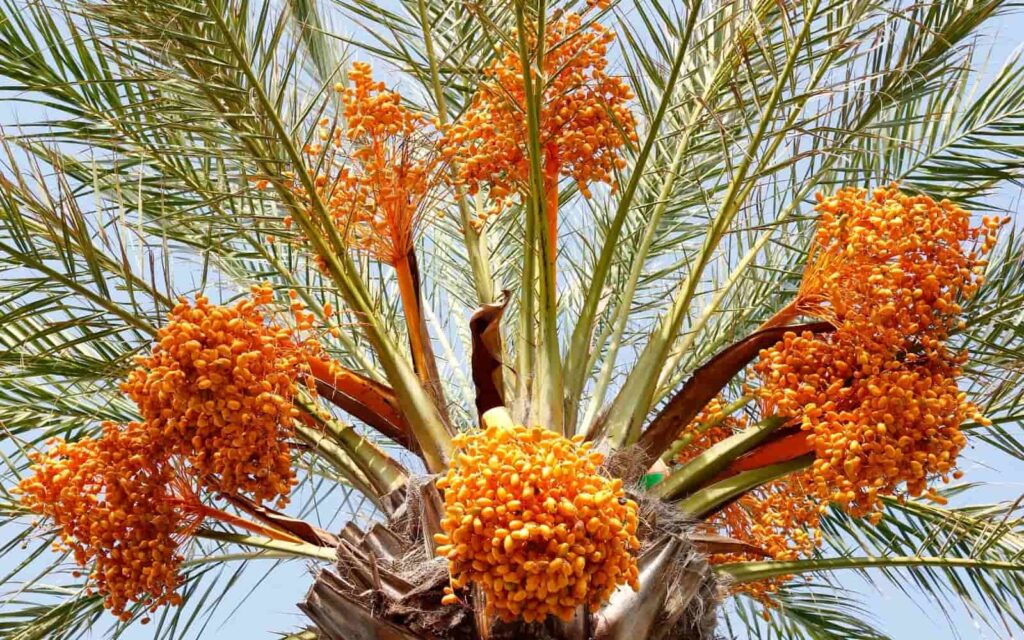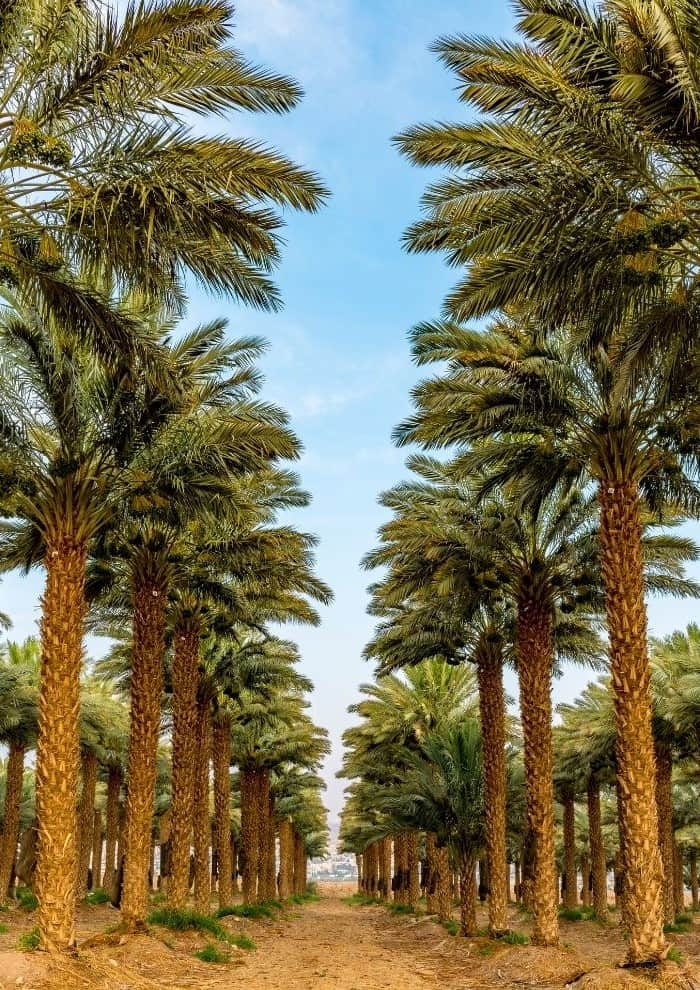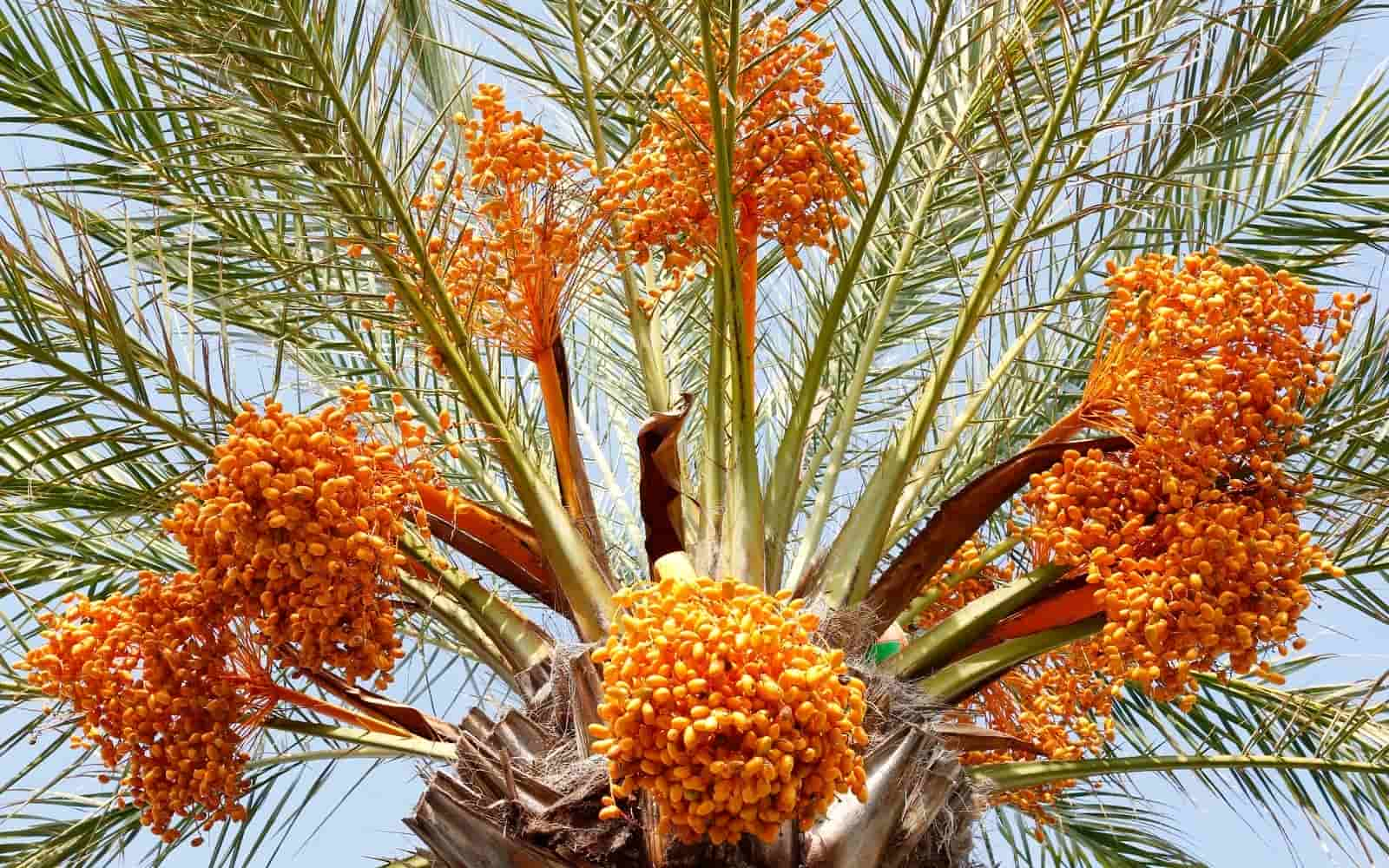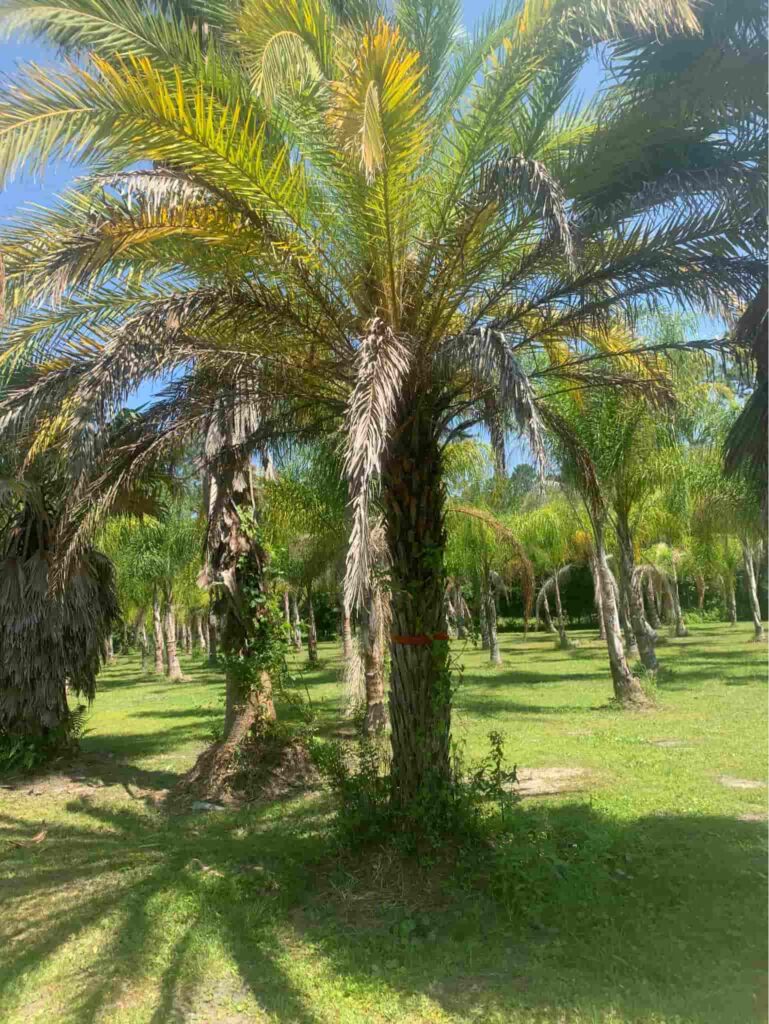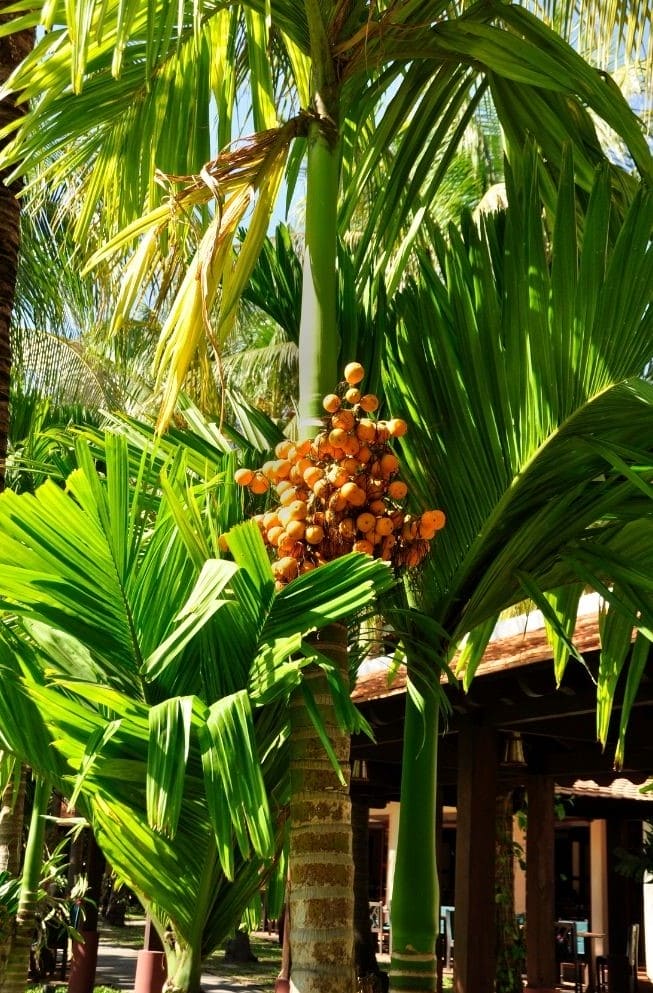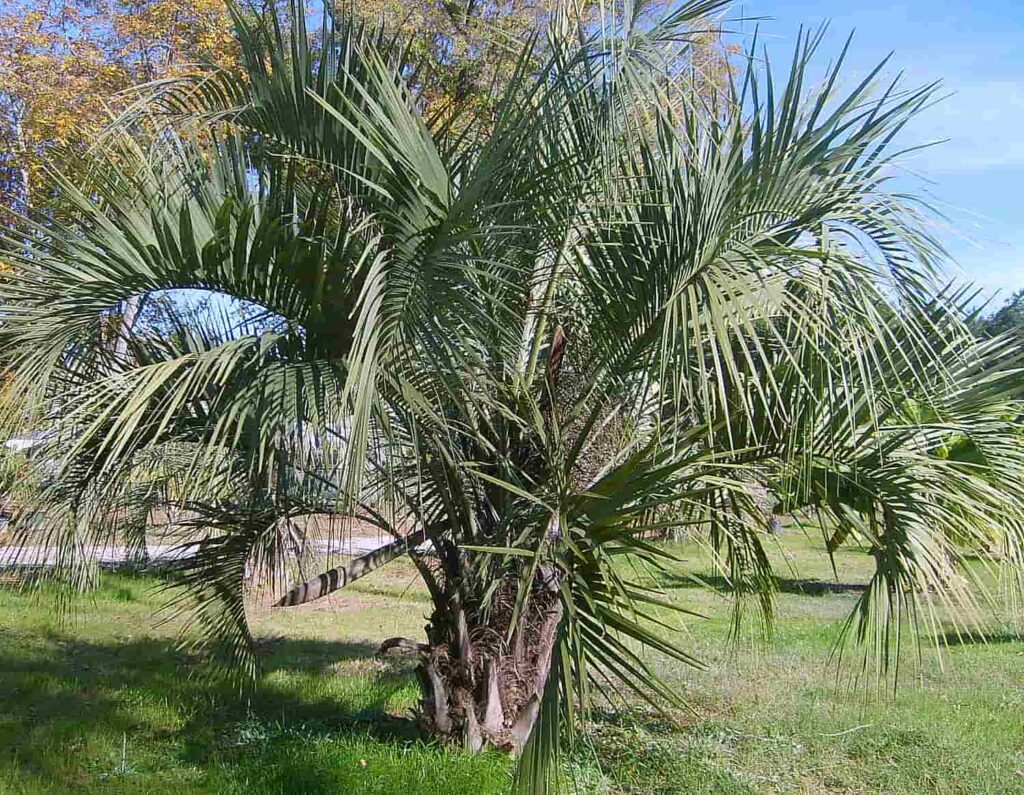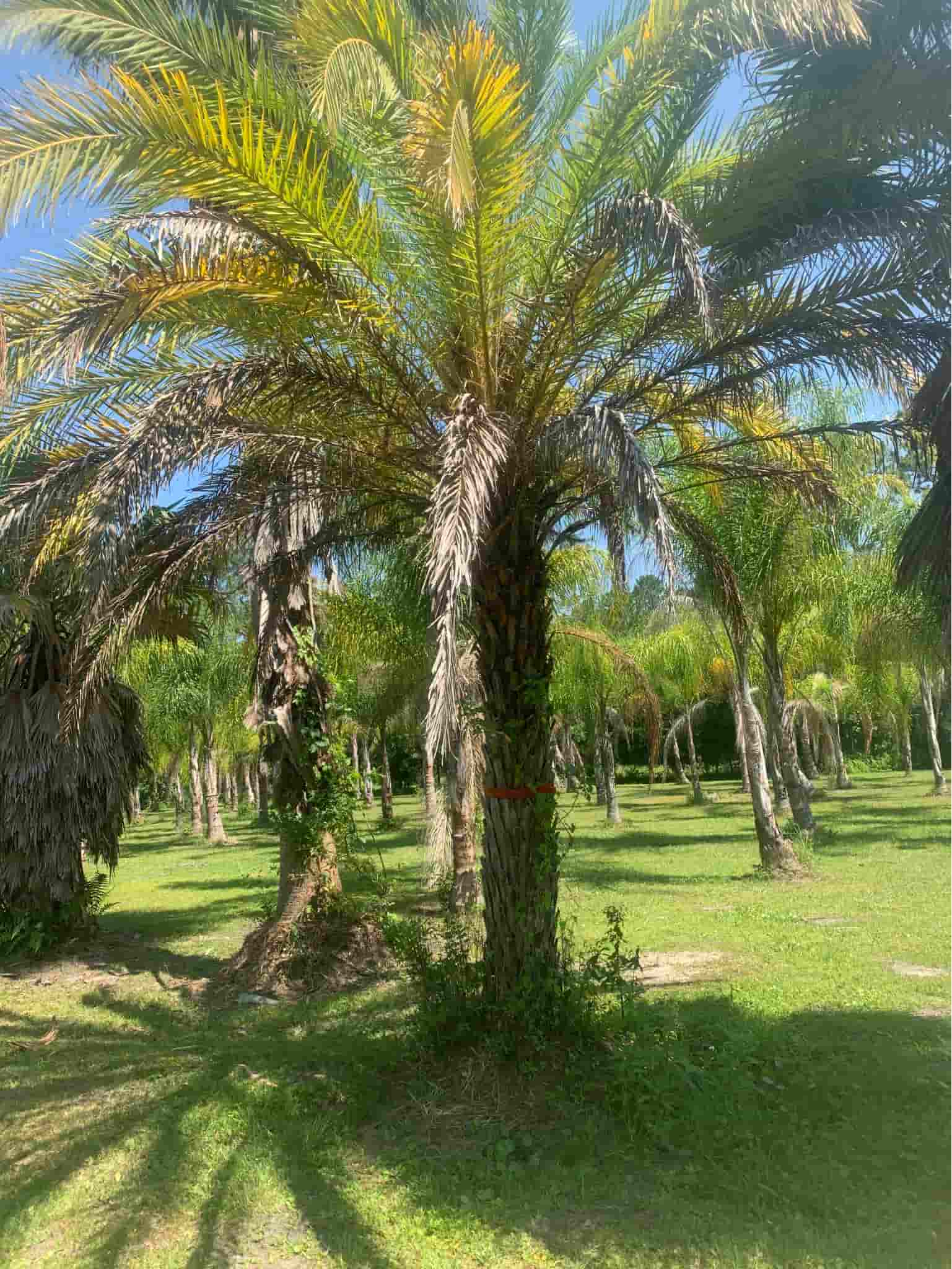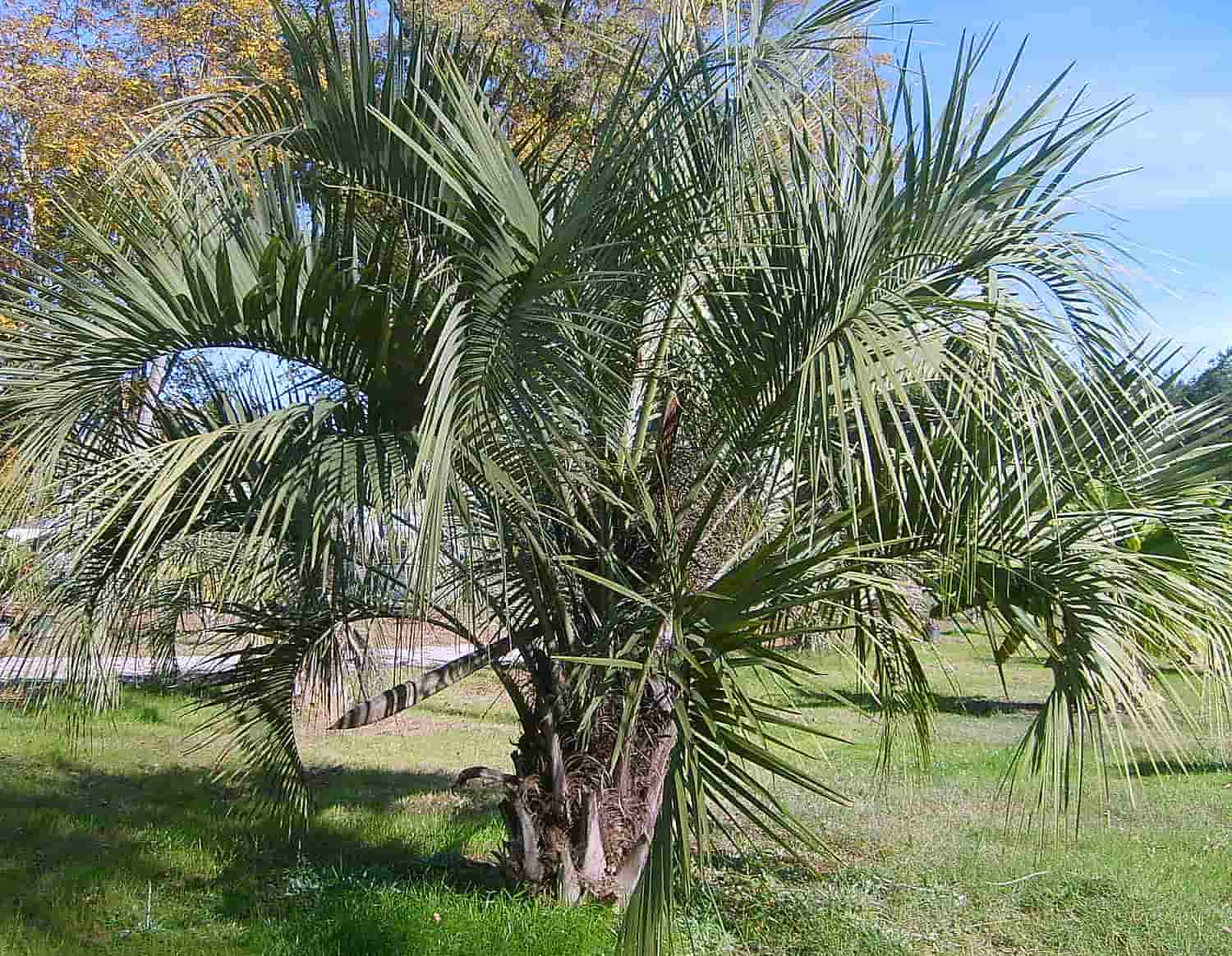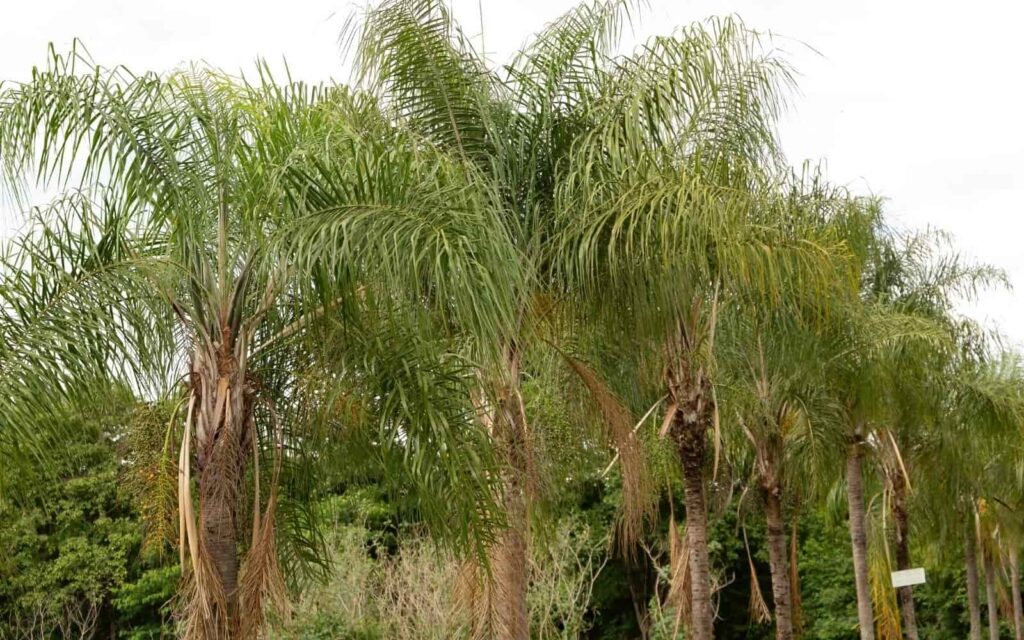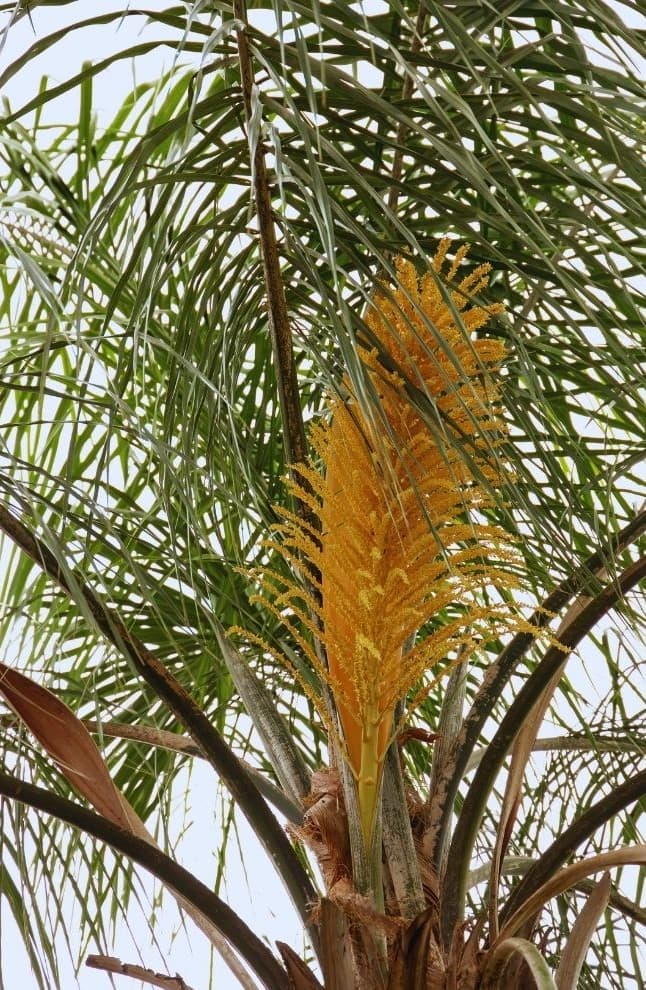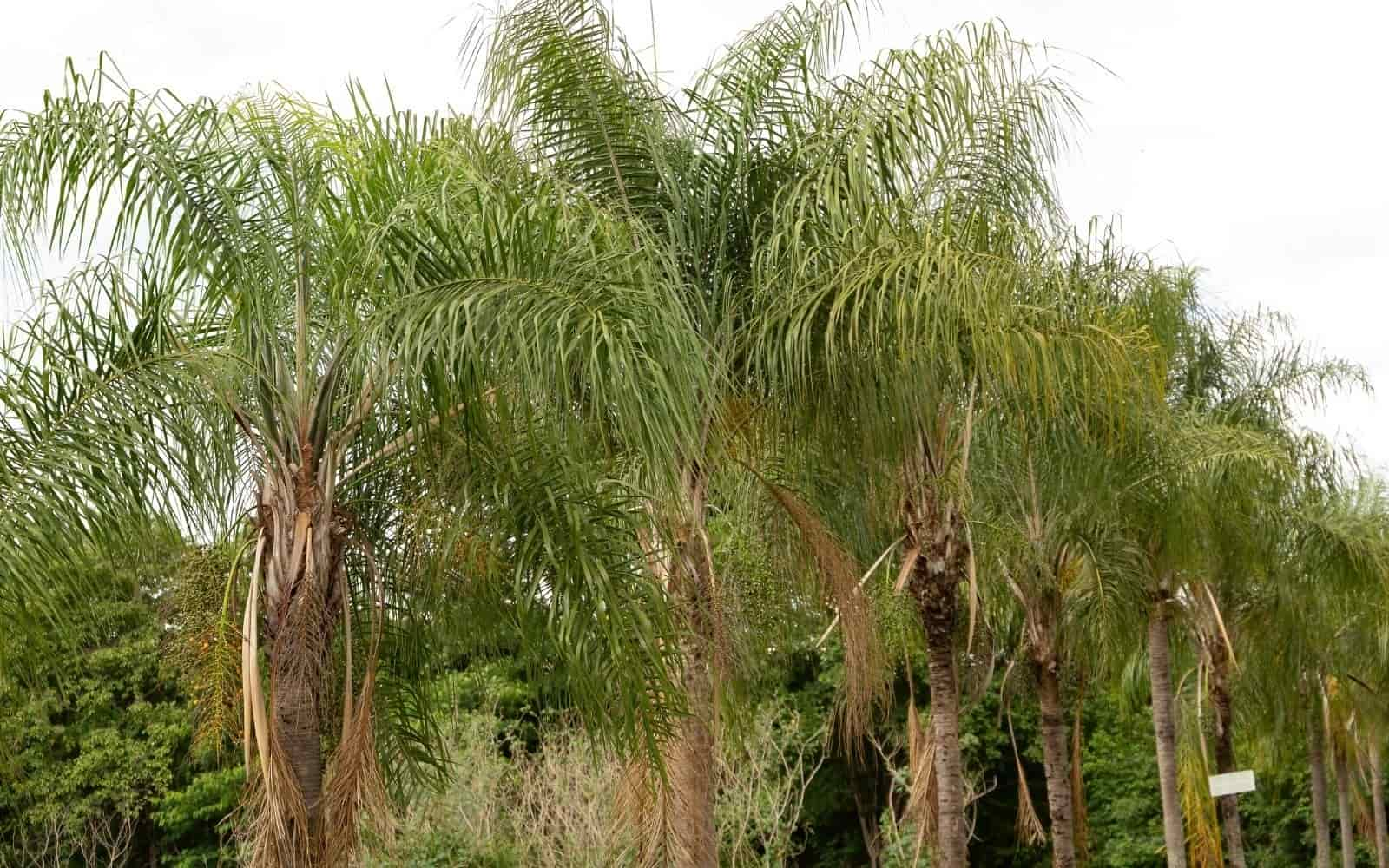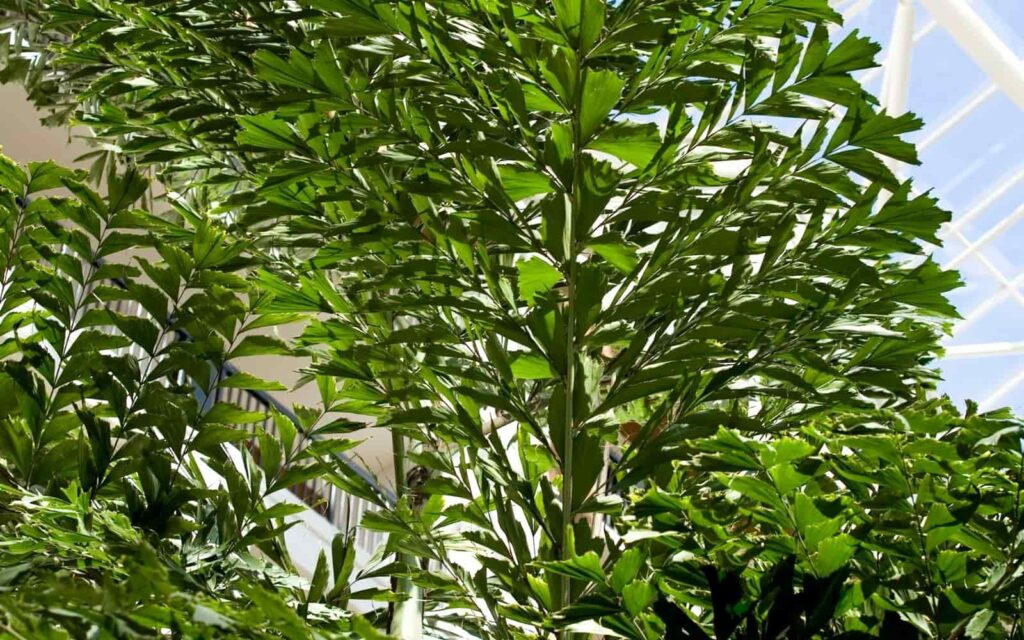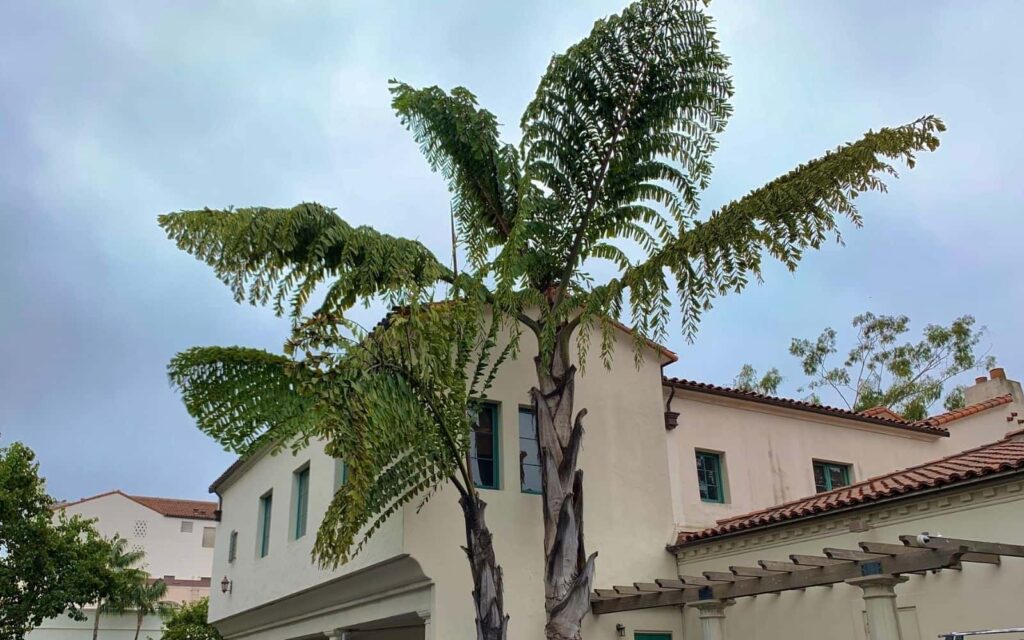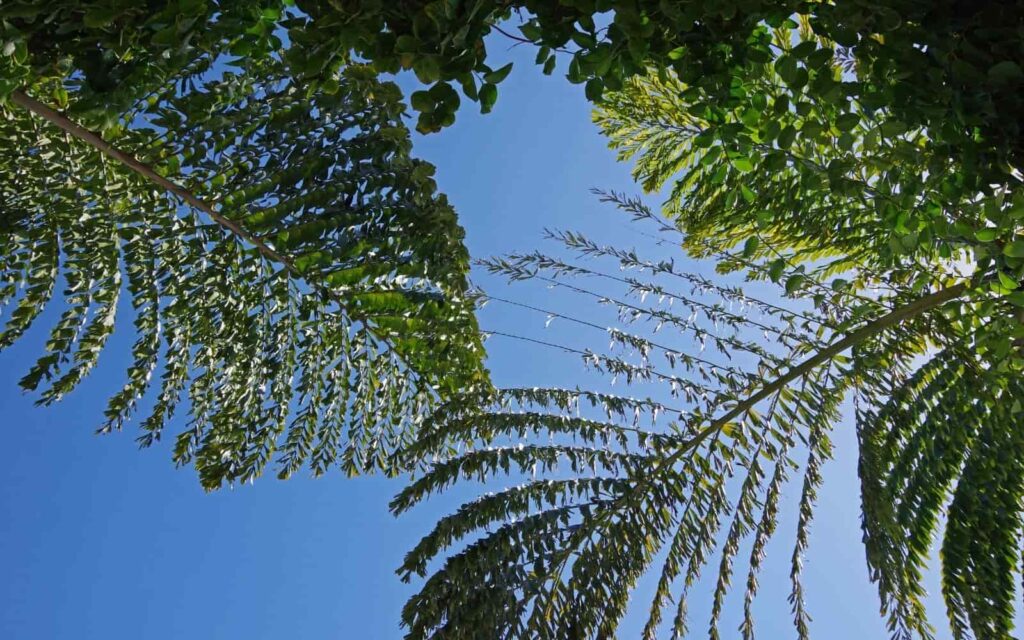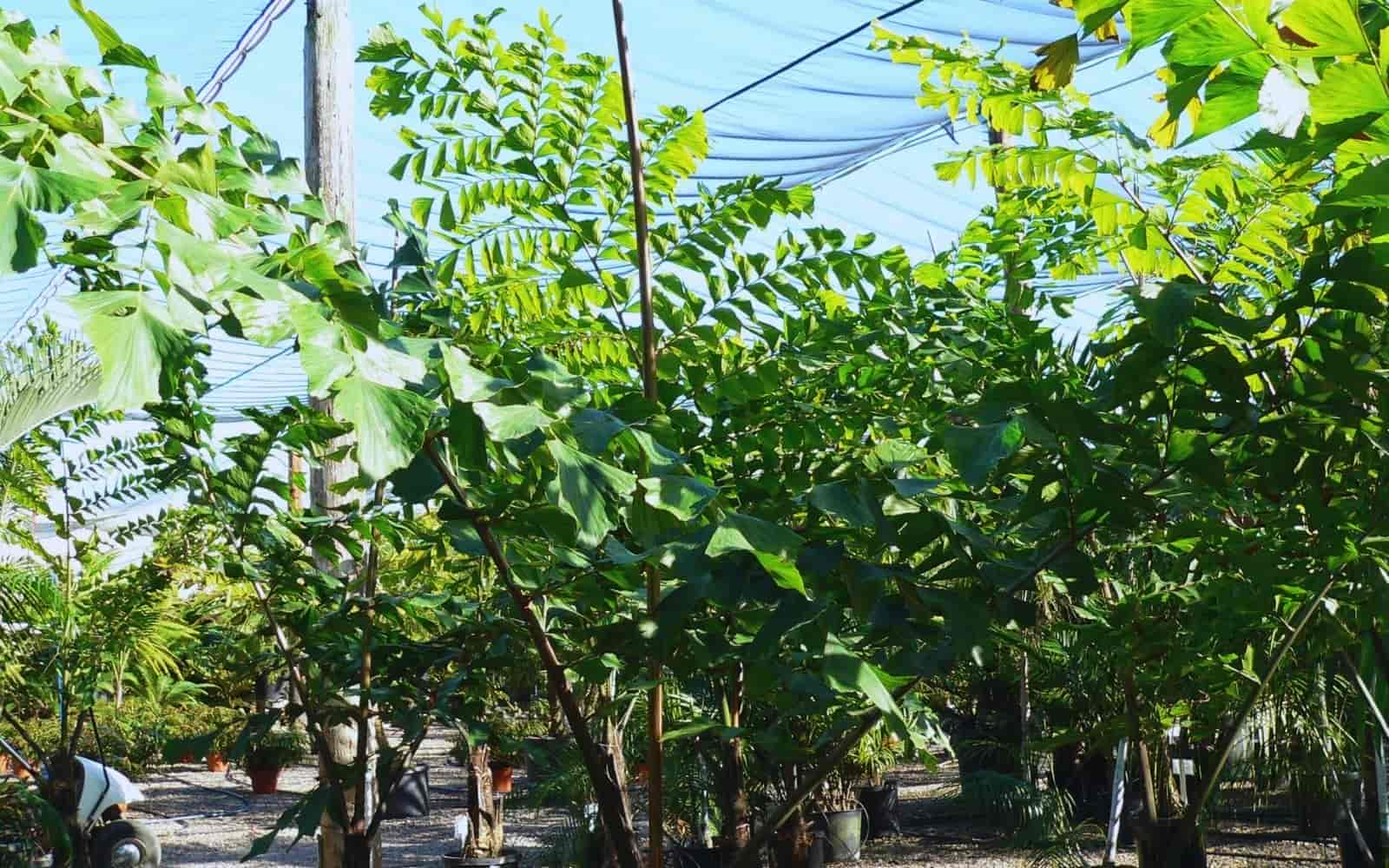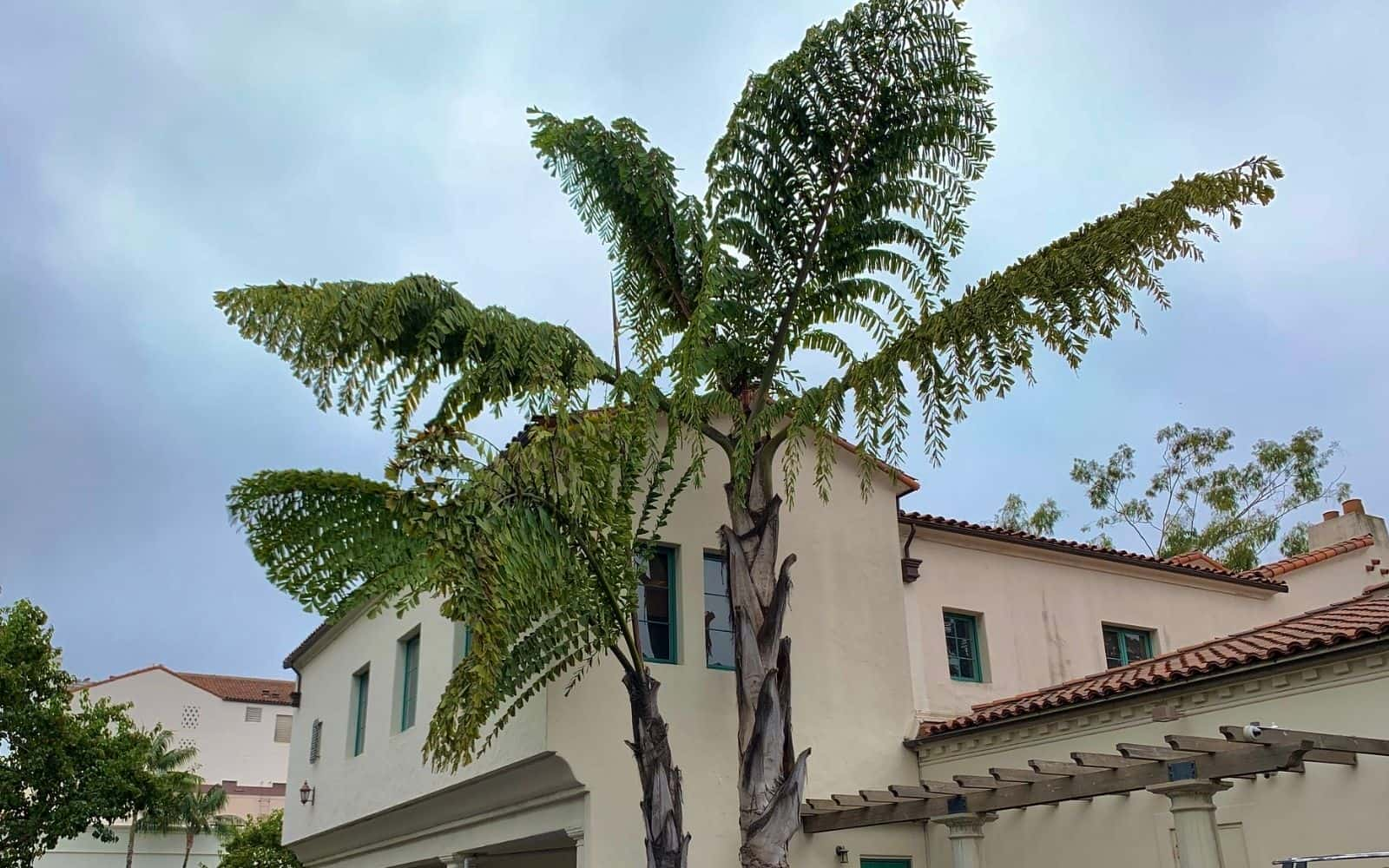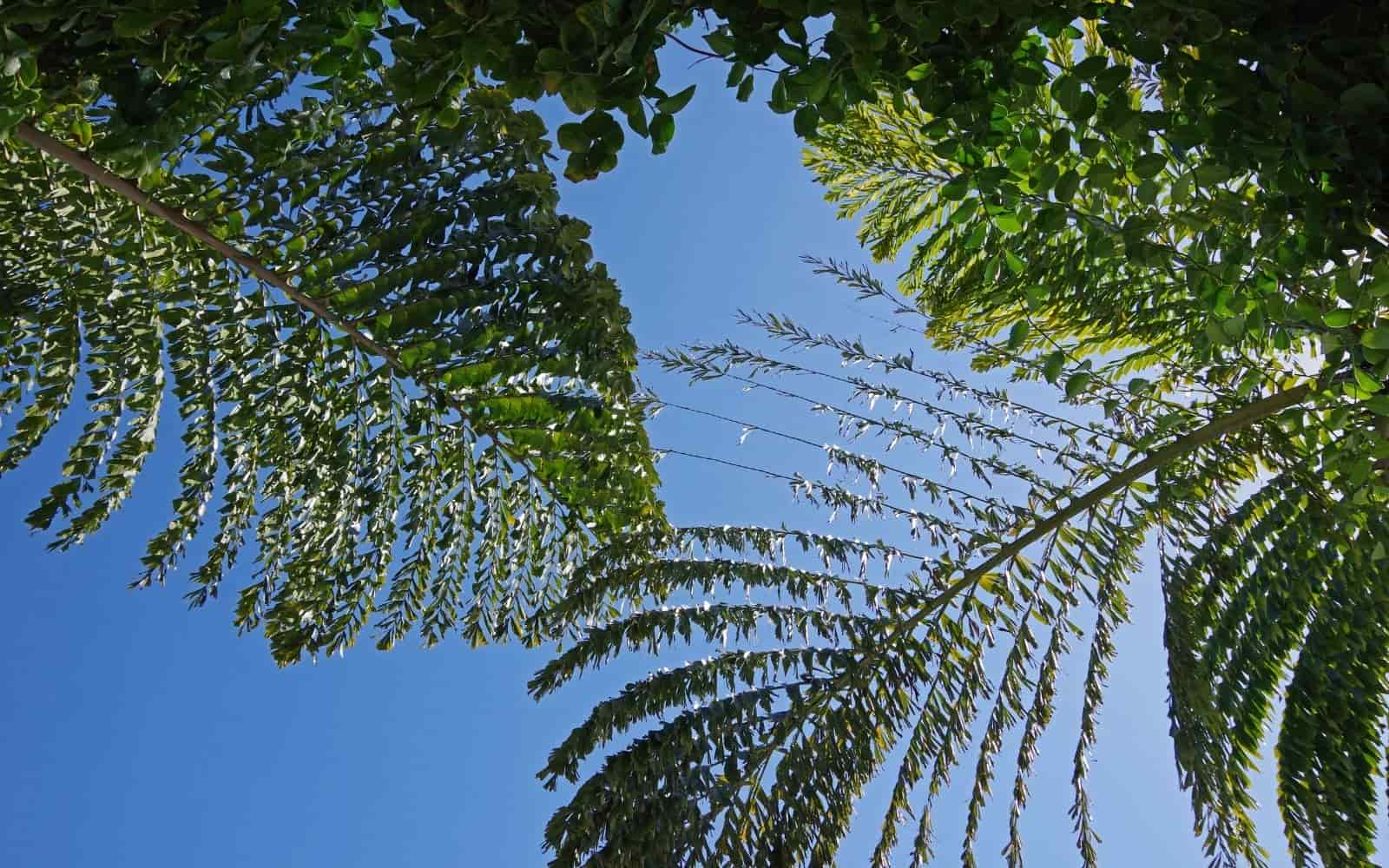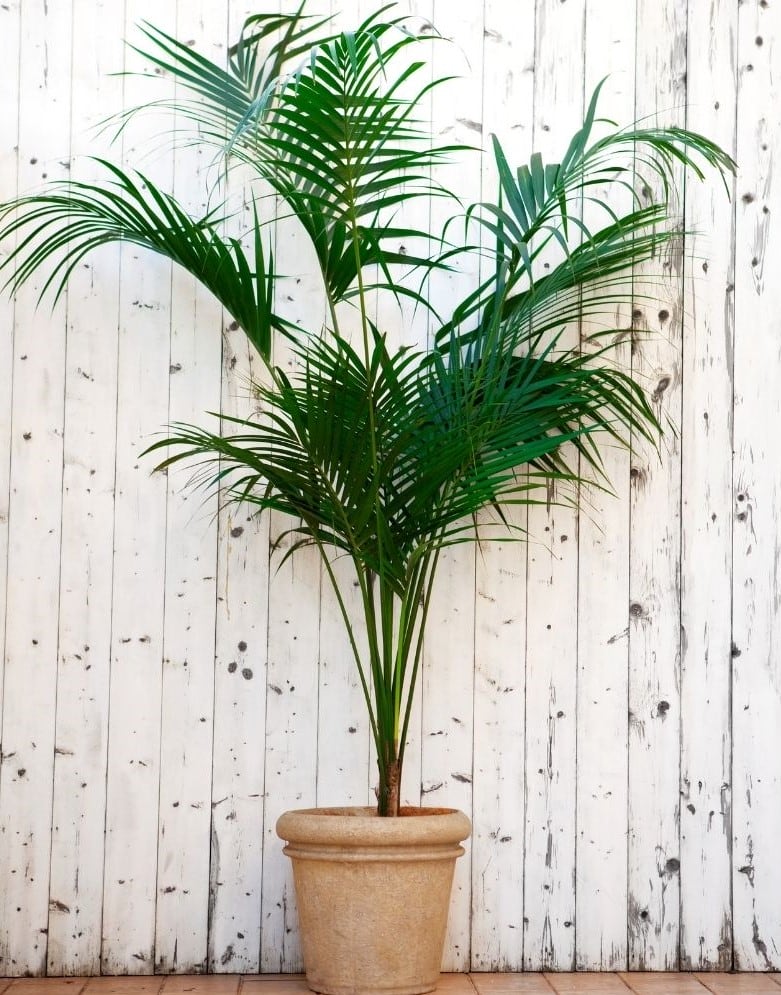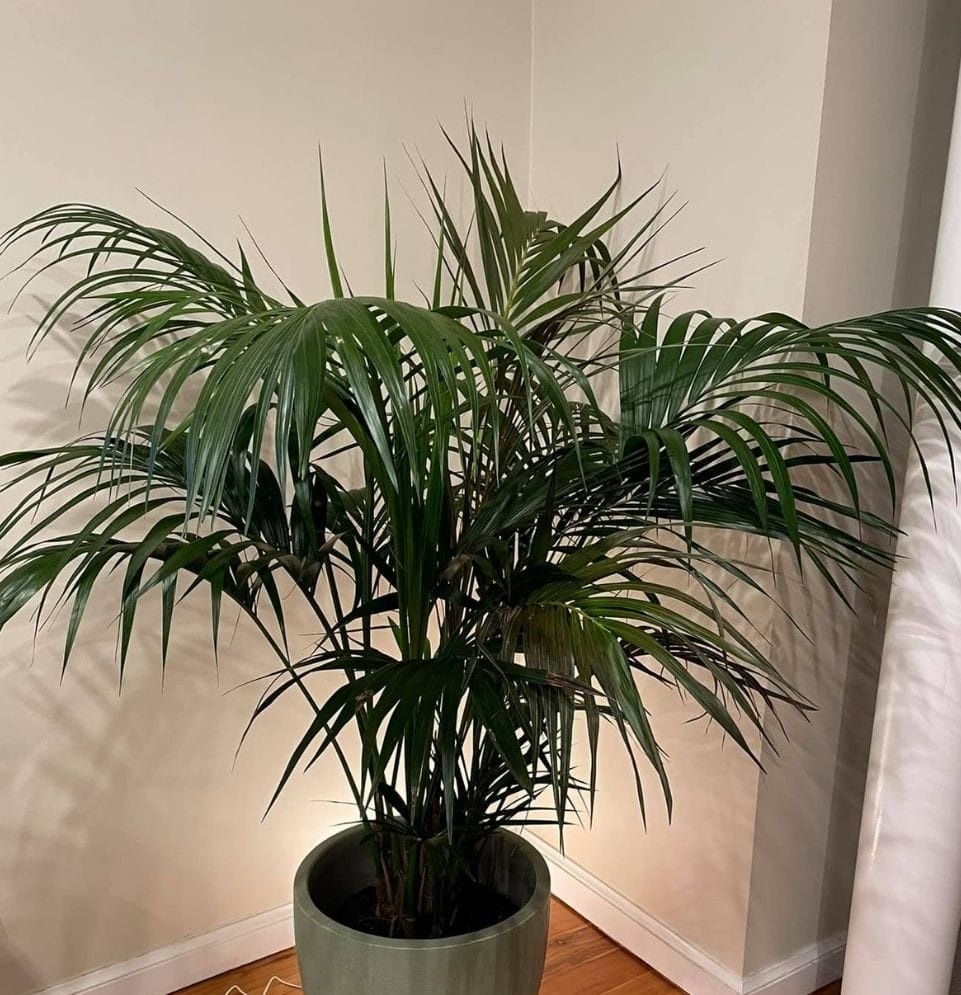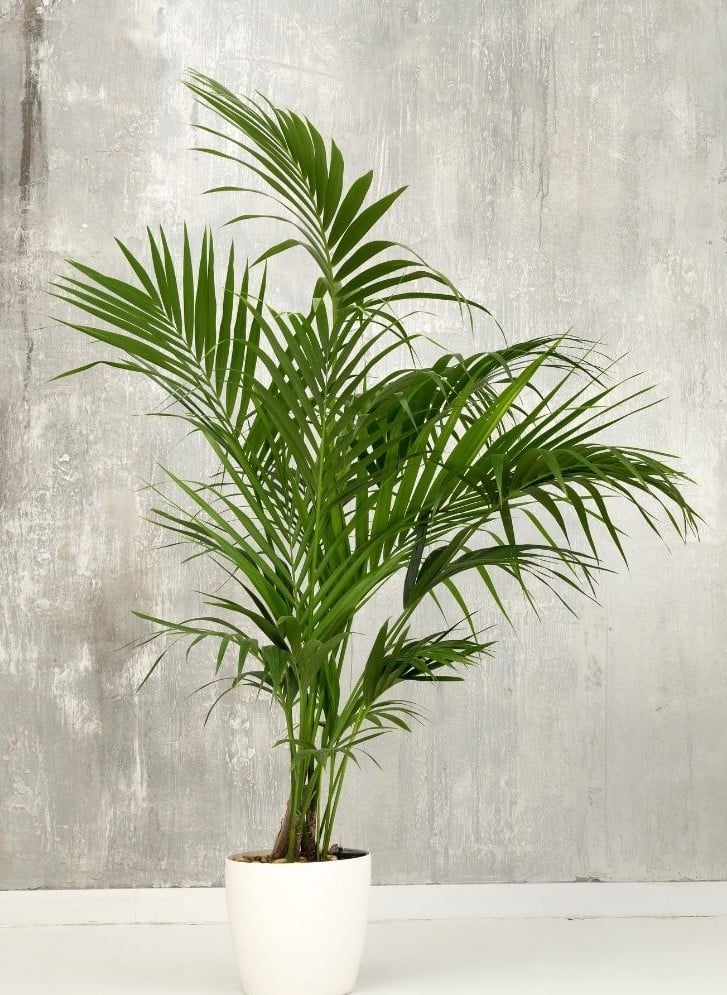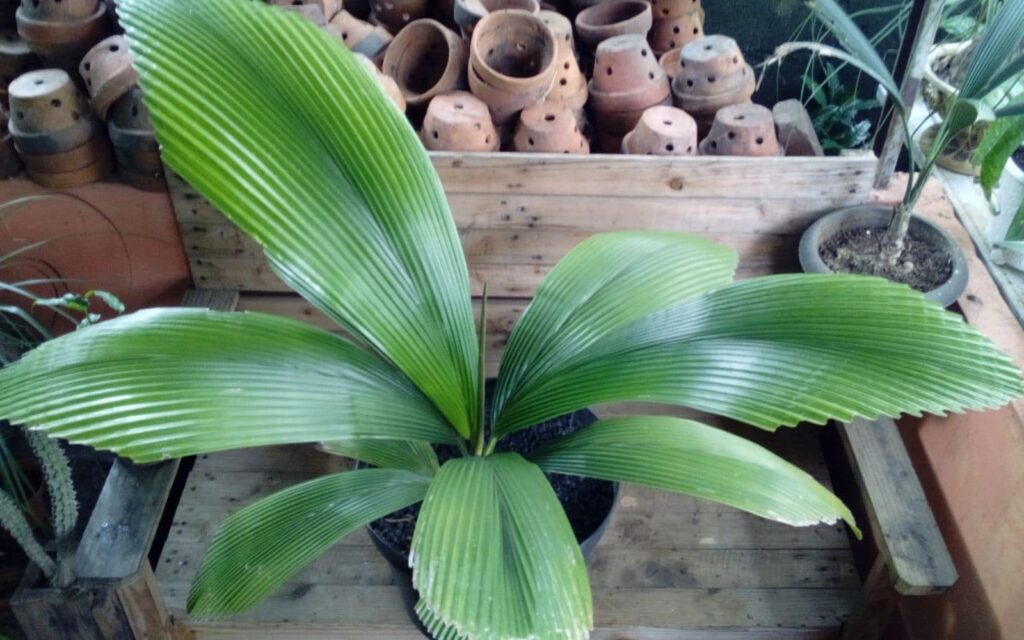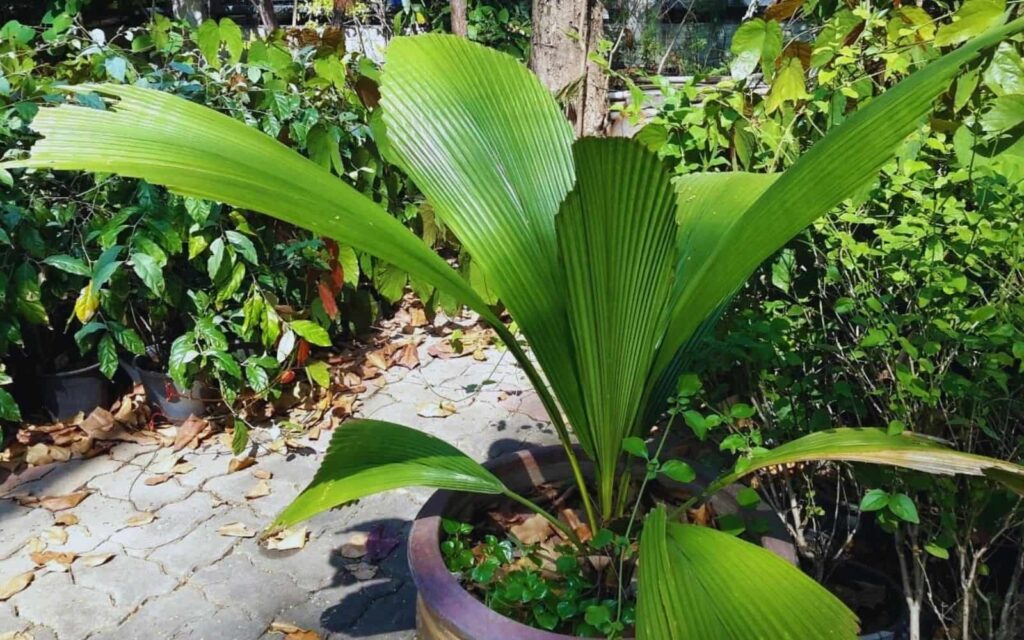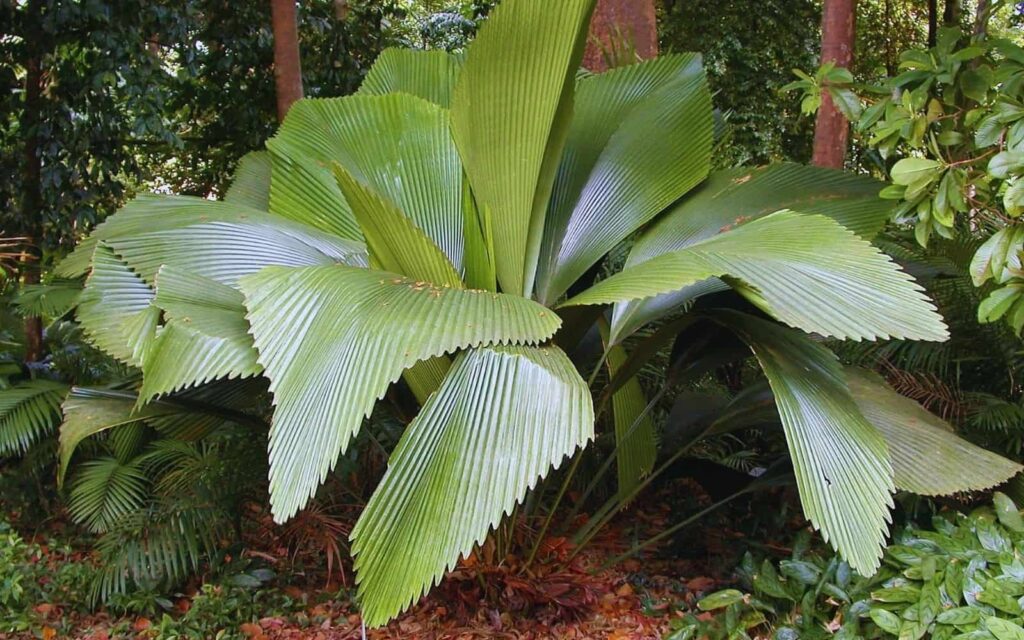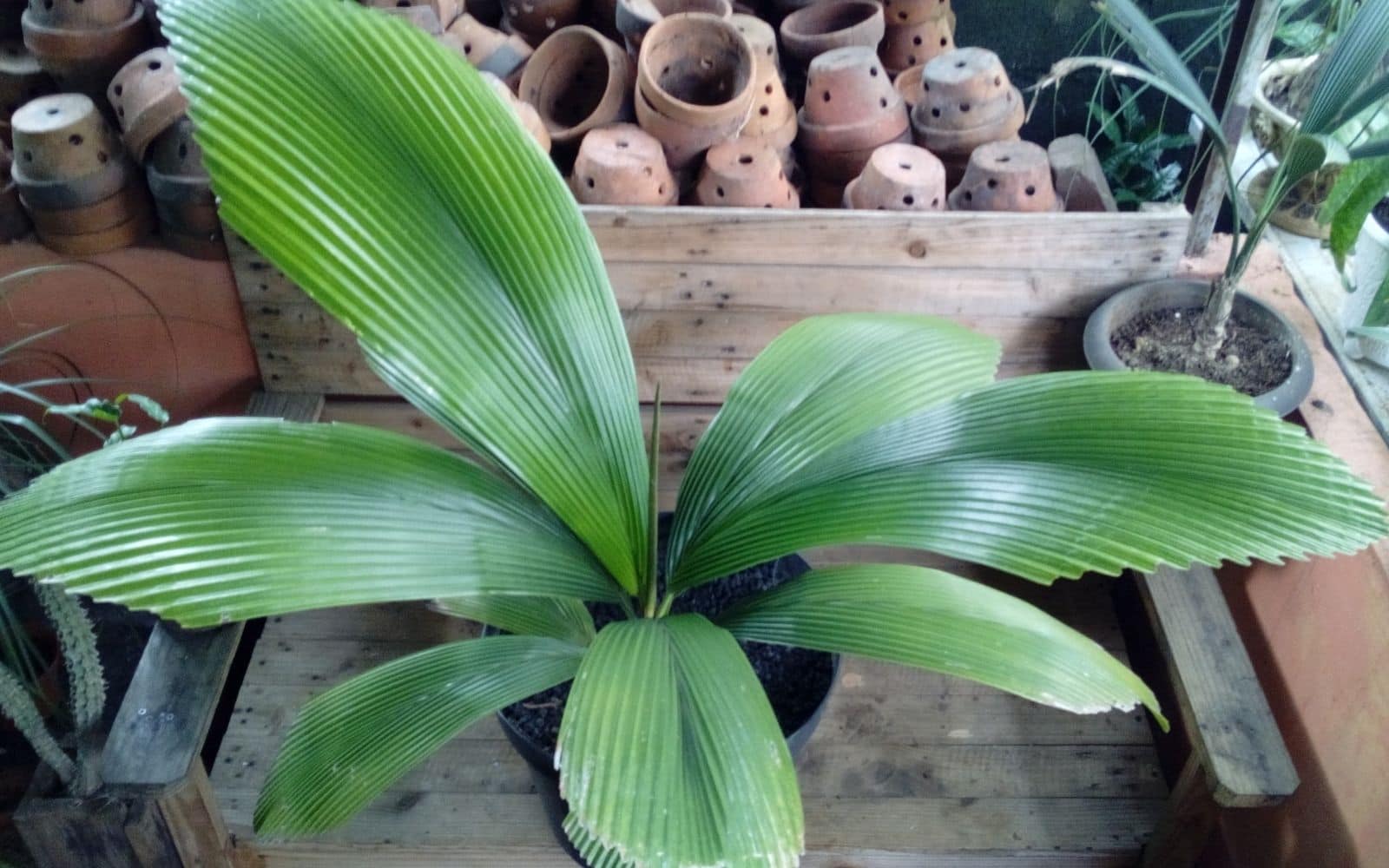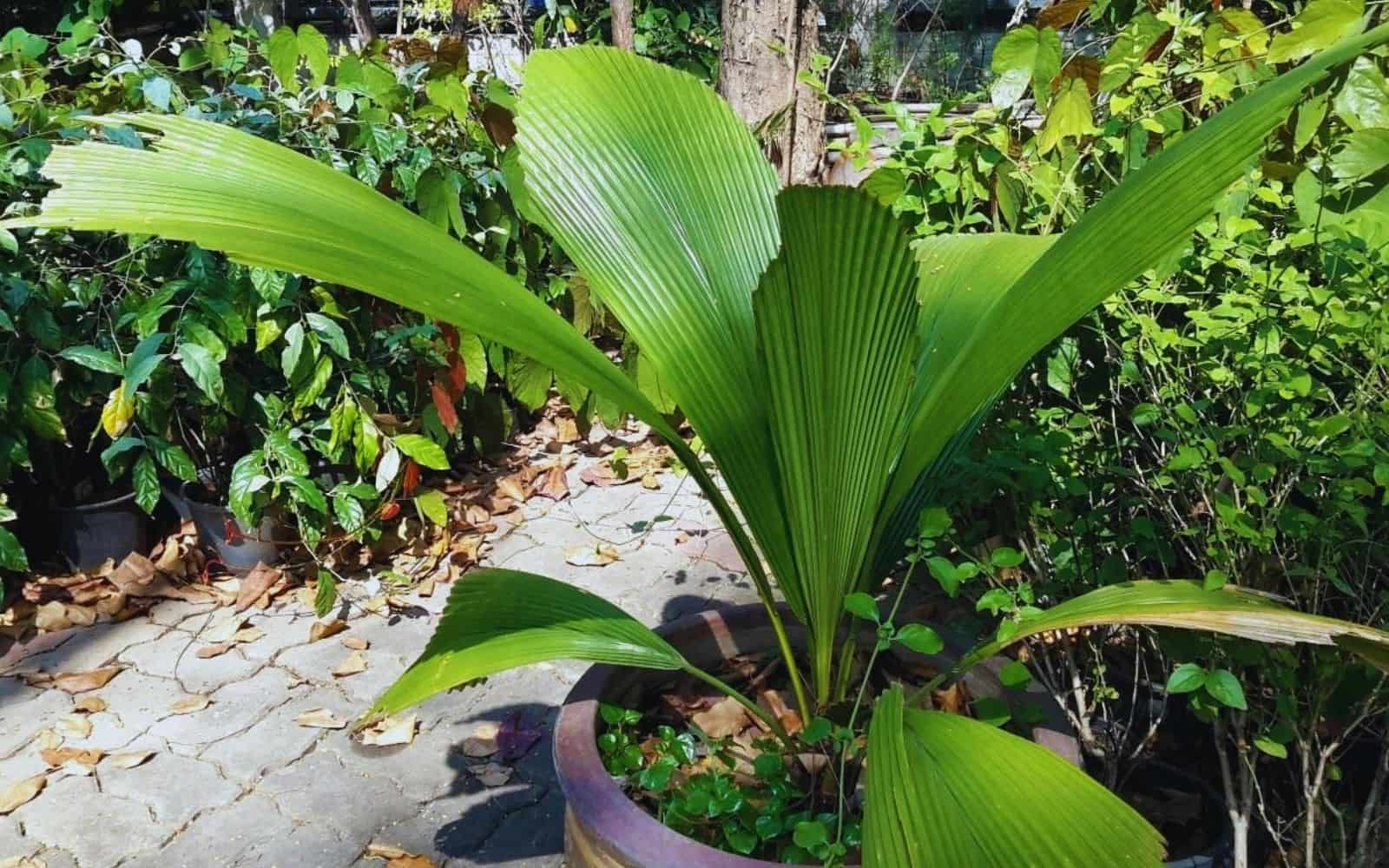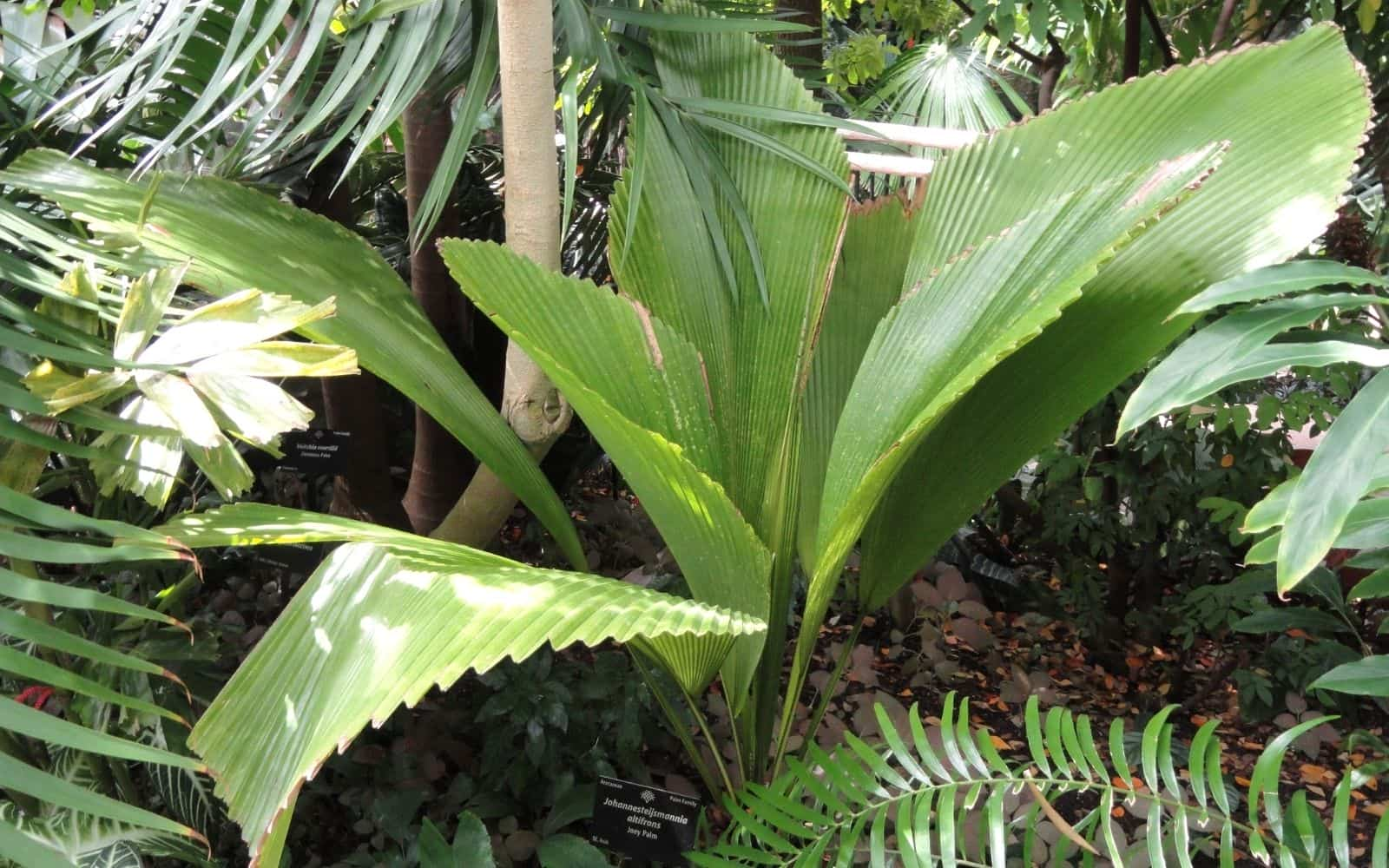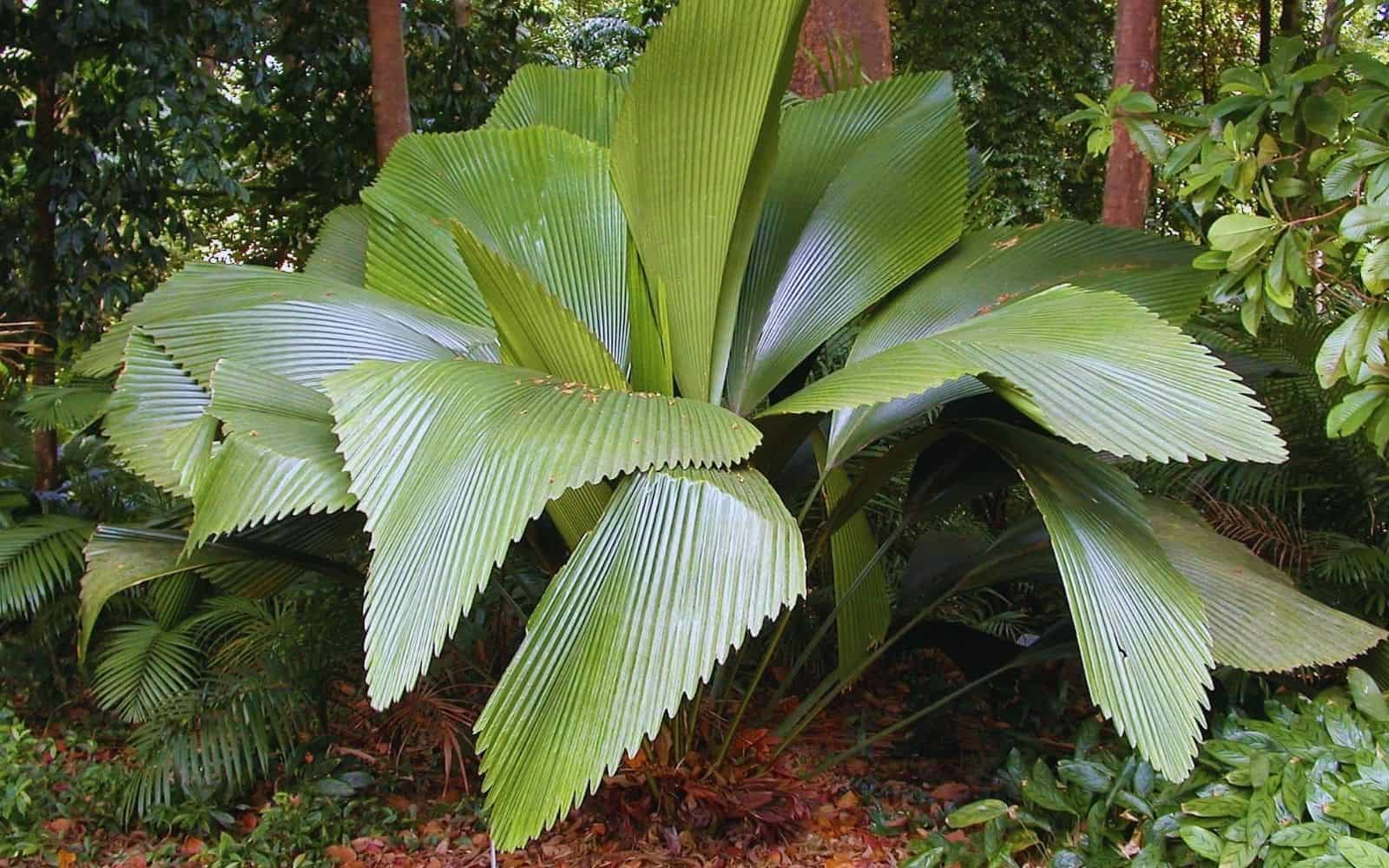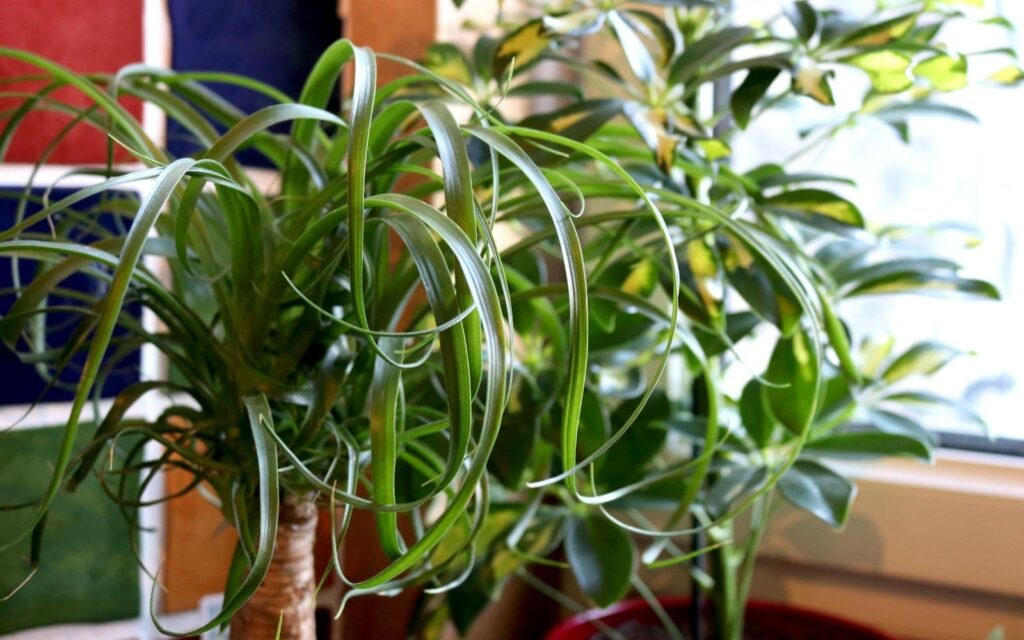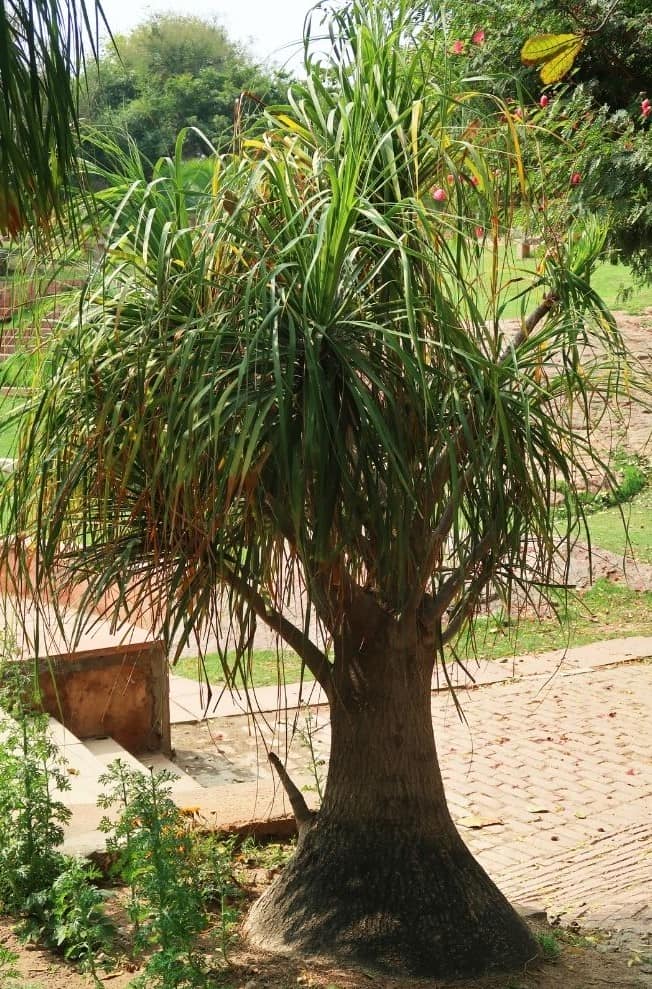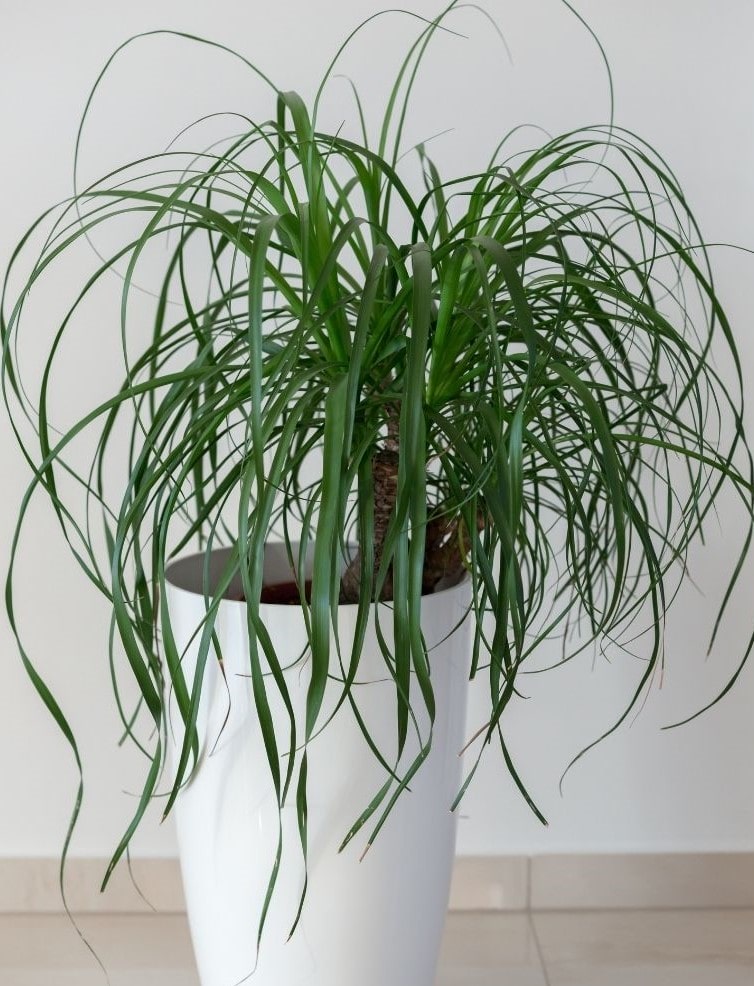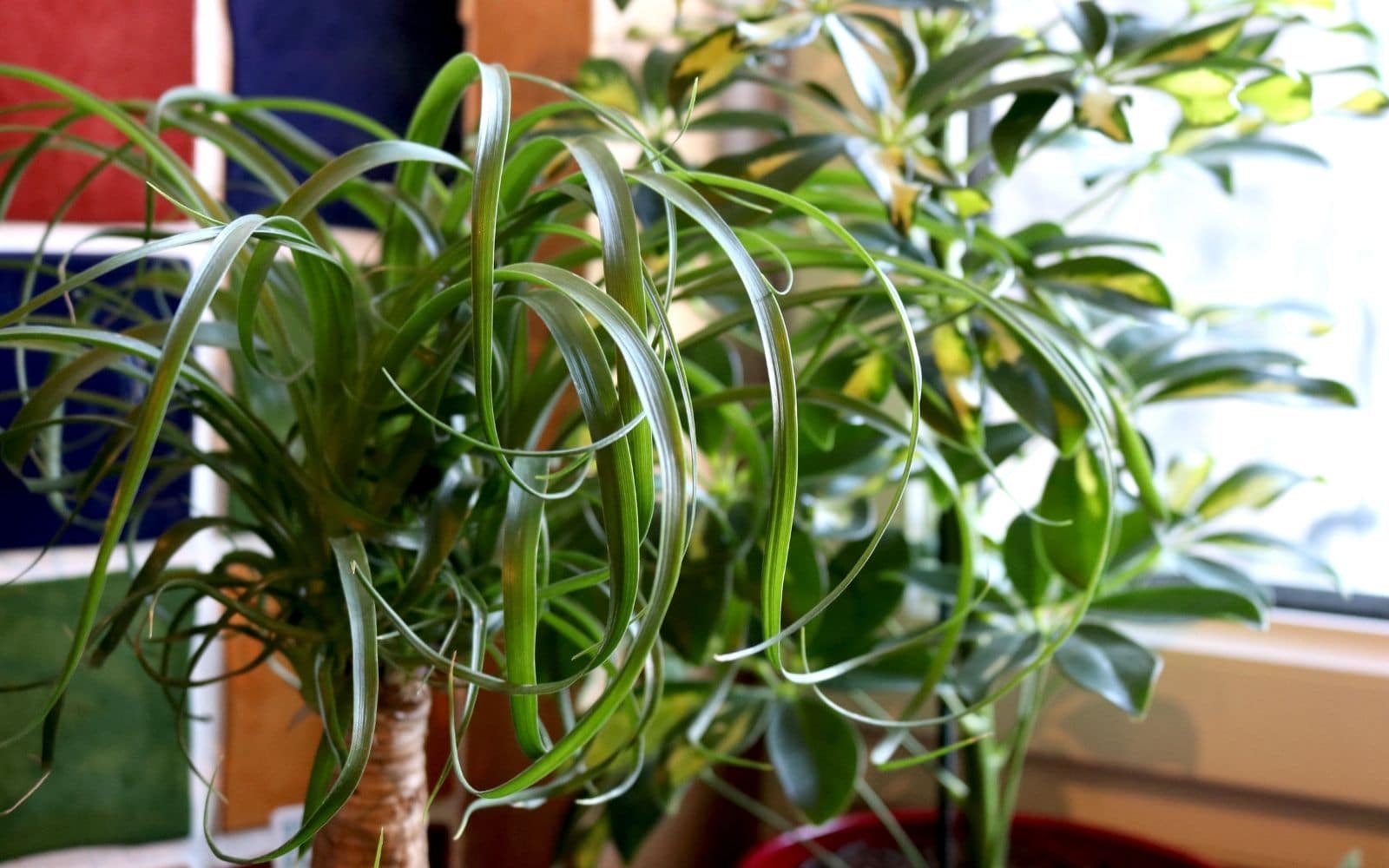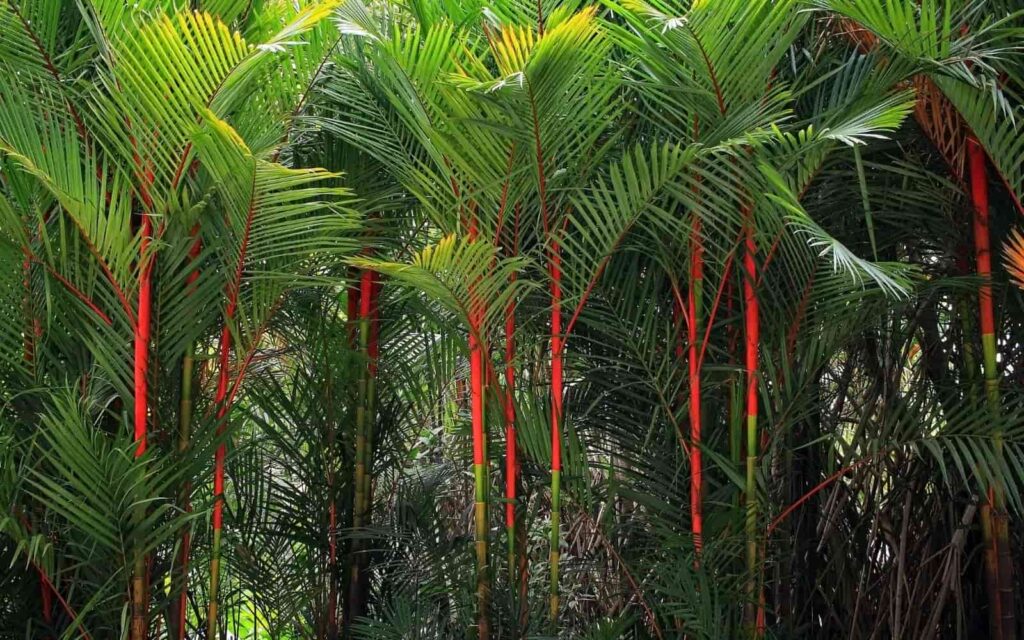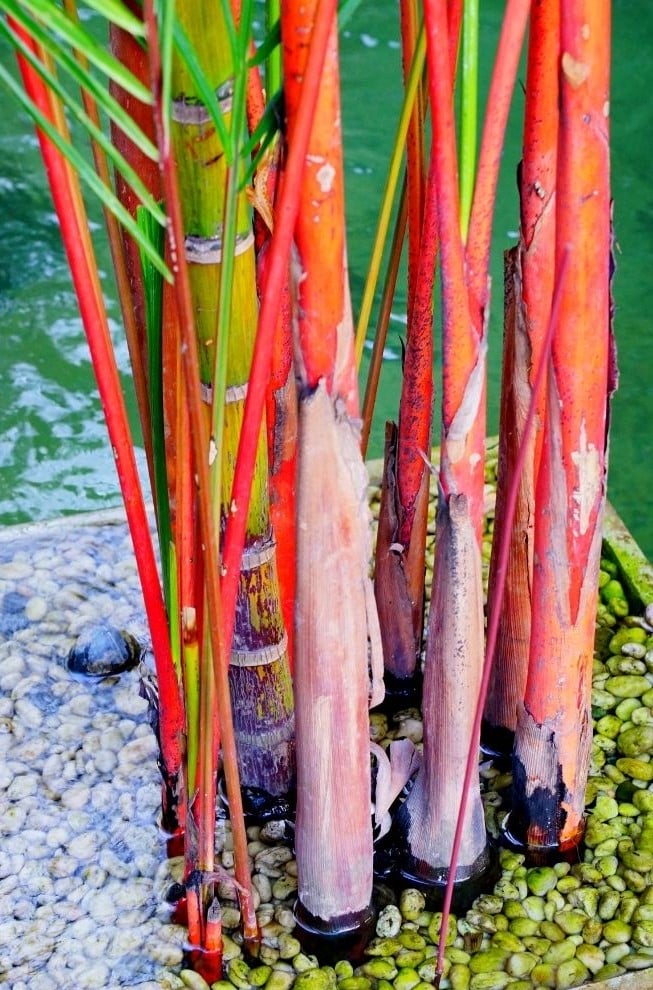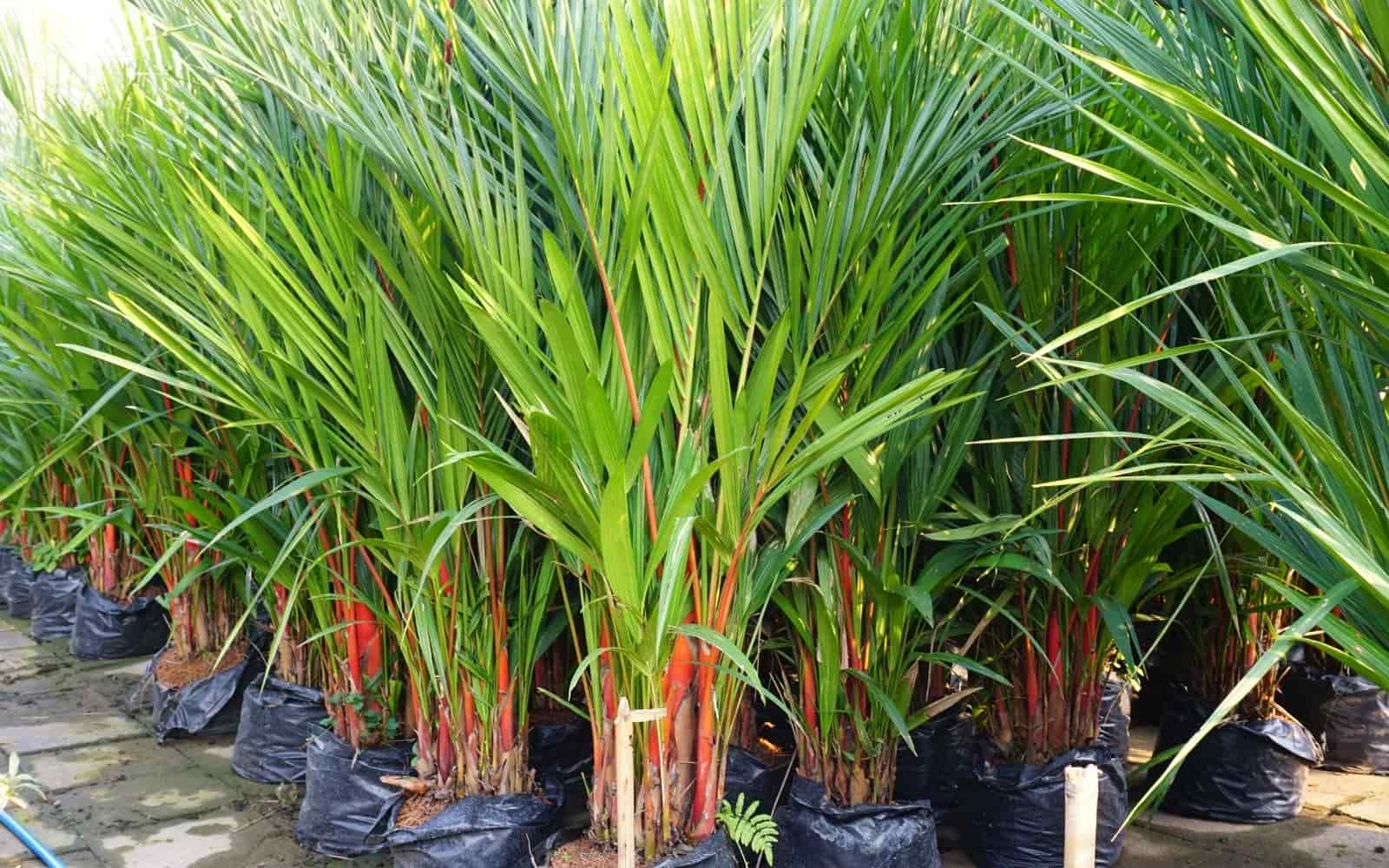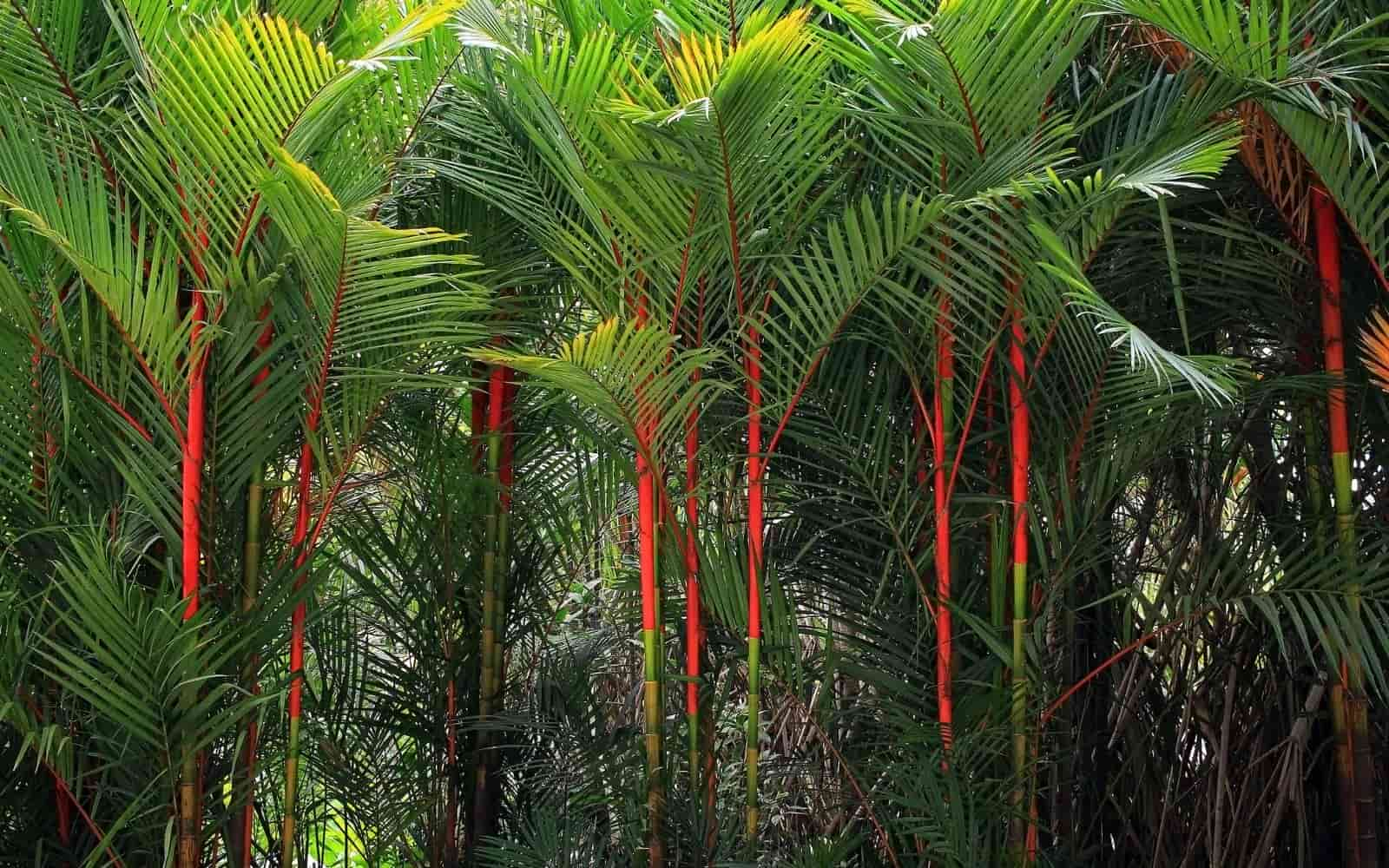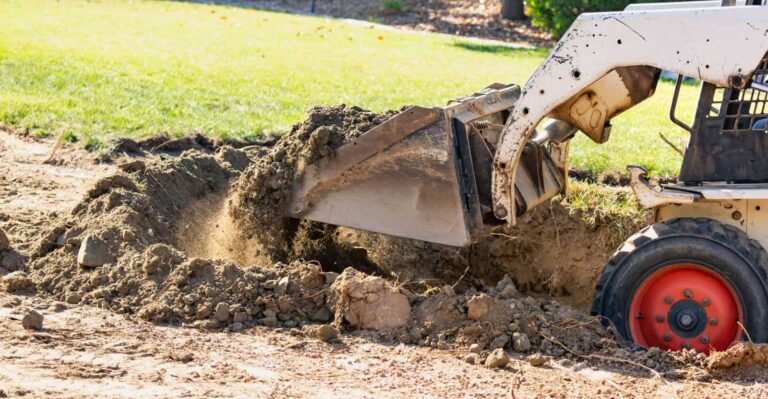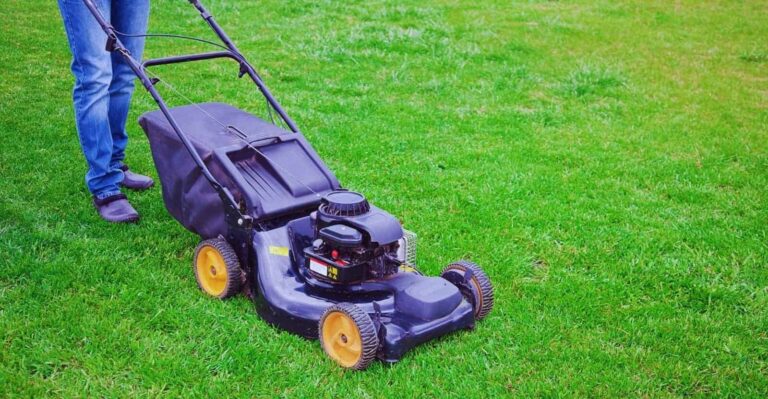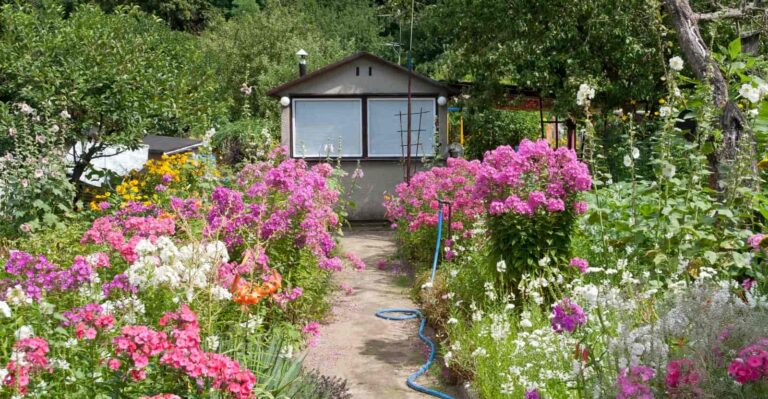Amazon has put together some great Home Gift Deals – save money and get your shopping done at the comfort of your home! Click here to see deals on Amazon
Do you want to grow a palm tree in your yard? Or perhaps you just want to know what types of palm are available. As you might imagine, there are many different types of palm trees, coupled with their beautiful and unique leaves.
The palm tree is one of the most recognizable plants in the world. But if you’re not a palm tree expert, you might not be able to tell the difference between a coconut palm and a sago palm just by looking.
The most popular types of palm trees are discussed below, and some care tips for each class.
What are palm trees, and how to identify them?
There are over 2,600 different species of palm trees that are native to tropical climates of the southern hemisphere. These trees are found in a variety of soil types, including sandy soil.
They tend to grow in the hotter areas of the world as palm trees are native to areas that were once part of the tropical rainforest biome.
The palms are primarily divided into two groups: fan palms and feather palms. Fan palm leaves are long and thin and come to a rounded point. Feather palms, meanwhile, have leaves that are short, flat, and come to a sharp point.
Most people assume palm trees to be tall and slender plants growing on the beach. But in reality, they come in different sizes. Small palm trees can reach a height of 5–10 ft, making them suitable to plant in a garden.
You can plant some other dwarf palm tree varieties indoors in containers. On the other hand, the larger palm trees, such as Date palm, can grow up to 75 ft – 80 ft tall. If you need a mega tall palm tree, the Wax Palm can grow up to 200 ft tall.
If you’re looking to identify a palm tree, you should first identify the family of plants that it belongs to. Palm trees belong to the Arecaceae family.
Looking at the palm leaf shape is the easiest way to determine the species of a palm tree. The palm leaves are either featherlike (pinnate) or spread out like a fan or open palm shape (palmate). There are also hybrid palm trees known as costapalmate leaves.
The second way to identify a palm tree is through its trunk shape. Tall palm trees have long slender single trunks, and dwarf varieties have short but fat trunks.
Other smaller species, such as pygmy date palms, have clustered trunks. Some newer hybrid species of dwarf palms (California fan palm) don’t have a trunk but have bushy pinnate fronds (fern or leaf of palm) growing in the soil.
Another way to identify palm is through the tree’s outer layer texture. Some taller varieties have smooth and slender trunks with ringed or rough appearance with grayish color bark. In contrast, other species have their trunks layered with a fibrous material giving a hairy appearance to the plant.
How to care for palm trees?
There is no doubt that palm trees are a popular choice for home landscaping. They provide a tropical feel, are easy to care for, and are drought-resistant.
However, the upkeep of these palm species does require some considerations. Follow these tips to care for it properly.
Soil: Palm trees prefer loose and porous soil rich with peat moss, shredded bark, and leaf mold. If you’re buying soil from garden stores, you can choose soil formulated for cactus or succulents.
If unavailable, you can choose general-purpose commercial potting soil and add peat moss or perlite yourself. These help keep soil retain moisture and improve aeration without letting the ground get soggy and compacted.
Light: Palm can thrive in low light conditions. You can plant it in the shade or areas where it can get indirect bright light. This makes it a great indoor plant to grow in a container.
Water: Palm trees don’t like to get waterlogged despite thriving in a warm and tropical climate. You should let the soil get dry between the watering schedule. Planting it in a terracotta or clay container helps with the excess water drainage while providing the required moisture to the roots.
Fertilizer: You can use compost or organic fertilizer that is rich in nutrients like potassium and manganese. If you see palm trees turning yellow or developing brown fronds, you should add potassium-rich fertilizer to bring it back to health.
Temperature: The ideal temperature for palm trees is above 50°F (10°C). Some cold-hardy varieties, such as kentia and parlor palm, can survive in lower temperatures.
What are palm tree varieties?
The palm tree is one of the most iconic symbols of the tropics and is often the first thing people think of when they imagine a lush, green forest. We have discussed here the most popular types below and their characteristics.
Small Palm Trees (Dwarf Palm varieties)
1. European fan palm (Chamaerops)
| Height | 10–15 ft tall |
| Appearance | Silver-green splitting leave |
| Sunlight | Full or partial |
| USDA | 7–11 |
The European fan palm is a cold-hardy plant that can survive at a shallow temperature. The genus consists of two palm species: the fan palm (Chamaerops humilis) and the coconut palm (Cocos nucifera).
You can grow it indoors, where it can reach up to 4 ft tall, and the trunk develops several sharp spines as it matures. The leaves’ color ranges from silver to blue-green that naturally splits as it grows, depending on palm variety.
These are slow-growing palm trees at 5 inches a year, making these excellent container indoor palm trees.
2. Areca Palm (Dypsis lutescens)
| Height | 6–7 ft tall |
| Appearance | Feather, arching fronds |
| Repotting | Every 2–3 years |
| Temperature | Warm climate 65°F—75°F (16°C—24°C) |
Areca palms are one of the most popular small palm plants that can be grown indoors or outdoor. These are popular ornamental plants because of their decorative shape and beautiful fronds. They’re also very hardy plants that can survive almost any growing condition.
These are also known as yellow palm, bamboo palm, golden cane palm, or butterfly palm. These have a medium growth rate of six to ten inches per year till they reach maturity.
It has beautiful feathery fronds with a silver-green trunk. A cluster has six to eight leaves that curve up toward the petiole, giving them a butterfly-like appearance.
3. Needle Palmetto (Rhapidophyllum Hystrix)
| Height | 5–6 ft tall |
| Appearance | Shrubby trunkless palm |
| Soil | High organic matter |
| USDA | 7–10 |
This is a prevalent invasive plant in Florida and South Carolina, also known as a sea palm. The palmetto grows and spreads quickly. It thrives well under full sun and is very cold hardy. As its name suggests, it has very sharp-pointed needle likes leaves that grow upwards.
You have to keep your pets away due to their sharp spines. It’s a slow-growing palm which makes it ideal for growing indoors or in a container. It can tolerate salty and wet soil but thrives in the shade.
It’s a deer-resistant plant that you can plant outdoor. You can also plant it in a row to make a natural fence to keep the lawn destroying animals out of your garden.
4. Yucca Palm (Yucca elephantipes)
| Height | 5–6 ft tall |
| Appearance | Shrub, tree type with long green leaves |
| Flower | White, Pink creamy flower |
| USDA | 4–11 |
Yucca palm is a slow-growing drought-tolerant houseplant. It has razor-sharp leaves with pointy tips. It grows well in sandy, well-drained soil with a pH level between 5.5 and 7.5. It’s a flowering palm that blooms creamy-white, pink flower making an excellent ornamental tree.
In the wild, there are more than 40 different species of yucca. But for indoors there are few suitable varieties. People tend to grow Yucca guatemalensis, also known as spineless yucca or Yucca aloifolia, known as Spanish bayonet.
When planting indoors, maintain enough space as the leaves can grow up to 20 inches tall and is very sharp. Make sure to keep pets and children away when growing indoor.
5. Chinese Fan Palm (Livistona chinensis)
| Height | 30–40 ft tall |
| Appearance | Fan-shaped (palmate) leaves |
| Soil | well-drained, loamy soil |
| USDA | 9–11 |
When fully grown, Chinese fan palm (also called fountain palm) can be pretty tall, but you can plant dwarf variety indoors in a container. A fully matured tree can reach up to 40 ft tall and can live for decades.
They grow best in tropical and subtropical climate but is also hardy and not much bothered by cold weather. It has star-shaped leaves that make it distinct from other palm types with feathery frond leaves.
The slow-growing dwarf variety such as Subglobosa can be grown indoor. Ensure to have a large pot to allow the roots to spread and feed it with a slow-release fertilizer. It gives a bushy appearance when it’s young but turns into a tree as it matures.
6. Cascade Palm (Chamaedorea cataractarum)
| Height | 6–8 ft tall |
| Appearance | Cascading fronds |
| Soil | Moist soil |
| USDA | 9–11 |
With the popularity of palm trees in residential and commercial settings, it’s easy to pick out the Cascade palm, which thrives in any type of climate.
It’s a trendy indoor tree and a great addition to any home or office. It’s also known as Cat palm or Mexico hat palm. You can grow it in the shade with consistently moist soil.
The dark green cascading leaves and feather fronds make it a great addition to any home. When planting it outdoor, this tough palm tree can handle wind, rain, and drought. It prefers bright indirect light and can tolerate some shades.
7. Parlor Palm (Chamaedorea elegans)
| Height | 6–8 ft tall |
| Appearance | Green leaves with palm-like shrub |
| Soil | Acidic to neutral |
| USDA | 10–12 |
Parlor palms are usually found in the southeastern United States and the Caribbean. These palms are found in gardens, parks, and along the side of the road. It has a reed-like medium-tall slender stem that grows light-green pinnate leaves.
It has a slightly bushy appearance as each stem can produce 6 to 7 leaves. You can buy the dwarf variety that can be planted indoor where it doesn’t grow taller than 6 ft.
It’s a very low-maintenance plant that thrives in acidic to neutral soil. You can also place it in a basement or other low-light conditions where it can effortlessly survive.
8. Bottle Palm Tree (Hyophorbe lagenicaulis)
| Height | 10–15 feet tall |
| Appearance | Swollen base with an enlarged trunk |
| Soil | Moist organic-rich soil |
| USDA | 10–11 |
A bottle palm tree is an easy-to-grow fan palm tree and is much more popular than other palms. They get their unique name from the bottle-like shape of their trunk.
The plant has a fat swollen base with an enlarged trunk that looks like a bottle. This is a great ornamental plant to grow on any porch patio or at the garden center.
The tree has green, long leaves with sparse fronds giving it a very distinctive look. You can also grow it indoors as it’s a very slow-growing palm. It thrives in the shade of a jungle or tropics but is also a good choice for any garden.
9. Mediterranean Dwarf Palm (Chamaerops humilis)
| Height | 10–15 feet tall |
| Appearance | Clustered trunk with shrub appearance |
| Soil | Well-drained rich soil |
| USDA | 8–11 |
The Mediterranean fan palm is a beautiful-looking short palm tree. The regular version can grow up to 15 feet tall, but its smaller version, also known as Dwarf dare palm, can grow much smaller than that.
The fronds are light green to silver-green that grow in a fan shape. The leaves can grow up to 5 ft long. It’s suitable to grow in containers, hedges, and small gardens.
It produces tiny clusters of few, yet lovely, date-shaped, green-brown fruits. These trees are slightly less than 4 feet tall, and most of the time, are planted around the perimeter of the garden. This makes it a fantastic screen cover as they have a dense appearance.
10. Sago Palm Tree (Cycas revoluta)
| Height | 3–10 ft tall |
| Appearance | Long green fronds that grow from a trunk |
| Growth Rate | Slow grower at 2–3 feet per year |
| USDA | 9–10 |
A Sago palm is a beautiful tropical small palm tree that looks like a palm but doesn’t belong to a palm genus. It belongs to the Cycadaceae family that looks like a palm. It has short trunks and fronds that grow in a fan shape.
They’re native to the South Pacific and have been grown in containers for a long time. Their short trunk and bushy appearance resemble a pineapple plant. You can grow it both indoor and outdoor in the container, and they’re effortless to maintain.
11. Sylvester Palm (Phoenix sylvestris)
| Height | 20–50 ft tall |
| Appearance | Silver-green fronds with 2–3 meters long leaves |
| Hardy | Cold tolerant up to 10°F (-12°C) |
| USDA | 8–11 |
The Silvester’s palm is a fast-growing, large-leaved evergreen that has a spike-mound-like appearance. It can reach a mature height of 32 to 45 feet. In the wild, Sylvester’s palms are found in the warm countries of southern Asia and tropical Africa, such as Madagascar and Seychelles.
For those looking to plant it indoors, you can choose a shorter dwarf species of Sylvester that grows up to 13 ft tall. When fully grown, the foliage gives an umbrella-like look with leaves that can spread up to 12 feet.
Tall Palm Trees
12. Queen Palm (Syagrus romanzoffiana)
| Height | 20–50 ft tall |
| Appearance | Tall and straight trunk with spread out canopies |
| Flowering | Large plumes of small flower |
| USDA | 9–11 |
Queen palms are common in warm climates and have beautiful leaves and white flowers in winter. These are tall palm trees that can reach up to 50 feet tall and have pinnate leaves.
The Queen’s palm has a smooth, straight trunk with arching fronds. Due to their tall size, they’re preferred to be grown outdoor around the perimeter of a garden.
It may need some care while growing as it grows best in well-drained soil in full light. If you’re planting in a drought-prone area, it can withstand harsh conditions up to some extend. But for the best look, keep it watered regularly. You often have to prune dead fronds to keep them at their best appearance.
13. Christmas Palm (Veitchia merrillii)
| Height | 15–25 ft. |
| Appearance | Tall and straight trunk with fanned out leaves |
| Flowering | Bright red cherry fruits |
| USDA | 9–11 |
The Christmas palm has an upright growth habit and is considered a large, fast-growing palm. When fully matured, it can grow to over 25 feet tall. They can be kept as a smaller plant by pruning regularly.
Christmas palms usually have a single trunk with a crown of thick and stiff leaves. It grows a cluster of bright cherry red fruit (called a drupe). It’s a fast grower when small, but growth slows as it matures.
It blooms a soft creamy color flower in summer that turns green and red when edible fruit ripens. It’s a great outdoor tall plant and a must-have addition to any commercial or residential space.
14. Mexican Palm tree (Washingtonia robust)
| Height | 10–15 ft. |
| Appearance | Single trunk with arching fan-shaped leaves |
| Pruning | Frequently |
| USDA | 9–11 |
The Mexican palm tree, also known as the Mexican fan palm, is a popular choice among home gardeners due to its ease of growth, beauty, and long life. It can reach a height of up to 15 ft with a spread of 5 ft. The palm leaves are often cut back at the end of the year to encourage lush new growth.
The caring of plants is easy, as in the summer, water the palm as needed but avoid washing the leaves to prevent the tree from getting stressed by water.
The dark green fan-shaped leaves can reach up to 4–6 ft. Wide. The reddish-brown thin and tapered trunk changes color as it matures and fades into gray.
15. Belmore Sentry Palm (Howea Belmoreana)
| Height | 35–40 ft. |
| Appearance | Slender arching leaves with ringed trunk |
| Pruning | Mild pruning required |
| USDA | 8–11 |
The Belmore sentry palm is a tropical type of palm tree that originated in coastal Australia. These are valued ornamental plants, often grown as hedges or low-growing shrub borders. They’re most often grown outdoors in warm, sunny areas.
It’s also confused with Kentia, which has a similar appearance. But the Belmore has narrower and slender arching leaves, which makes it look curled.
The plant is easy to grow as it’s hardy and drought tolerant, requiring little attention except pruning to keep it compact. You may grow it in areas where other plants are overgrown or in locations where bright colors and foliage are desired.
16. Date Palm (Phoenix dactylifera)
| Height | 80–120 ft |
| Appearance | Slender arching leaves with ringed trunk |
| Pruning | Mild pruning required |
| USDA | 8–11 |
It’s impossible to read an article about palm tree species without talking about Date palms. While many people think of these trees as just decorative plant that grows outdoors, they can be just as useful as indoor palm plants. However, it will be far more convenient to grow outdoor due to the sheer size of the tree as it matures.
Date palms have arched featherlike fronds with tall, slender trunks. These are grown as cultivar plants in southern California and Arizona, where the tree produces creamy-yellow flowers.
Although it’s a cold-hardy palm tree that can survive temperatures up to 18°F (-8°C), fruits grow when the temperature is above 95°F (35°C).
17. Pindo Palm (Butia capitata)
| Height | 15–20 ft. |
| Appearance | Pale green leaves with curving fronds |
| Hardy | Can tolerate up to 20°F (-7°C) |
| USDA | 8–11 |
Pindo palms are a genus of flowering plants in the Arecaceae family. These palms include many species, all of which are native to tropical regions of Central and South America. They have thick fronds that can suck up moisture from the air.
These are also known as jelly palm and can grow up to 20 ft high. These usually thrive in the humidity of the coastal plans and the coastal mountains.
In the west, the palm plants that grow in the sun are usually heat and drought-tolerant. However, Pindo palm can withstand low temperatures up to 20°F (-7°C).
18. Piru Queen Palm (Arecastrum romanzoffianum)
| Height | 30–40 ft. |
| Appearance | Glossy green feathery fronds |
| Fruit | Date like fruit |
| USDA | 9–10 |
The Piru palm tree is a rare species of palm native to the United States and Mexico. The trees are primarily found in the desert of Southern California, mainly in the towns of Piru and Filmore.
This is a tall-growing tree that can reach up to 40 ft height. It has dark green, narrow fronds that grow in a distinctive “V” shape. These are great for landscaping as they can sometimes be used as living fences and grow best in sandy soil.
It’s also a symbol of the city of Palm Springs, California. These are an excellent choice for many landscaping purposes because they’re easy to care for and are one of the most cold-hardy palms available.
19. King Kong Fishtail Palm (Caryota gigas)
| Height | 24–30 ft. |
| Appearance | Very wide dark green fronds |
| Fruit | White flowers grouped into clumps |
| USDA | 8–11 |
The King kong fishtail palm is a large tropical palm that grows in America’s hot and humid climate. The tree, which gets its name from its distinctive leaf formation, grows to about a maximum height of 30 ft, with a large 6 ft leaf spread.
It does well in indoor environments, as it needs to be well watered and grows at a slow rate. This palm plant grows red, fleshy, edible fruit and the tree has a light-green coloration with a slender, thatched trunk.
It’s the largest palm native to Madagascar and Southeast Asia. It has been a popular ornamental plant in the U.S. since 1980.
Container Palm trees — Best Indoor Palms
20. Kentia Palm Trees (Howea forsteriana)
| Height | 10–12 ft. |
| Appearance | Feather shaped drooping fronds |
| Soil | Well-drained sandy soil |
| USDA | 9–11 |
The Kentia palm tree is a widespread species of palm tree that grows well in warm and sunny climates around the world. Its native habitat spans from the southernmost areas of Mexico through Central America and northern South America. You can often find it sold in home and plant stores.
The taller variety grows up to 40 feet in height for outdoor planting. Although it comes in several different sizes, it’s best known as a small tree with a single stem that grows to about 10 feet tall and spreads to a similar height.
It’s a very effective plant for purifying the air. It can remove pollutants and other toxic chemicals that are often found in homes and offices.
21. Diamond Joey Palm (Johannesteijsmannia Altifrons)
| Height | 10–20 ft. |
| Appearance | Huge undivided leaf |
| Soil | Well-drained sandy soil |
| USDA | 9–11 |
Diamond joey palm may not be a household name, but it has been on a TV screen for decades. There is no doubt that it’s one of the spectacular palm plants due to its simple undivided leaves that grow up to 20 ft tall. The diamond-shaped leaves grow directly from the ground giving a great appearance.
It’s native to Southeast Asia and very cold hardy. It grows in a subtropical climate where its strong and sturdy roots dig deep in the ground to support huge fan-shaped leaves.
You can plant it in a container and place it indoors. But be careful while potting as the palm is very sensitive to root disturbance.
22. Ponytail Palm (Beaucarnea recurvata)
| Height | 5–8 ft. |
| Appearance | Cascading ponytail leaves with a bulbous trunk |
| Flower | Flowering in summer |
| USDA | 9–11 |
The ponytail palm isn’t a true palm tree but a slow-growing succulent (belonging to the Agave family) native to Mexico and Central America. This is named for its resemblance to a ponytail tied with a rubber band.
It’s a popular plant for indoor and outdoor use. People like to grow it as a bonsai plant of various sizes, from the tiny, 3-inch pot to a large, 8 ft tree.
The palm tree has a thick trunk that gives it a bushy appearance. It grows long, narrow leaves that are around 4 to 10 inches long. It can also be grown in containers, as long as the pot is large enough. The leaves are large, up to 5 feet long and 2 feet wide, with a fan shape that tapers at the ends.
23. Lipstick Palm (Cyrtostachys Renda)
| Height | 25–30 ft. |
| Appearance | Catchy red fronds and pinnate leaves |
| Fruit | Small black fruit |
| USDA | 11–12 |
Lipstick palm is a slow-growing columnar palm that is native to the southeastern and eastern parts of Asia. It can grow to a height of 25 to 30 feet, with a diameter of 8 to 10 inches. It has a red-colored trunk at the top of the trunk that looks like lipstick.
It’s commonly found in warm temperatures or tropical climates where prefers moist, fertile soil. But it won’t tolerate drought or frost.
You can grow shorter varieties in a container or indoor plant. It’s a sturdy plant and can resist most pests and diseases but watch for spider mites and scales.
Conclusion
The above lists of palm trees are some of the most popular palms that you can plant to get started. Each has its unique features as some have clusters of green leaves, others have small fruits with unusual-shaped leaves.
Other popular but lesser-grown notable palm trees include Bismarck palm, cabbage palm, foxtail palm (Wodyetia bifurcata), lady palm, needle palm, king palm, spindle Trachycarpus fortunei, Windmill palms, Washingtonia robusta, and zombie palm.
The different types of palm trees, coupled with their beautiful and unique leaves, help create a comforting and tropical atmosphere in any living space.
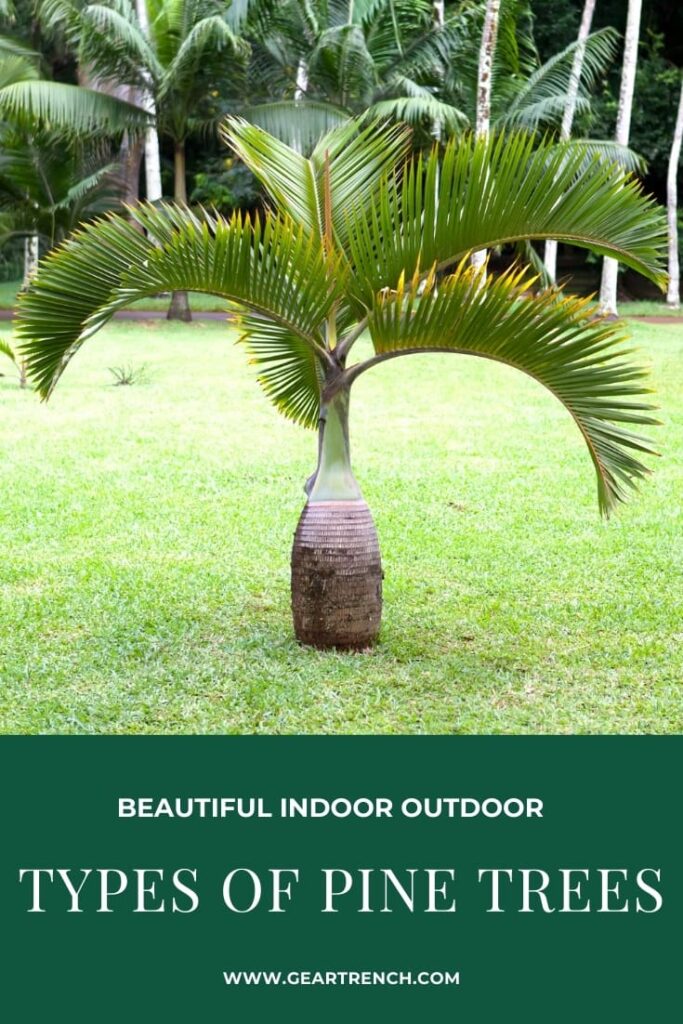
Don’t forget to share this post

